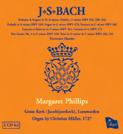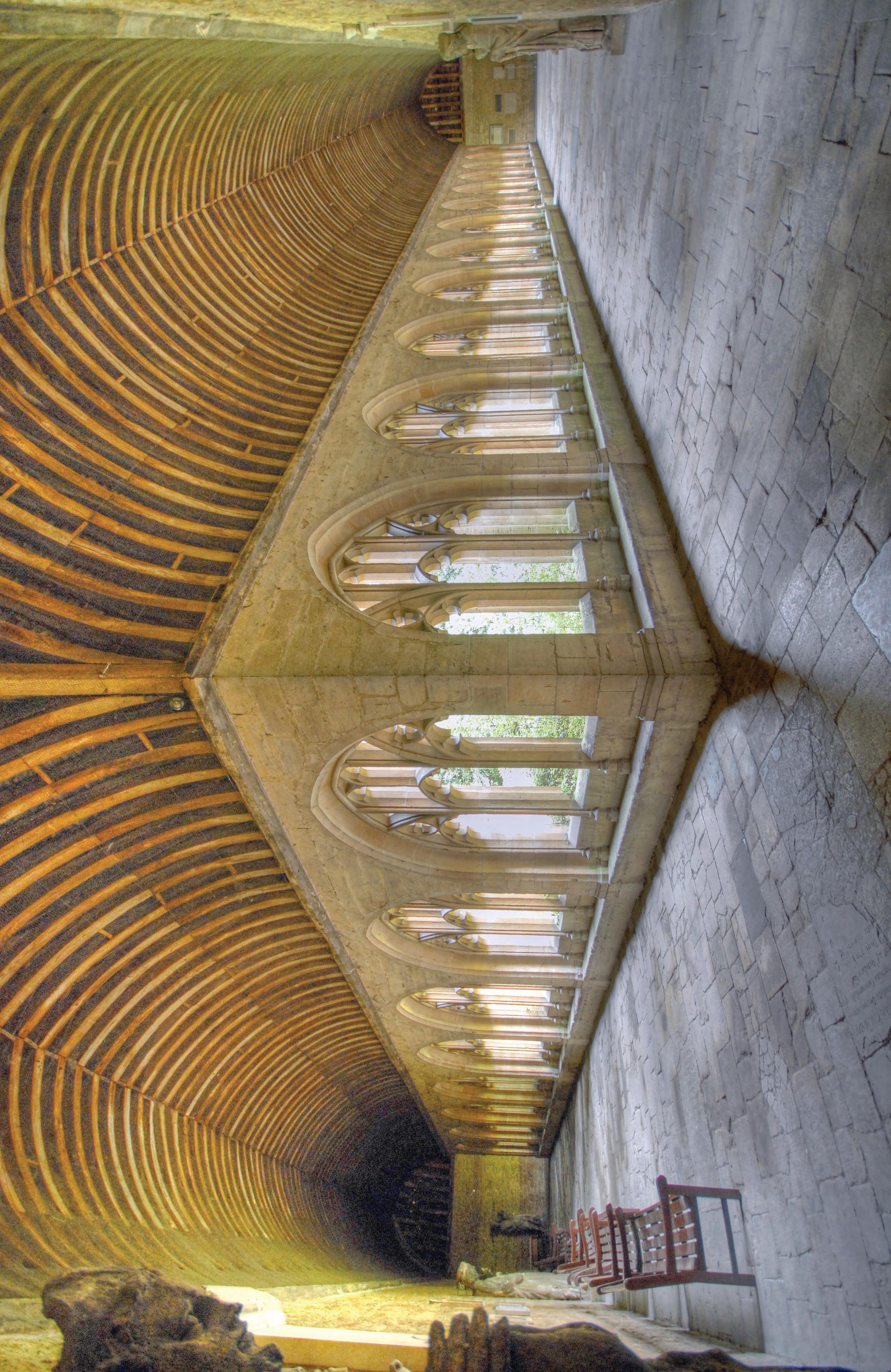C CATHEDRAL MUSIC

















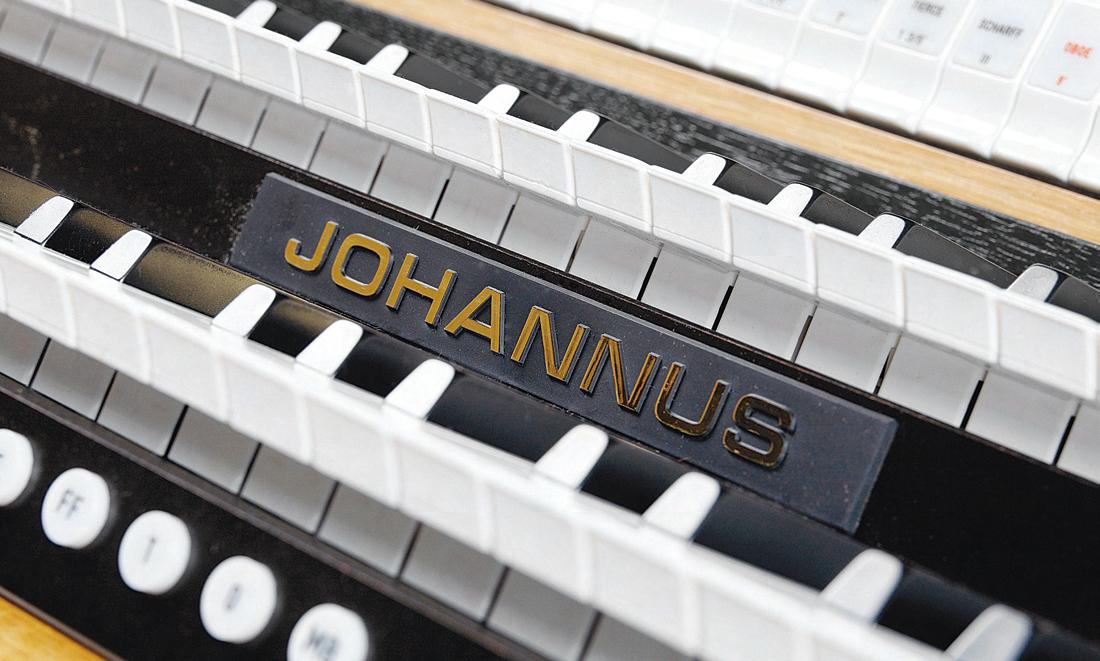
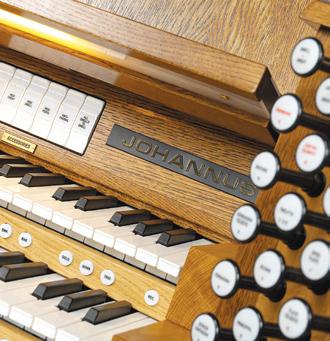
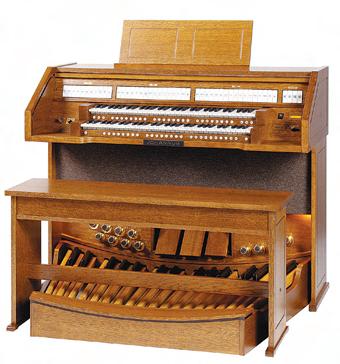

CATHEDRAL MUSIC is published twice a year, in May and November
ISSN 1363-6960 MAY 2012
Editor Mrs Sooty Asquith, 8 Colinette Road, London SW15 6QQ sooty.asquith@btinternet.com
Deputy Editor Roger Tucker
Editorial Advisers
David Flood & Matthew Owens
Production Manager
Graham Hermon FCM email info@fcm.org.uk
Website www.fcm.org.uk
The views expressed in articles are those of the contributor and do not necessarily represent any official policy of Friends of Cathedral Music. Likewise, advertisements are printed in good faith. Their inclusion does not imply endorsement by FCM.
All communications regarding advertising should be addressed to:
Roger Tucker, 16 Rodenhurst Road, London SW4 8AR 0208 674 4916 cathedral_music@yahoo.co.uk
All communications regarding membership should be addressed to: FCM Membership, 27 Old Gloucester Street, London, WC1N 3AX Tel: 0845 644 3721 International: (+44) 1727-856087 info@fcm.org.uk
Every effort has been made to determine copyright on illustrations used. We apologise to any individuals we may have inadvertently missed. The Editor would be glad to correct any omissions.
Designed and produced by MYPEC
The Old Pottery, Fulneck, Pudsey, Leeds, LS28 8NT 0113 255 6866 info@mypec.co.uk www.mypec.co.uk
Cover photographs
Front Cover
Winchester
Technology bringing tradition to life

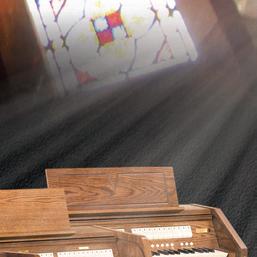
New Cadet organs designed exclusively for the UK market
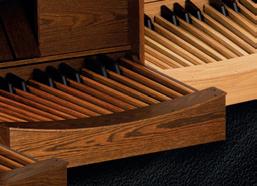
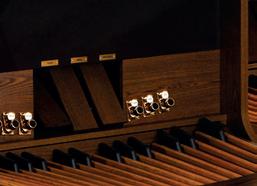
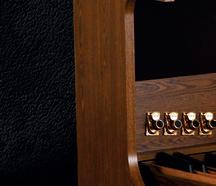
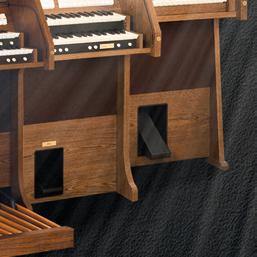
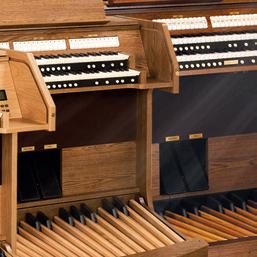
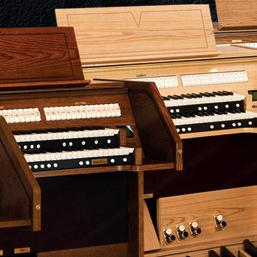
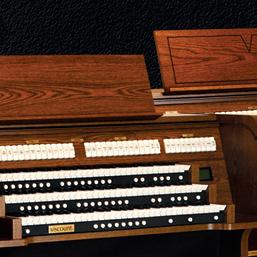
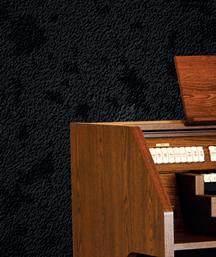
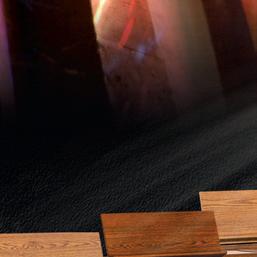
See and play the new range in Bicester or at regional dealers
Irvine ...............Soundtec Organs






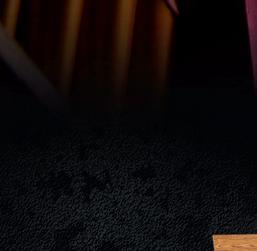







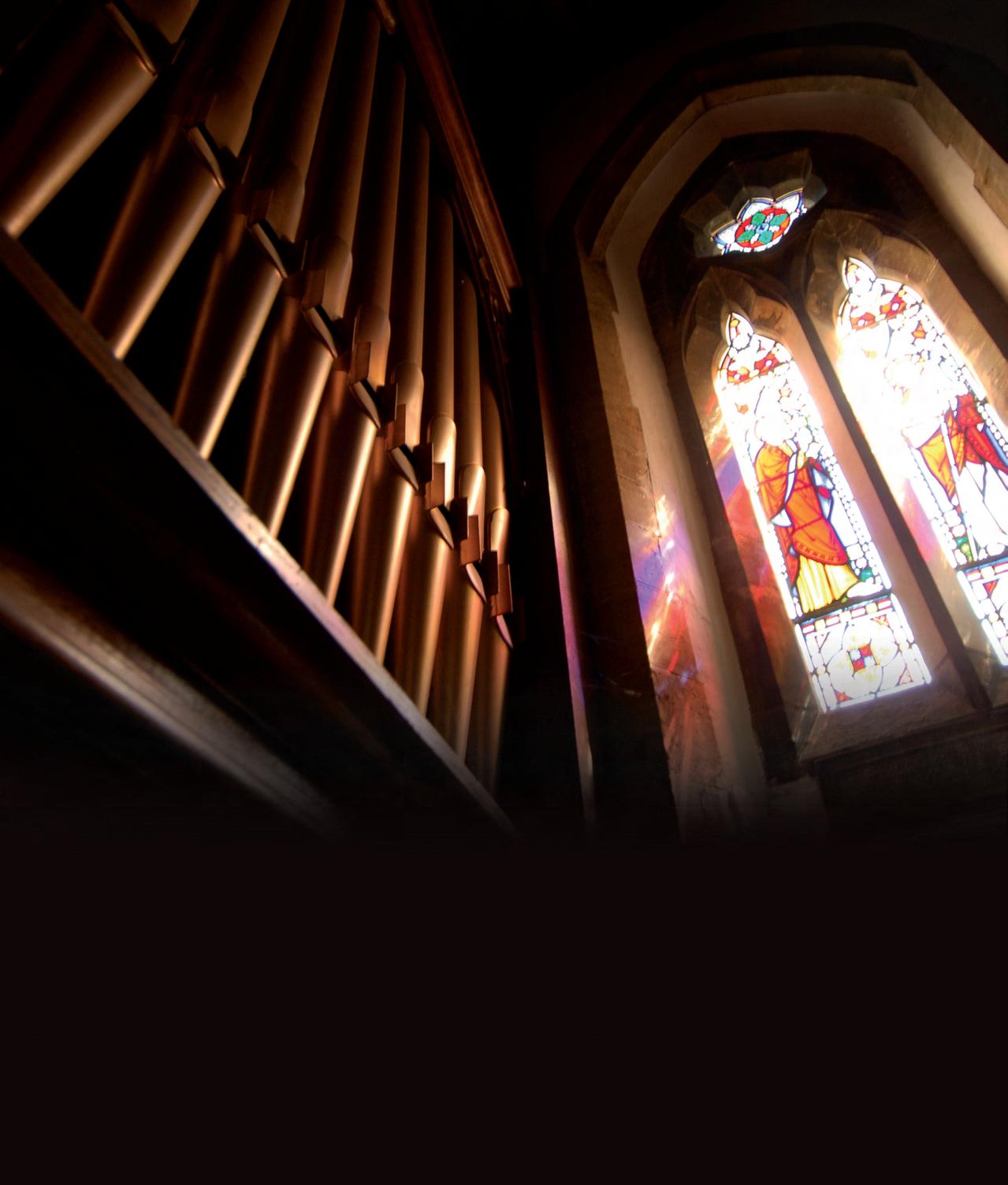
Edinburgh .......Key Player
Morecambe ....Promenade Music
Porthmadog ...Pianos Cymru
Leigh ...............A Bogdan Organs








Swansea .........Music Station
Norwich ..........Cookes Pianos
Bandon ...........Jeffers Music

Highbridge......WM Organs
Exeter ..............Music Unlimited












Ballymena.......Nicholl Brothers
Prices starting at just £3,000 (including VAT)




EDITOR From the




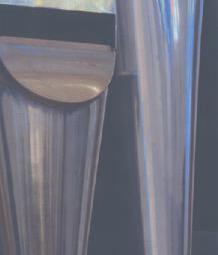
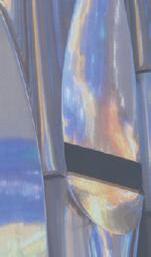
his month’s magazine is full of good things. We have thoughts by New College’s excellent Edward Higginbottom on the training of boy choristers; a primer on improvisation by Trinity Laban Conservatoire and Birmingham Conservatoire’s Ronny Krippner; and a panoramic view of choir schools by the one-time head of the Choir Schools’ Association Dr Brian Rees. Another Winchester stalwart, Andy Lumsden, is in conversation with FCM member and occasional CM contributor Richard Osmond. Of course our AGM and Gathering in June are based in Winchester –perhaps these latter articles will inspire you to come to both!also negotiated a discount of 20% off their recent recording for its members (details on p65).
You can read about the Leeds cathedral approach to musicmaking – wide ranging and diverse – from Ben Saunders and Thomas Leech, and David Davies writes on Léon Boëllmann, a composer who deserves to be known for more than the Toccata from his Suite gothique.
Also in June, for those of you who require something a little different, is a Chicago-based organ crawl (p49), at which FCM member Constance Bradley is offering tea to those brave souls willing to make a pilgrimage across the Pond for the occasion. She can be reached through the Editor’s office, should you decide to take up the invitation.
For pilgrimages of a different sort, Harry Christophers’ group The Sixteen is making its annual national tour of English cathedrals from York to Canterbury. These journeys have been so successful that they are now central to The Sixteen’s annual artistic programme of pre-Reformation sacred music. FCM has
On another subject altogether, it will most likely seem odd to you that I am already thinking of Christmas. But the next magazine will not be published until November, of course, so I would like to urge you all now to consider buying your cards from FCM this year. We will have our usual excellent and varied selection (details will be available towards the end of summer), and all the money raised goes towards our grants programme.
Looking ahead a little less far, do not forget to book tickets to one of the many festivals of music around the country – see what to expect from this year’s Proms, the City of London Festival and the Southern Cathedrals Festival on p55. Support for these festivals is always welcome, and you will hear very good music besides.
Sooty Asquith
ARRANGED BY REBECCA GROOM TE VELDETwo books of 28 practical settings for the church’s year
wo books of 28 prac T forthechurch’syear
CCA TE VELDE s tical chs year for the chur
These books o ove in hymn tunes will pr
services. The short easy e based ar e ideal for use as serv ar communion meditation e postludes. The styles ar


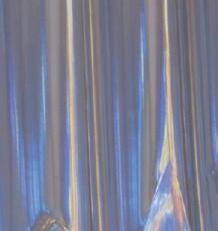

e of miniatur oughout nvaluable thr e to en epertoir esh r for fr pieces 30 seconds on well-known hymn tun od vice interludes, intr fertorie eludes, of s, short pr varied some a
These delightful books of miniature arrangements of hymn tunes will prove invaluable throughout the church year to organists looking for fresh repertoire to enhance services. The short easy pieces (each 30 seconds to a minute long) are based on well-known hymn tunes and are ideal for use as service interludes, hymn introductions, communion meditations, short preludes, offertories, and postludes. The styles are varied some settings are meditative, others more lively.
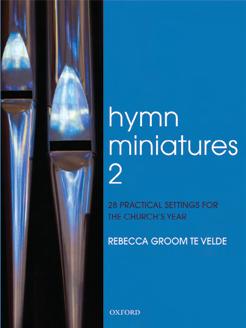
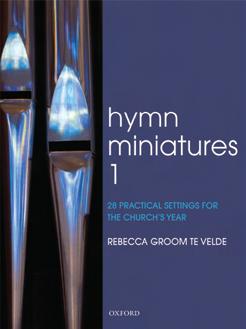
of church hance to a es and uctions, es, and are e meditative, others mor eface sug Includes a pr gical in es, a litur miniatur
gesting th dex, and an index of first
Includes a preface suggesting how best to use the miniatures, a liturgical index, and an index of first lines. £11.95 each
Book 1: 978-0-19-537712-5, Book 2: 978-0-19-338141-4
Book 1: om music shop vailable fr A Av or
Book 2: 978-0-19-338141-4
Available from music shops or direct from OUP, phone (0)1865 452630, or email music.orders.uk@oup.com
e lines om www.oup
www.oup.com/uk/music

 David Davies
David Davies
The year 2012 marks the sesquicentennial anniversary of the birth of the Alsatian composer and organist Léon Boëllmann (1862-1897). Very much a product of his time, yet a gifted exponent of his art, his life and work reveal a man of many parts.
Boëllmann’s legacy comes to us most notably in the form of his Suite gothique for organ, the concluding Toccata of which has associated him (somewhat unfairly) with any number of ‘one-hit wonder’ composers. The quality of his output suggests that his place in the eyes of history might have been anchored more firmly had he not died so tragically young, at the age of 35. Both his relatively short creative lifespan and his adoption of a conservative musical language have meant that his life was never quite brilliant and interesting enough to warrant an exhaustive biography; this, perhaps not least, because he lived at a time in the history of French composers that was dominated by giants upon whose shoulders several less distinguished – although mightily competent – musicians were to stand. Thus he belongs to that group of specifically Parisian musicians who stood at the juncture of late-Romantic and Impressionist styles.
The reaction against Wagnerian tendencies in the last years of the nineteenth century which heralded a new age of musical expression failed to interest Boëllmann, whose adoption of the comfortable style of the Belle Époque (with his cap set more towards the world of Wagner rather than towards the emerging, daring modernism of the time) went hand in hand
with his sense of progressing an established tradition. In his music one only hears occasionally the kind of chromaticism that challenged the tonal ear, and his harmonic language is, for the most part, rooted in the mould. It is tantalizing to speculate whether he would have ploughed a musically progressive or reactionary furrow had he lived longer; certainly, many of his melodies are shot through with the same sense of elegance and nobility one hears in Edwardian music, although, of course, his tone world cannot come from anywhere other than south of the English Channel.
Boëllmann’s chronology is reasonably straightforward: he was one of fourteen children born to Antoine Boëllmann and Marie-Hortense Brazis in the Upper Rhine. In 1875 he was admitted to L’École de Musique classique et religieuse, an academy
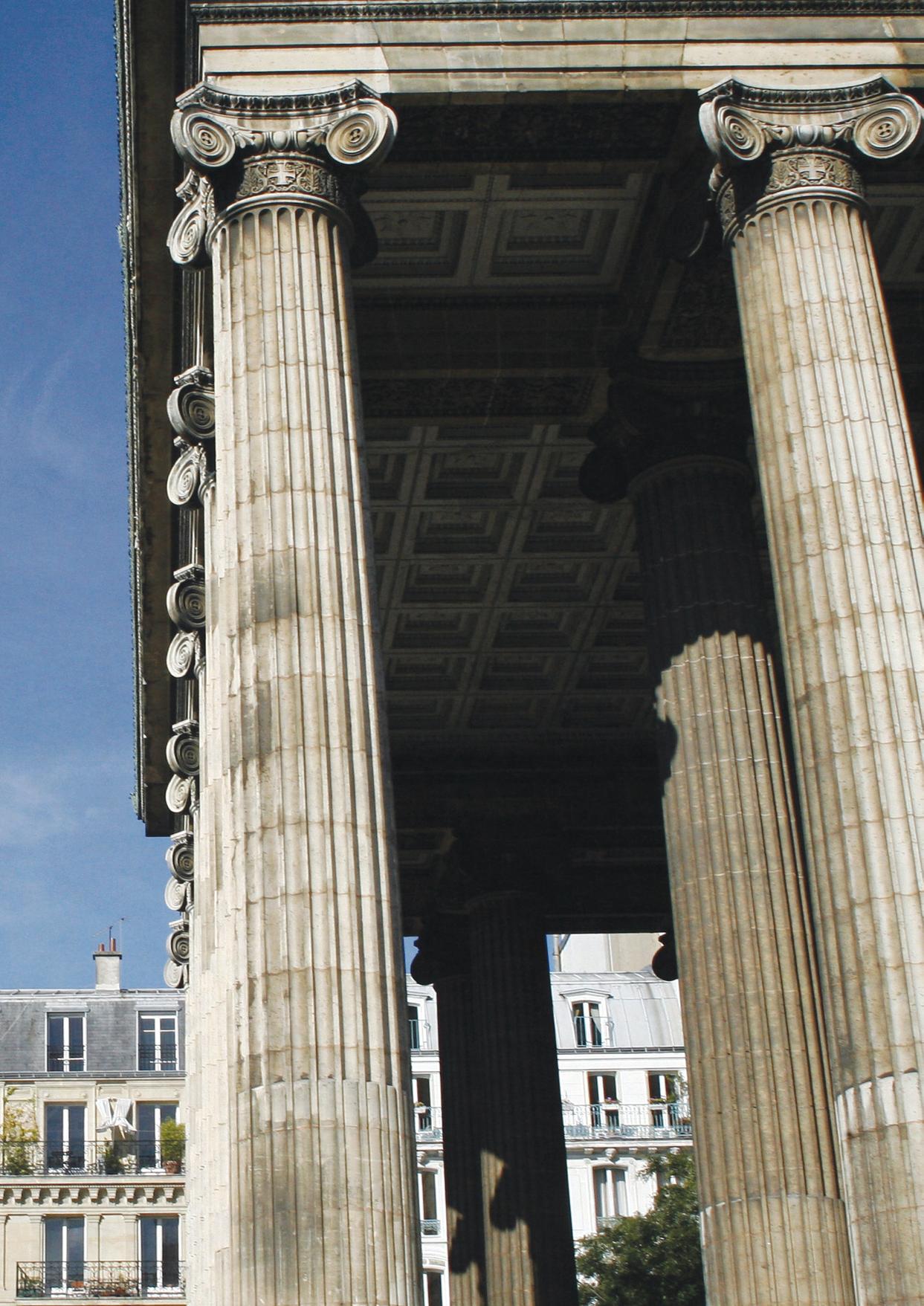
more ordinarily named after its founder, Louis Niedermeyer (1802-1861). This would have been a period of some personal challenge for Boëllmann who, having lost his father in 1870 and his mother in 1878, moved to Paris against the backdrop of advancing bellicose unrest in Europe, an unrest that ultimately led, of course, to the outbreak of the First World War.
Boëllmann’s tenure at the Niedermeyer sealed both his professional and personal life. It was here that this ‘quiet and accommodating youth’ – in the words of the Principal – came into contact with Eugène Gigout, and their names would afterwards be forever linked. Initially, Boëllmann studied harmony and piano with Gigout, le maître, and received organ tuition from Clément Loret. Composition lessons were taken
with the then director of the Niedermeyer, Gustave Lefèvre, who described Boëllmann’s talent as ‘giving promise of a brilliant career’. Ever the outstanding student, he was awarded the Premier Prix in organ, counterpoint, fugue, plainsong and composition, and was described as Gigout’s disciple favori In 1885 he married Louise Lefèvre, Gustave’s eldest daughter, and became a notable figure on the Parisian musical scene, connecting himself via marriage and professional ability to a network of powerful musicians.
Upon graduating from the Niedermeyer on 27th July 1881, Boëllmann assumed the assistant organist position at the church of SaintVincent-de-Paul, that impressive basilical church in the tenth arrondissement by the architects Lepère and Hittorff. The titulaire at Saint-Vincent at the time was Henri Fissot, one of whose predecessors was Louis Braille, inventor of the Braille system. In 1887 Boëllmann succeeded Fissot on the recommendation of Aristide Cavaillé-Coll, Charles Gounod, and Léo Delibes. The church contained two fine organs by Cavaillé-Coll: the 1853 orgue de chœur with 20 speaking stops, and the large, three-manual grand orgue of 1852 with 47 stops, its distinctive façade having been designed in collaboration with Hittorff. Cavaillé-Coll was particularly proud of his grand orgue in Saint-Vincent, the immaculate and beautiful engravings of this instrument prepared by his firm bearing testimony to that (see lower picture). The inaugural concert was given by the Belgian organist, Jacques Lemmens, the founder of a method of virtuoso pedal playing that is still taught to this day.
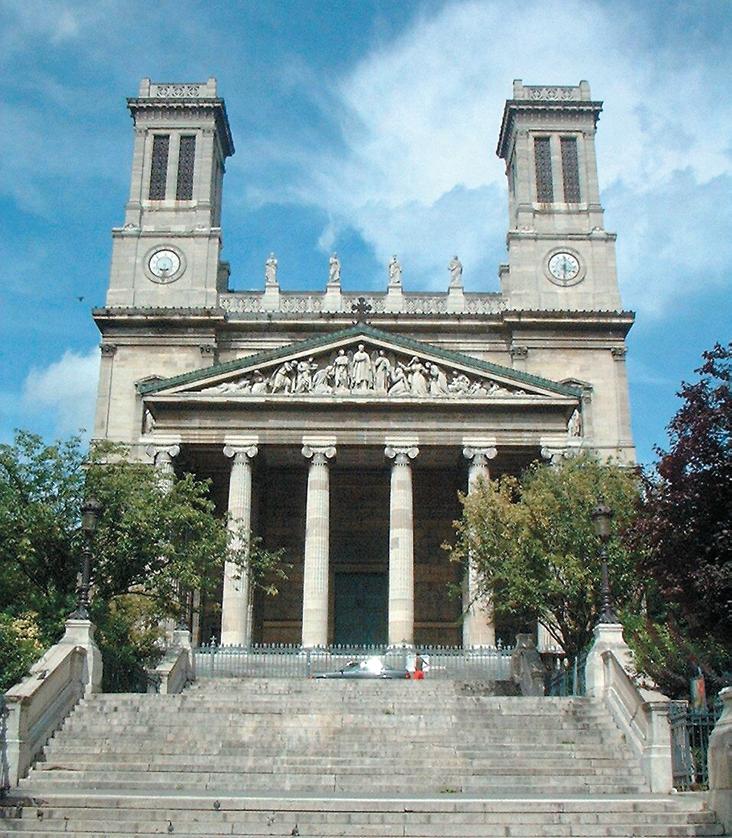
Unusually, the main organ at SaintVincent was spread across a classical arch, and had shutters for the expressive division made from glass rather than wood; it also featured a particular kind of wind-chest action more commonly found in Walcker organs in Germany. The aesthetic changes in organ design in the next half century were to be considerable, and so in 1894 Cavaillé-Coll rebuilt the instrument. Fissot had supported the need for renovation and rebuild much earlier, but the vicissitudes of the Paris Commune had forced prices to inflate, and it was only latterly that the parish authorities could afford the work. The inaugural concert on the restored instrument took place in 1894, with Boëllmann performing alongside Widor, Dubois, Gigout and Guilmant. Now listed as an historic monument, the organ case remains one of the glories of the Parisian organ scene, and is an outstanding example of nineteenth-century engineering. Both organs at Saint-Vincent were sources of inspiration to Boëllmann, whose first organ
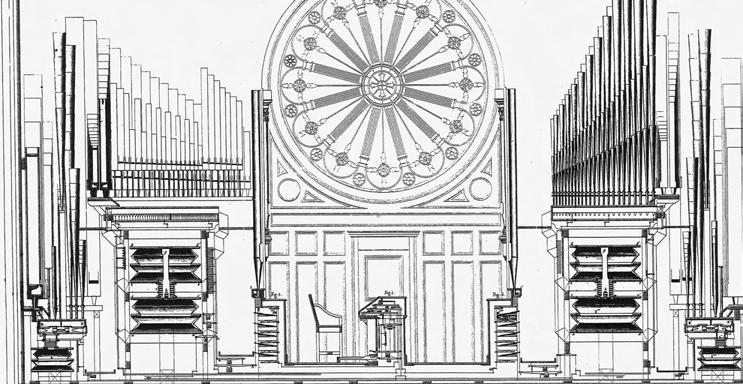
works clearly specify registrations pertaining to the orgue de choeur there. He was known as a talented improviser, and was described as ‘a sensitive executant who coaxed pleasing sounds out of recalcitrant instruments’.

Boëllmann’s output for the organ spans his whole career, a career launched when his Offertoire sur des Noëls won first prize in December 1882 at the Societé internationale des organistes et maîtres de chapelle. The competition was judged by Dubois, Franck and Guilmant, among others; the citation at the adjudication stated ‘l’unanimité, avec félicitations, du jury’ Dedicated to Gigout, the work combines two Christmas melodies, and it is here that one sees the tendency towards homage that seems to inform so much of Boëllmann’s music. Some writers cite Mendelssohn as an influence, and, overall, it is easier to trace a line from the past as far as Boëllmann than it is to suggest anything particular about his style that was to break new ground. At most, one can see in Les Heures Mystiques (two volumes, 1896), how Boëllmann’s lighter movements might, perhaps, prefigure the scherzos of Vierne and the intermezzos of Widor. Nevertheless, his Suite gothique, a work whose longevity has placed it firmly in the repertoire, deserves some closer discussion.
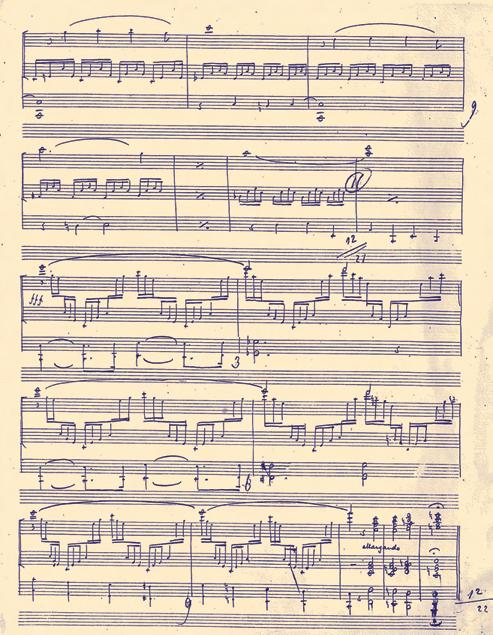
Boëllmann published the work in 1895, the term gothique carrying with it a faintly pejorative air in the sense that it evoked a conscious resurrection of the past. Just as the distinction between ‘gothic’ and ‘gothick’ was so critical in British architecture of the period, so, too, is there a sense of the weight of history when the term is used in musical titles. Satie’s Danses gothiques of 1893, and Widor’s Symphonie gothique of 1895 raise the same ideological issues. It has been suggested that the title was an afterthought put forward by the publisher Auguste Durand, as a strategy to make the hitherto-named Suite pour orgue more marketable. Whatever the reason, the relationship between the title and the work was most aptly described by d’Indy, who wrote ‘ce n’est pas le style qui est ancien, mais seulement la forme, ce qui est bien different’.
The French musicologist and organist Norbert Dufourcq (who coined the title of this article) makes reference to the impressions left upon Boëllmann by the music of others: he proposes, for example, that the first movement of the Suite fuses the worlds of J S Bach and Franck, and that the second movement looks over its shoulder at Gigout’s Grand Chœur Dialogué, but also recalls, in its clean, classical proportions, the worlds of Marchand and Clérambault. This second movement was written with the antiphonal capabilities of the grand orgue at Saint-Vincent in mind, and the composer intended a spatial effect inspired by a particular instrument in a particular place. The third movement, a beautiful, limpid and delicate Prière à Nôtre-Dame evokes the vast space of Nôtre-Dame in Paris: a common misconception is that it is a prayer to the Virgin, yet this movement pays homage more to the French architect and theorist Viollet-le-Duc than it does to Our Lady. The final movement is a tightly-coiled spring: a little aggressive and menacing, maybe, but a piece whose formal symmetry is faultless, and whose consistency of harmonic language is a perfect model for study.
Boëllmann cannot have been immune to the stylistic musical soundscapes of his time, and the years 1850-1900 saw a hugely significant shift in French music. His own music was played at the Societé Nationale de Musique alongside that of Alkan, Chabrier, Chausson, Debussy, Dukas, Duparc, Fauré, d’Indy, Lalo, Ravel and others, the most far-reaching effects of whose music would stretch well into the new century. The
main items of Boëllmann’s works are six sacred motets, eighteen songs and four vocal works, five orchestral pieces, five chamber pieces and some fifteen works for the piano. His complete organ works comprise some 180 pages of music, of which – in addition to those already mentioned – the most substantial works are the Douze Pièces (1890), the Deuxième Suite (1896) and the Fantaisie (published 1898). Some of the orchestral pieces can be seen as taking their inspiration from other contemporary works: his 1893 Variations symphoniques for cello and orchestra (op. 23) holds up a mirror to Franck’s Variations symphoniques for piano and orchestra written eight years previously, and the organic, through-composed aspects of composition that were beginning to alter the formal precedent of multi-movement works at the time were clearly of
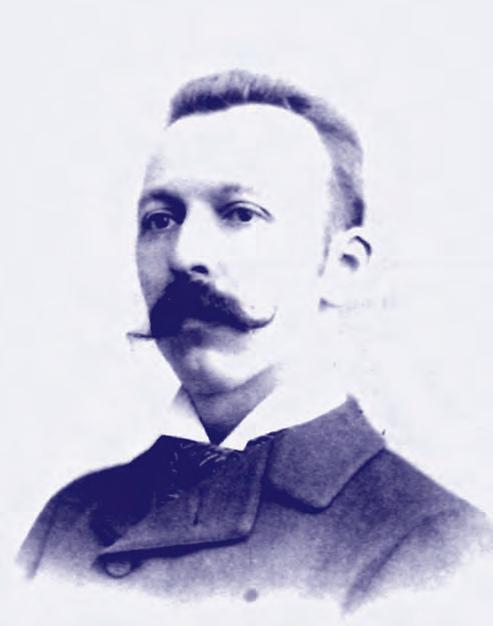
interest to Boëllmann. His opus 24 Symphonie en fa was given its premiere at the conservatoire in Nancy in 1894, directed by the renowned musician Guy Ropartz, and his Fantaisie dialoguée for organ and orchestra was performed to acclaim in Paris, London (at the Queen’s Hall) and Holland. The manuscript of an unpublished, two-act opéra comique exists in the Bibliothèque nationale de France, demonstrating his versatility as a composer for whom the organ was clearly important, although not exclusively so.
As a figure about town, Boëllmann enjoyed the salon life of Paris, his sharp wit and humour making him an attractive and popular guest. Just as others in his musical circle were known for their pithy commentary on life and music, with many a scathing bon mot, so, too, was Boëllmann recognised for his observational talent. He wrote for the journal L’art musical, either under the pseudonym le Révérend Père Léon or un garçon de la Salle Pleyel. His writings also appeared in Le guidemusical and La vérité. That he was referred to occasionally as Grand Léon speaks for itself.
Boëllmann’s death in 1897 was quite unexpected in one so young. Some sources give the cause of death as ‘une maladie pulmonaire’, while others suggest tuberculosis. And it was to be another nine years after Boëllmann’s death before an effective vaccine against TB was to be developed in Europe; he had, however, contracted pleurisy some years before, and it is, perhaps, most likely that it was this condition, left untreated, that led to the complications resulting in his death. His widow only survived him by one year, dying at the age of 32 in 1898, with their three children being adopted by Gigout thereafter. The eldest, Marie-Louise Boëllmann-Gigout, a music teacher
OBE, FRAM, FRSCM
Organist & Master of the Choristers at Chester, and then, Gloucester Cathedral
With a foreword by Dr Roy Massey
Now in paperback
15 illustrations –Price £12 p&p FREE
The Revd Alan Charters
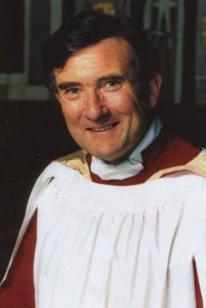
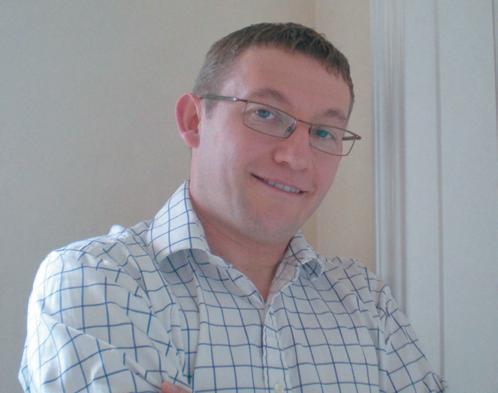
Crescent House Church Street
TALGARTH
Brecon LD3 OBL
and coach, lived through the horrors of the Vichy government until her death in 1977. She was six when her father died.
With the relatively recent appearance of an Urtext edition of his complete organ works, perhaps we can hope to hear some of Boëllmann’s lesser-known pieces played this year. Certainly he deserves to be known for more than the Suite gothique.
David Davies is Assistant Director of Music at Exeter Cathedral. Having been organ scholar at Magdalen College, Oxford, he took a Master’s degree in organ performance at Yale University, and subsequently spent six years as Sub-Organist and Director of the Girls’ Choir at Guildford Cathedral. During this time he was adjunct faculty at the University of Surrey, where he taught techniques of musical composition.
The only specialist Choir School in the UK
James O’Donnell Organist and Master of the Choristers
Jonathan Milton Headmaster
All boys receive a substantial Choral Scholarship
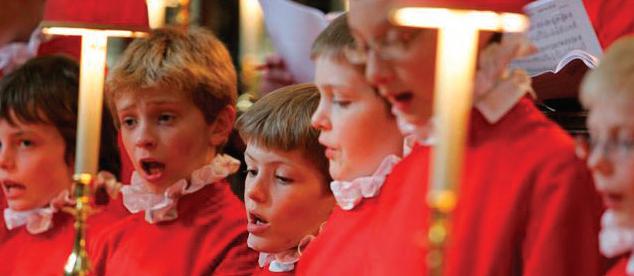
Why not come for an informal audition?
(Boys aged 7 or 8)
Details from:
Westminster Abbey Choir School
Dean’s Yard, London SW1P 3NY
Telephone: 020 7222 6151
Email: headmaster@westminster-abbey.org
www.westminster-abbey.org
After many months of planning and preparation, 17 choristers and 19 adults of the Gloucester Cathedral Choir left Gloucester for the start of a tour to Cape Town.
All our arrangements were made by our tour company, Norman Allen Group Travel, which co-ordinated accommodation, food and visits to the tourist attractions as well as offering free public liability insurance for our group leaders (something very necessary in this day and age). Arriving in Cape Town, we were met by Father Nolan Tobias, rector of St Francis Church, Simonstown, and Ashley Grote, our Assistant Director of Music, who had flown out three days ahead of the group.
The gentlemen of the choir had host accommodation in Cape Town and the choristers and chaperones, including the Director of Music, settled into the somewhat basic dormitory-style accommodation at ‘Water’s Edge Pre-Primary Accommodation Centre’ for the first 3 nights. The ‘Rocklands Adventure Centre’, for the remaining six nights was still dormitory style but practical and comfortable and engendered a good team spirit.
During the 10 days in the Cape peninsula there was only one day without a concert or a service. The audiences, diverse in their background and cultures, greeted the choir warmly and with generous hospitality, and showed a keen interest and enthusiasm for the music. The cathedral choir sang at St Andrew’s Church, Cape Town; St Francis’ Church, Simonstown; St George’s Cathedral, Cape Town; Endler Hall, Stellenbosch University; St Clare’s Church, Ocean View and in the community hall in Lwandle township. Canon Neil Heavisides, Precentor, preached at the Eucharist in St Francis’ Church and led Evensong in St George’s Cathedral. A number of the concerts were joint ventures with local choirs, enabling contact and integration for the children and adults of each choir.
The informal concert in Lwandle, where the Uzuko Gospel Choir sang and listened to us in turn, was followed by a tour of the museum. Learning about the township’s recent history gave a good background to the walk around the area. This was one of the most profound experiences of the tour for many of our group, one which left the Director of Music wishing to create a link with their choir to support their musical endeavours.
When not singing, the boys and gentlemen visited many of the attractions in the Cape peninsula, including Table Mountain, the National Botanical Gardens, Hout Bay seal island, Cape Point, Boulders Beach penguin colony and Cape Town waterfront. Whilst the choir gentlemen and Precentor were tasting wine at the Spier Estate, the choristers visited the estate’s own highly successful Cheetah Project, where they enjoyed being filmed as part of National Geographic’s TV series Cheetah Diaries!

Although the choir only undertake a major tour once every three years and each one is memorable in different ways, this one will stay with us all for many years to come.
Helen Sims, Choir Tour Manager, Gloucester Cathedral
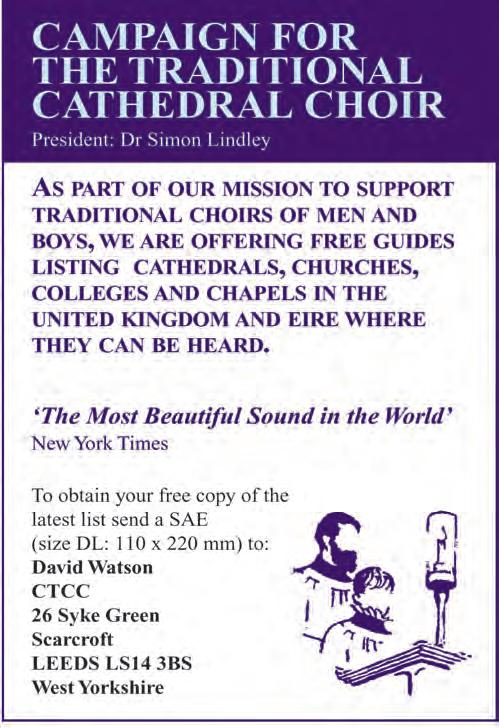

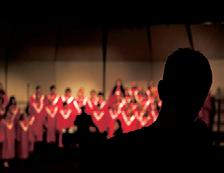


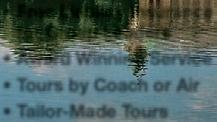


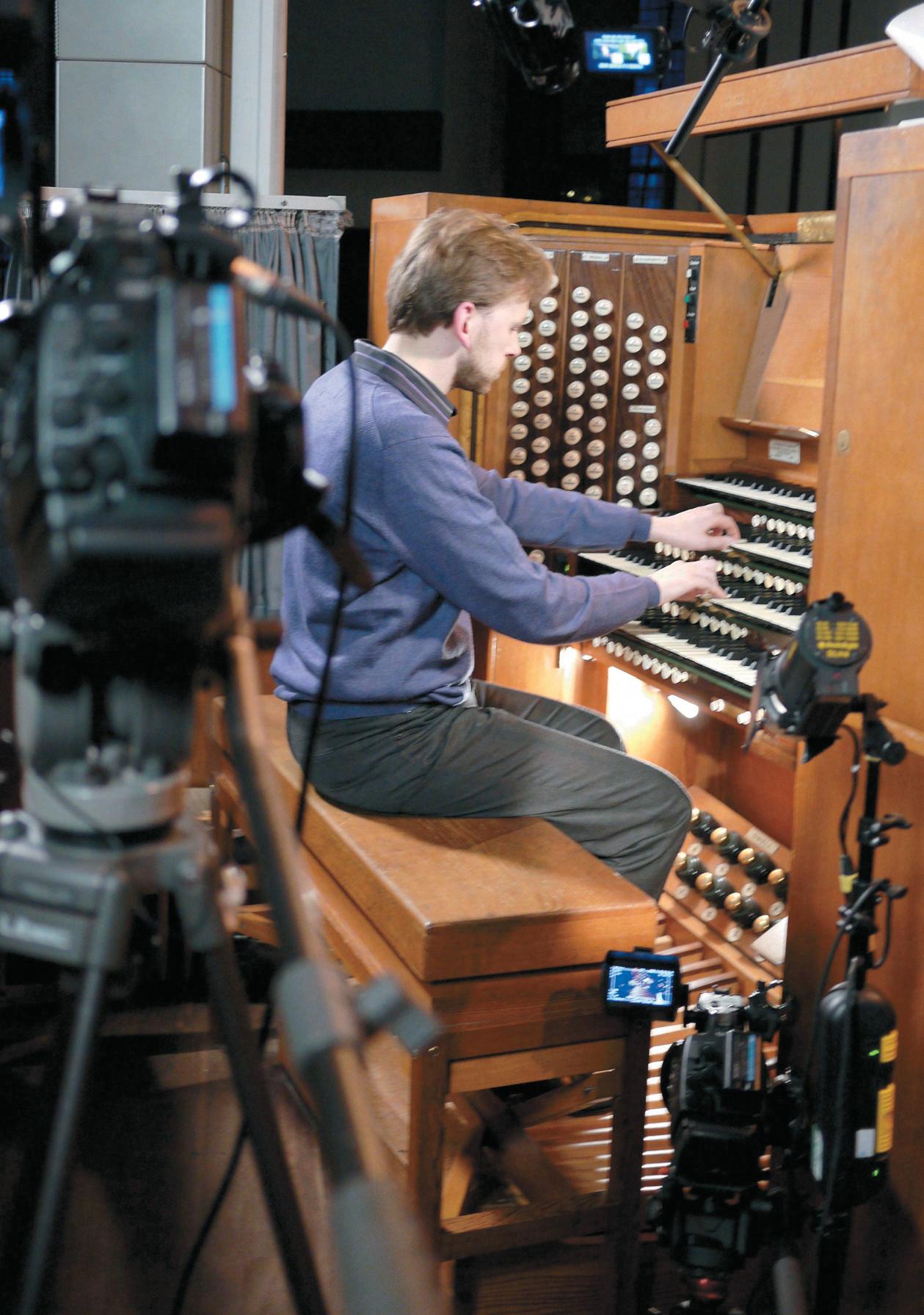
It is probably true to say that improvisation is one of the most challenging and, at the same time, most fascinating disciplines of the organist’s art: being able to make up music on the spot, seemingly off the cuff, instantaneously. Once part of every professional musician’s training, the art of musical improvisation disappeared almost entirely towards the end of the nineteenth century, and it is arguably organ and jazz music which kept it alive until today.
How does the concept of improvisation work? Is it really just like a Monopoly game (as Charles Waters suggested1) where ‘success’ is only a question of luck and/or talent, or is it a skill which everybody can learn? In short, improvisation can be studied and can be practised, but first let us look at organ improvisation in general and its role in Britain in particular.
Over the centuries, different national schools of improvisation have developed, probably due to the specific liturgical requirements of each country. Organists in Catholic France, for instance, tend to improvise on Gregorian chant in a variety of contrasting modal styles whereas Lutheran organists in Germany focus primarily on chorale improvisation techniques. In the English cathedral tradition, there is an emphasis on ‘atmospheric’ improvisations before Evensong (as exemplified in Herbert Howells’s organ output), Gospel fanfares and hymn extensions, all of which have the power of lifting people’s minds and enhancing the beauty of the Anglican liturgy. Over recent years, improvisation styles seem to have become much more varied and ‘international’ in flavour in Britain. Globalisation and the development of recording technologies have had a huge impact on the way British organists improvise today and may well have helped initiate what could be considered a renaissance of organ improvisation in the UK.
At the beginning of the twentieth century, British organists regarded improvisation as a useful tool to cover gaps in church services, but certainly not as an art form. There was a common understanding that young organists would naturally ‘pick up’ the know-how of improvisation if they had the talent.
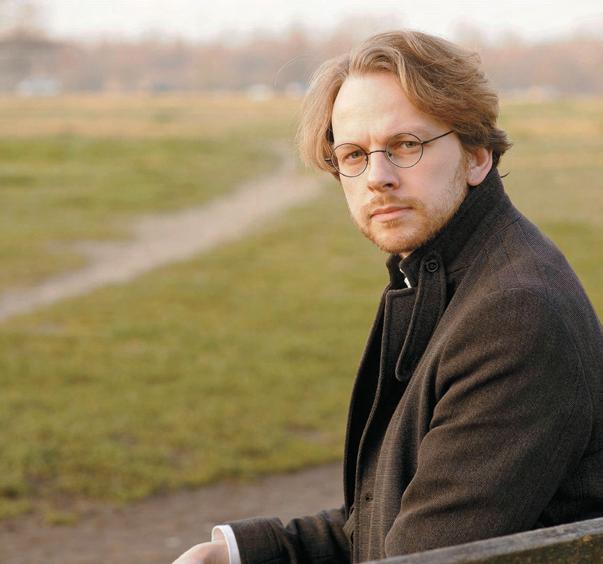
Some even suggested that improvisation is not meant to be studied at all as ‘the principal object of improvisation is the giving scope to the personal mood of the moment.’2 It doesn’t really come as a big surprise, therefore, that the standard of improvisation in general was not very high – although there were some noteworthy exceptions (Sir John Stainer, for instance, used to extemporise voluntaries in sonata form at St Paul’s Cathedral!). The French organist-composer Camille Saint-Saëns tells us why improvisation was at such a low ebb in Britain during the first half of the twentieth century: ‘You have many fine organists in England, but few good improvisers. It is an art you do not sufficiently practise or study, and it requires to be practised or studied... you have not worked on it as we have in France, where the art of improvisation has always been a feature of the organ class.’3
Today, more than a hundred years later, it is amazing to see how dramatically things have changed for the better. The majority of British conservatories now offer tuition in organ improvisation as a discipline in its own right. SophieVéronique Cauchefer-Choplin, titulaire adjointe of the GrandOrgue at Saint-Sulpice in Paris, has recently been appointed Professor of Organ at the RCM and teaches improvisation there regularly. The fine tradition of improvisation teaching at the RAM continues under Gerard Brooks (Director of Music at Westminster Central Hall) and the writer of these lines takes great pleasure in passing on this crucial skill to the organ students at Birmingham Conservatoire and Trinity Laban College of Music, London. The RCO, as well as the RSCM, regularly run courses for organists of all ages and abilities which focus either entirely, or at least partially, on developing ex tempore playing skills.
Improvisation as a form of music-making without any premeditation seems to mean different things to different people. For those who allow absolutely no preparation, the concept of practising improvisation doesn’t make any sense either as this is already a way of preparing one’s performance. Others, on the other hand, see no problem in applying prepared building blocks, amongst them J S Bach. Like all musicians in the Baroque period, Bach regarded improvisation as an extemporaneous composition: he ‘quilts together thorough-bass, composition, and improvisation as part of the same fabric of musicianship.’4 Bach’s Arnstadt Chorales are a perfect example of sketched-out improvisations and I believe that using blueprints is a very effective way of learning improvisation, albeit not the only one.
As a teacher of organ students at both school and conservatory level, I have come to realise more and more that learning improvisation starts with practical harmony, or in other words: harmonising hymns (Bach would have also added figured bass here). The Victorian improviser Frank Joseph Sawyer (1857-1908) states that students should ‘take the melodies of a thousand hymn tunes, and harmonise them at piano or organ. In this way you will learn how to use chords. It is this knowledge which is so necessary in extemporising.’5 However, a profound knowledge of keyboard harmony, counterpoint and musical form doesn’t automatically produce a good improviser. What this needs is a gradual merging of all these disciplines. The following ‘improvisation lessons’ are designed as initial guidelines for those teaching organ students as well as those who wish to further their own skills, or those who simply want to understand how improvisation can work.
The quickest way of getting started with tonal improvisation is by getting to grips with playing cadences. Start with the most common cadence (I-IV-V-I) and practise it in all major and minor keys. Make sure you practise with manuals only (LH bass, RH triad) as well as manual and pedal (bass in the pedal; chords shared between both hands)
a short motific idea in the bass – otherwise, steady minims in the pedal quickly become tiresome on the ears:

This already gives you enough harmonic vocabulary for improvising short preludes. Important: always have the particular character of the piece you are going to improvise in mind (martial, sorrowful, cheerful, majestic, etc.) – it helps to get the creative juices flowing! Here is an example of the first four bars of an improvised Festive Prelude in C, based on the previous cadence exercise:
You will find that placing a one-bar pattern such as this on top of your cycle of fifths will come naturally to you very quickly. And what a great way of extending your Festive Prelude from Lesson 1!
The asterisks indicate passing notes which help to keep the voices moving. Listen carefully to your playing and try to memorise this phrase as quickly as possible. By doing that, you automatically develop two crucial key skills for improvisation: a creative inner ear and a good memory. If we think of the first four bars as being a ‘question’, then make up the ‘answer’ by repeating the first four bars but changing the ending slightly so that it finishes on the tonic:






Any church organist worth his salt needs to be able to improvise on hymn tunes. Creating an introductory voluntary before the service based on the opening hymn or making up an ‘emergency’ extension after the offertory hymn are just two of many possible situations where the organist has to engage creatively with hymns. The importance of being able to harmonise hymns has already been mentioned. However, there are ways of using the written-out harmonies of hymn books as blueprints for your improvisation (this is particularly useful for students who still struggle with harmonising at sight). For example, soloing-out the melody with your right hand on a separate manual whilst the left hand is playing the alto and tenor part on a softer manual together with the bass being played in the pedal. Take the hymn Jesus Christ is risen today (NEH 110) and have a go:
Both phrases together make up a simple, yet convincing prelude in the Baroque style! Now try transposing it up a tone to D major – it helps consolidate what you have just learned and makes you a more flexible improviser.
There are a number of useful chord progressions well worth memorising, and one of the most commonly found in Baroque music is the cycle of fifths. Again, practise the following example in different keys on manuals only as well as manual + pedal. Once you have completely mastered and internalised this chord progression, it will serve you well as a safety net in your improvisations:
This in itself is already of great practical use as you can easily liven-up your hymn playovers by bringing out the melody with a strong 8-foot Trumpet, for instance. Once you are comfortable with this way of playing, you can take things a step further: try and vary the melody by applying passing notes and auxiliary notes (the accompaniment is identical to the previous example):
Next, try and figurate the chords by ‘breaking’ them or creating passing notes between them. If possible, also include







Although you may not necessarily want to embellish the tune in your improvisations all the time, it is an important skill which requires regular practice. And again – if used with care –this can add some extra sparkle to your playovers.
Having mastered cadences (I-IV-V-I), cycles of fifths and hymn improvisation techniques, a world of possibilities in improvisation opens up. Here is the outline of a Ceremonial March on Jesus Christ is risen today which could be used, let’s say, before the service on Easter Sunday: starting off with a free section based on cadences and cycles of fifths, the first line of
the hymn is then stated (slightly varied) on the Tuba, followed again by a cycle of fifths:
I hope this article has given some helpful insights on what improvisation is, how to practise this particular art form and how to prepare your extemporaneous compositions for services or, indeed, concerts. It is a skill well worth acquiring, and a constant source of inspiration and enjoyment!
1 Waters, C., 1930. An Organist’s Monopoly: Extempore-Playing (Musical Times, Vol. 71, No. 1045 (Mar. 1, 1930), pp246-247)

2 Harding, H., 1907. Musical Form: its influence upon the art of Improvisation. (Royal College of Organists: Lectures 1907, p52)
3 Henderson, A., 1937. Memories of some distinguished French Organists. Saint-Saëns. (Musical Times, Vol. 78, pp534-536)
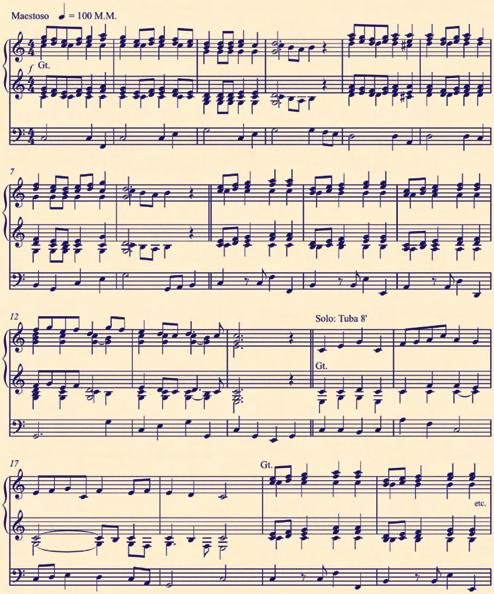
4 Ruiter-Feenstra, P., 2011. Bach and the Art of Improvisation. Vol. 1 (Ann Arbor: CHI Press, p8)
5 Sawyer, F., 1907. An Organist’s Voluntaries with special reference to those that are improvised. (Royal College of Organists: Lectures 1907, p45)
Ronny Krippner is Assistant Director of Music at St George’s Church, Hanover Square and teaches improvisation at Birmingham Conservatoire and Trinity Laban Conservatoire London. The DVD ‘ Ex Tempore – the Art of Organ Improvisation in England’ (2011), featuring improvisations by Ronny Krippner, was met with high critical acclaim (‘A phenomenally successful release,’ International Record Review) and can be purchased online at: www.fuguestatefilms.co.uk
This blueprint also lends itself to improvising hymn extensions and therefore may be of interest to all those preparing for organ scholarship auditions. A word of advice, though: do consider well the tempo of the hymn before starting out on your improvisation! It is easy to misjudge the tempo of the free section in relation to the hymn, something which is a most frustrating experience (for both player and congregation!).
It takes considerable effort to practise improvisation regularly on top of everything else, and by regularly I mean every day for at least 10-20mins. There is, alas, no quick fix: like all other skills, improvisation needs time to grow and develop.
Tuesdays at 7.00 pm
17 July Stephen Farr
24 July James O’Donnell
31 July Robert Quinney
7 August Colin Walsh
Further information available from: www.westminster-abbey.org
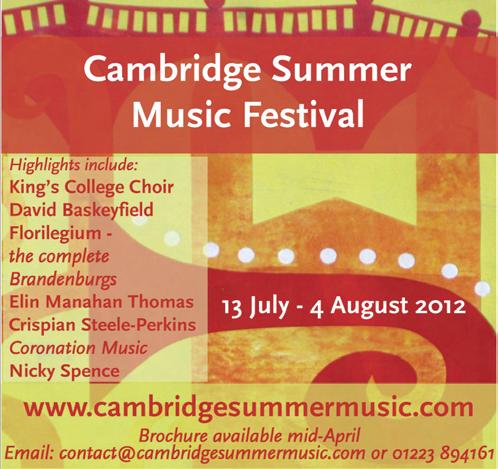
The 57th Festival of Church Music within the Liturgy at the Priory Church of St Mary Edington (near Westbury in Wiltshire)
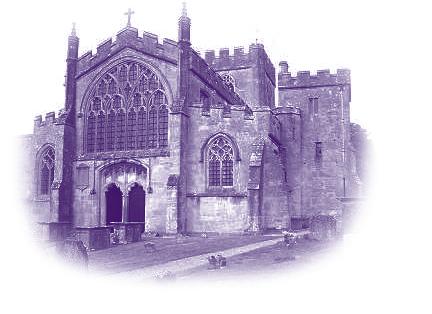
Information from John d’Arcy, The Old Vicarage, Edington, Westbury, Wiltshire BA13 4QF Tel: 01380 830512
www.edingtonfestival.org

and teaching in a school – just as any organ scholar might hope to do on a gap year over here. Many things about the cathedral in Cape Town are similar to what one might expect to find in this country: a beautiful building, a cathedral choir singing familiar repertoire, and a fine Hill organ which was moved from St Margaret’s Westminster to Cape Town in 1909. However, as any cathedral must ask itself how it should best respond to the needs of the community it serves, St George’s in Cape Town faces a particularly interesting and challenging task, namely to combine tradition with a relevance to the new South Africa with all its opportunities and difficulties.
What or who made you take up the organ?
Age: 29
Education details:
Chorister, King’s College School, Cambridge 1990-95
Music Scholar, Uppingham School 1995-2000
Organ Scholar, King’s College Cambridge, 2001-4
Career details to date (and dates):
Organist in Residence, Tonbridge School 2004-5
Assistant Organist, Westminster Abbey 2005-8
Assistant Director of Music, Gloucester Cathedral 2008-present



Did you enjoy the experience of being a chorister?
I was a chorister at King’s College Cambridge and I loved it. I don’t come from a musical family, so am indebted to Stephen Cleobury for giving me that opportunity at an early age. The training and experiences that I was fortunate to receive at King’s as a boy have, without doubt, moulded me into the musician I am now.
What was different about being an organ scholar at St George’s, Cape Town?
When I came to think about a ‘gap’ year, my priority was of course to develop and maintain a high standard of organ playing prior to going to King’s. However, at the ordination of my former choir school housemaster, the Revd Chris Chivers,

I took up the piano at the age of seven when my older sister began lessons. I became interested in the organ at church. I grew up in a Baptist Church, and on Friday evenings I was allowed to play the church organ (or at least the manuals) whilst my mother and sister were at Girls’ Brigade in the Church Hall and my father was on the way home from work! When I started as a chorister at King’s, I was desperate to take organ lessons and was allowed to do so in my penultimate year once I had reached a sufficient standard on the piano.
When you were at school, did you think you might end up where you are now?
When I went for a music scholarship audition at Uppingham School at the age of thirteen, I told the Director of Music that I wanted to return to King’s as an organ scholar. I was never swayed from that ambition, and am fortunate in that I have never wanted to do anything other than pursue a career in cathedral music. So, to answer your question, I aspired to get to where I am now, and I hope that I haven’t ‘ended up’ quite yet!
In December, I learnt W T Best’s transcription of Mendelssohn’s overture to the oratorio St Paul for an Adventthemed recital I was giving. I remember turning pages for Robert Quinney playing it at Westminster Abbey and thinking what an exciting piece it is, especially when the chorale melody Wachet auf returns triumphantly at the end.
Have you been listening to recordings of it, and, if so, is it just one interpretation or many, and which players?
I have a recording of Simon Preston playing it at the Royal
Albert Hall, and spent a lot of time wishing I could play it as quickly and accurately as he does!
Have you entered any organ competitions? What do you think their relevance is to your work as a cathedral musician?
I was a finalist in Dublin in 2005 and a semi-finalist in St Albans in 2007. My honest opinion is that organ competitions have no relevance to work as a cathedral musician. They are worthwhile things to undertake if one has ambitions as a concert organist and if the prescribed repertoire is music that one aspires to learn. However, I think that all too often, in order to succeed in competitions, one has to play in a safe and uncontroversial style that will not offend the tastes of any given member of the jury, rather than being able to express one’s own interpretation of the music (and how dull it would be if all of us played in exactly the same way!). As a cathedral organist, an interesting, varied and liturgically relevant repertoire is important, but success in organ competitions is not.
What do you like most about Gloucester (the town or the cathedral)?
I am enormously privileged to work in a building as glorious as Gloucester Cathedral. The high vaulted quire, huge Norman pillars in the nave and the wonderful acoustic are inspiring. Outside the cathedral, Gloucester is an ordinary city that is very proud of its cathedral – it is certainly not a ‘chocolate box’ cathedral city that is only for the well-to-do. We are surrounded here by a very happy, supportive and encouraging community which is wonderful for both work and family life.
Apart from your work at the cathedral, do you run or sing in any other choirs?
As part of my role at the cathedral I direct the Cathedral Youth Choir and accompany Gloucester Choral Society and the Three Choirs Festival Chorus. I also direct Ross-on-Wye Choral Society and the St Cecilia Singers, a Gloucester-based chamber choir founded by Donald Hunt in 1949, and the Edington Festival of Music within the Liturgy (www.edingtonfestival.org).
Which organists do you admire the most?
There are two that spring to mind: David Goode, who was organ scholar at King’s when I was a chorister and my first organ teacher. His technical brilliance at the organ is combined with an inspiring sense of musicianship which in turn inspired me as I started the organ. The second is Nicolas Kynaston, with whom I have studied since I started at university. Nicolas’s imaginative and musical playing have given me the confidence to be true to myself as an organist and not feel bound by the interpretations of others all the time.
What was the last CD you bought?
Berlioz Te Deum and Requiem performed by the London Symphony Orchestra and Chorus under Sir Colin Davis.
What was the last recording you were working on?
The Cathedral Choir made a live recording of a concert that included the Duruflé Requiem prior to our tour of South Africa in October last year.
What is your favourite organ to play?
Gloucester Cathedral, for solo repertoire certainly.
What is your favourite building?
King’s College Chapel, Cambridge
What is your favourite anthem?
Too many to choose from, but perhaps Parsons Ave Maria or Elgar Great is the Lord
What is your favourite set of canticles? Howells Gloucester Service
What is your favourite psalm and accompanying chants? Psalm 84 to Bairstow
What is your favourite organ piece?
Passacaglia and Fugue in C minor by Bach
Who is your favourite composer? J S Bach
Where is your next organ recital? Which pieces are you including? Bristol Cathedral. I am playing Vierne’s Symphony No 2 in preparation for a recording I am making of it soon.
Have you played for an event/recital that stands out as a great moment? Playing for the Festival of Nine Lessons and Carols at King’s is a special experience, something I often wish I could do again with the benefit of ten years’ experience!
Has any particular recording inspired you?
We made a recording of Bach’s St Matthew Passion when I was a chorister, and I still listen to that a lot, in particular the aria Erbarme dich sung by Michael Chance with the violin solo played by Roy Goodman.
How do you cope with nerves?
I find I am nervous mostly if I feel under-prepared or am not able to concentrate fully, so careful preparation and focus are crucial.
What are your hobbies?
Spending time with my wife and daughter and in particular walking in the beautiful Gloucestershire countryside with our dog. I also enjoy cooking.
Do you play any other instruments?
I used to play the French horn a lot at school and university, but it rarely comes out of the case these days!
Would you recommend life as an organist?
Wholeheartedly.
What are the drawbacks?
Long hours, often at anti-social times. Your heart has to be in it, and in that sense it is as much a vocation as a job, in my opinion.
What do you think should be the role of the FCM in the 21st century?
To continue the excellent work they do on a regional basis, with each branch supporting the needs of the music department in their local cathedral. These will almost certainly be different in each place, but ensuring the future music in all cathedrals is important and we are grateful to the FCM for all that they do to support us in that aim.
Since writing this piece, Ashley Grote has been appointed Master of Music at Nor wich Cathedral. He takes up this position in September 2012.
The FCM has chosen a significant year to hold its AGM in Winchester. Apart from the Olympics and the Diamond Jubilee, 2012 is the tenth anniversary of the appointment as cathedral organist of Andrew Lumsden (almost universally known as Andy). It is also his twentieth year as a cathedral organist (“You get less for murder,” he commented – but for murder there is the question of remission for good conduct...) and the latter part of the year sees his 50th birthday.
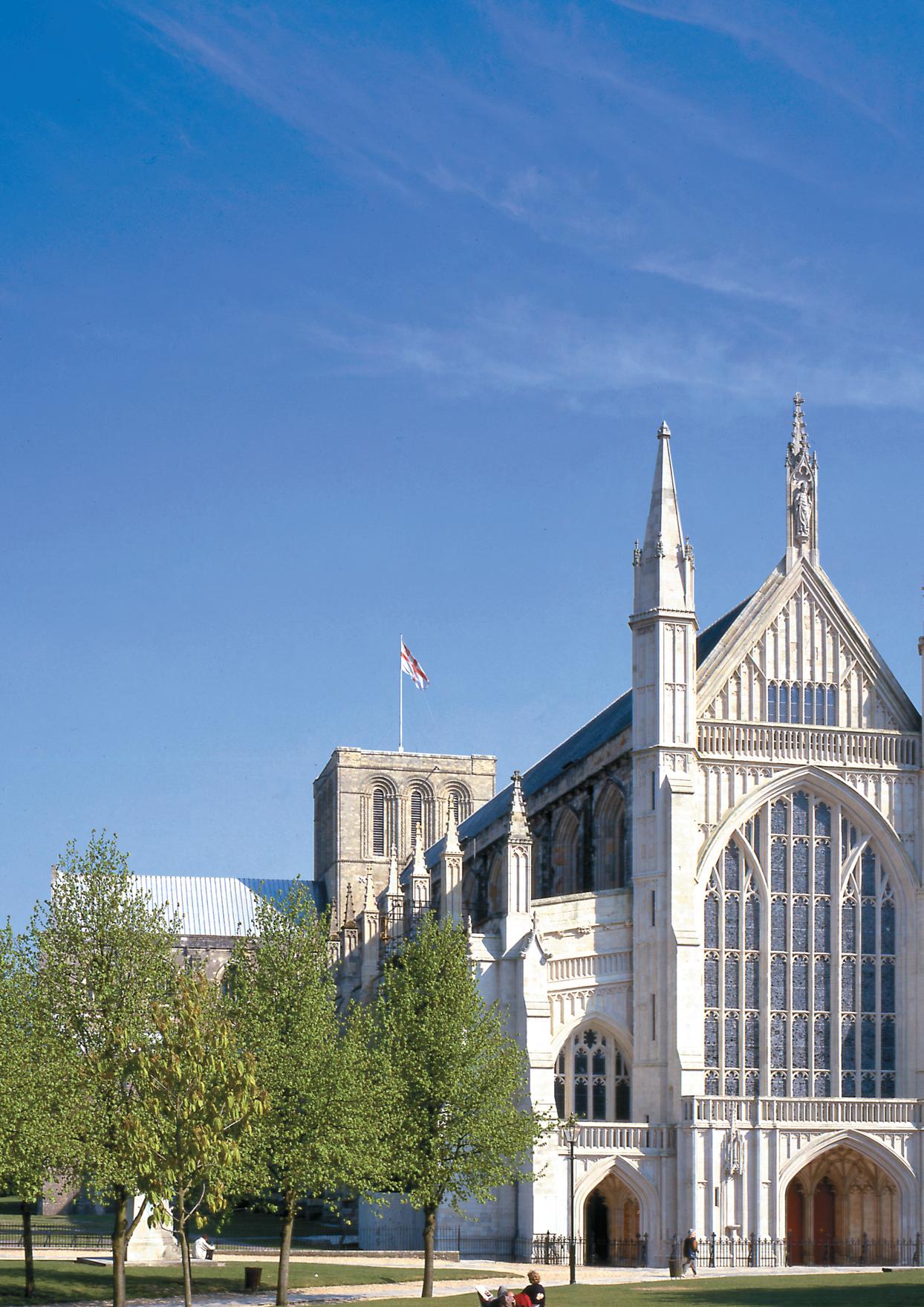
So how did it all begin? Andy was a chorister at New College Oxford, where his father, Sir David Lumsden, was organist. Andy claims he ‘got some stick’ from his fellow choristers for this apparently privileged position! He also tells me that his mother has a very good ear and was ‘a good pianist’. His brother and sisters are, he says, musical, so I sense a musical home with little effective rebellion. He took his Grade VIII piano exam at the age of 12, being warned by his piano teacher to work more on his scales to have any chance of success. “After my last lesson before the exam, my teacher was heard to say, “It’ll be a ****** miracle if he passes!” Imagine the mixed feelings when his teacher opened the notification of Andy’s distinction (his teacher was his father).
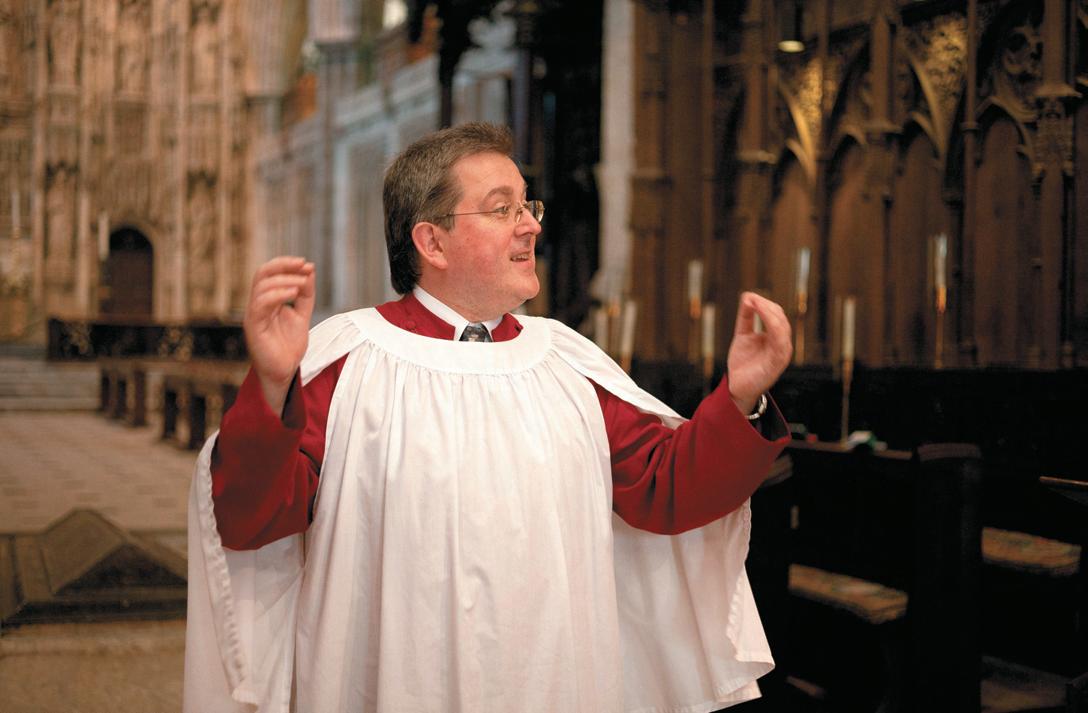
Aged seven, Andy was fascinated by the installation of the new Grant, Degens & Bradbeer organ in New College chapel and it was this that started his love of church music. Whilst still a chorister, he had organ lessons with Paul Hale, then organ scholar at the college and one of his father’s successors at Southwell Minster, and also Nicholas Danby.
After New College, he carried on under the William of Wykeham umbrella by moving to Winchester College, and got his first taste of Winchester and its cathedral (and presumably his first experiences of Martin Neary, his predecessor but one at Winchester and for whom he was later to work in London), being taught the organ by Christopher Tolley, another of his father’s former organ scholars. “Chris was excellent for me as a teacher,” he says, “as he tolerated no nonsense and really pushed me to learn more repertoire.” On returning to Winchester decades later, he found himself passing dons from the college in the street and saying, “Good morning, sir”, a habit he kicked quite quickly! Incidentally, he picked up his ARCO at the age of 17, with all the playing prizes.

Gap years were less fashionable in those days, so his was more rigorous than they sometimes appear now. He spent a year at the Royal Scottish Academy of Music and Drama as a repetiteur on the opera course, which he says broadened his outlook, both musically and more generally (and who says there is no connection between prima donnas and lay clerks?).
He then went up to Cambridge as organ scholar at St John’s, under the legendary George Guest (FCM’s one-time President). He was fascinated by Guest’s apparently effortless success in producing tonal quality, and the way in which performances would suddenly ‘take off’. I asked about the reputed rivalry between John’s and King’s; on the whole he played this down but did recall Guest’s barely-
restrained glee when a John’s man (Stephen Cleobury) was appointed as organist of ‘the other place’. While at Cambridge he had organ lessons from Peter Hurford, who travelled up from St Albans (where he had founded the legendary International Organ Festival and was for twenty years Master of the Music at the Abbey).
After six months as assistant organist to Catherine Ennis at St Marylebone Church (“some wonderful music making and lots of very loud laughter!”), Andy became assistant organist at Southwark Cathedral, working with Harry Bramma. Being a ‘parish church’ cathedral, it was a real eye-opener for him as the kids came from many different south London schools (as they still do). “Even though the musical standard was not necessarily in the same league as John’s, the sense of achievement with these boys was even greater. They were wonderful kids who were superbly encouraged by Harry, and there was a real family atmosphere in the place.”
In 1988, he moved as sub-organist to Westminster Abbey, where there were the inevitable and amazing special services. Andy played for the memorial service for Lord Olivier (“As this was televised live, it was rather fun watching Douglas Fairbanks Jnr, Michael Caine and Ronnie Corbett singing Jerusalem”), and the fiftieth anniversary of the Battle of Britain. In 1991 he played the organ for a live Songs of Praise at the start of the Gulf War, which had to be put together at three days’ notice.
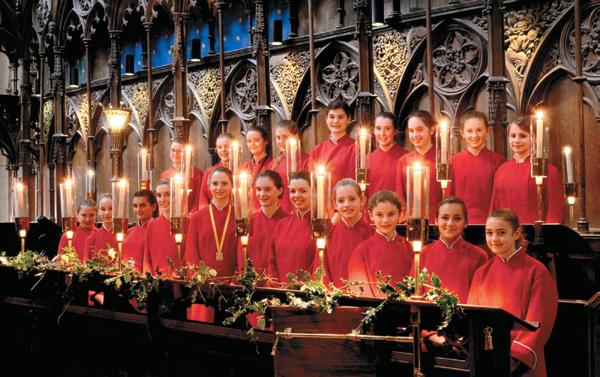
He recalls an amusing incident when the Prince of Wales was unable to attend a service for the Order of the Bath, the Queen appearing instead. Apparently this led to much comment and discussion among the lay clerks about the advisability of sending in one’s stead a deputy more esteemed than oneself.
His first appointment as a cathedral organist came in 1992, at Lichfield. He describes this move as a cultural change and recalls the importance of teamwork with (successive) headmasters (a notable feature of his time at Lichfield). There was also a frantic period which saw nine broadcasts in less than four weeks, the then dean, Tom Wright, being commissioned by the BBC and insisting that they came to him, with the result that they wanted to make the most of
their investment of time and equipment.
Thinking that the ‘county’ pressures were a particular feature of Hampshire life and society, I asked about this aspect of his time at Lichfield. Andy sharply reminded me that the diocese of Lichfield serves two counties (and thus two Lords Lieutenant), Shropshire as well as Staffordshire (where Michael Scott-Joynt was Bishop of Stafford before preceding Andy to Winchester), causing double the load of county events.
He tells the story of an evensong when, without giving the precentor any warning, he deputed the head chorister to conduct the anthem (Mendelssohn Lift thine eyes). A rather surprised-looking precentor had to be encouraged by hand signals to get on with the announcement! This cleric, a sharp-witted and amusing man (and now a distinguished dean), was also leading the prayers that evening. As they all knelt down for these, the anthem having gone very well, the precentor was heard to say, “We pray for all those recently made redundant...”
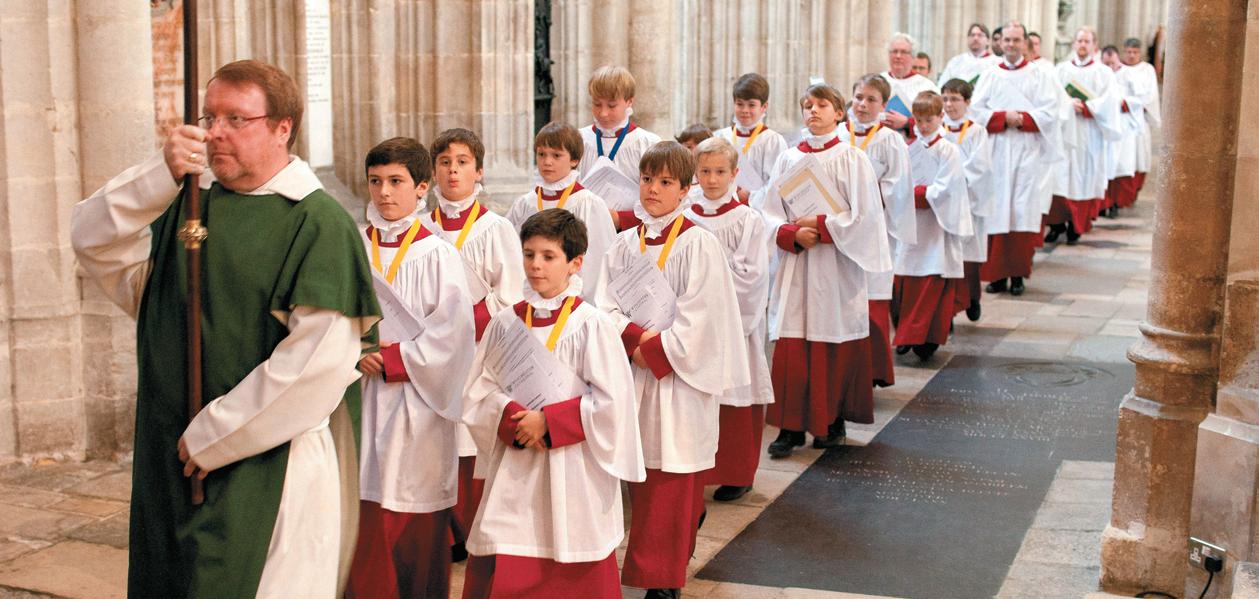
At Lichfield, Andy began to direct, as opposed to accompanying, recordings, which of course continued when he moved to Winchester. Over subsequent years and because my repeated annual requests to him for a particular anthem had failed to bear fruit, I asked a major CD company to suggest a disc containing the anthem. After a short delay, I was duly chagrined to be told, “We recommend Lichfield under Lumsden.”
So when in 2002 the Chapter of Winchester needed to look for an organist, the then precentor, Charles Stewart, set off on a soft-shoe-shuffle round some of the choicest closes of England. Thank heavens Lichfield was on his itinerary.
Winchester’s stock was high when David Hill announced
that he was moving on (after a short break ending up at St John’s Cambridge), so there was a degree of uncertainty about future standards, even though Sarah Baldock was already making great strides with the recently formed girls’ choir.
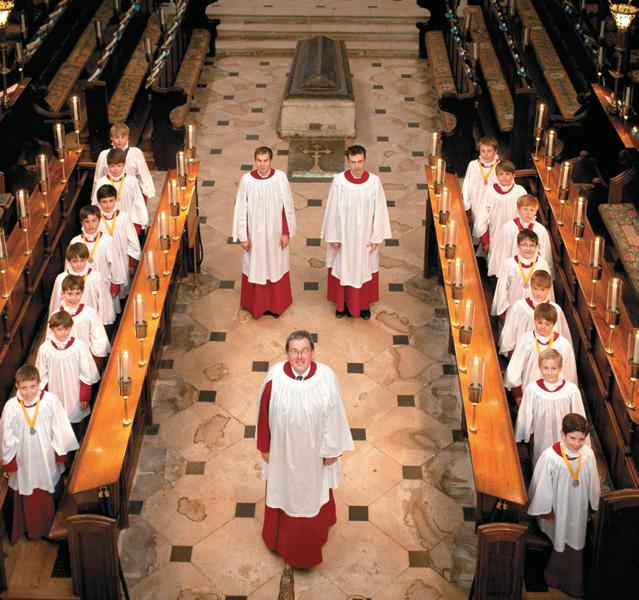
There was no need to worry. The transition appeared almost seamless and Andy now seems to have been here forever (not sure he’ll thank me for that). The repertoire has changed gradually, not in a dramatic way, but there is a stream of new compositions. Andy’s watchword, which came up several times in our conversation, is ‘standards’, to which the size of the repertoire is secondary. He often wishes visiting choirs would not over-reach themselves just because they are in a cathedral (others might be tempted to think the same of visiting preachers). “Hearing a piece sung badly ruins worship.”
I asked him whether the way in which he allowed other members of the organ team to have their opportunity to conduct at services and take choir practices came from his own cathedral upbringing. Without saying ‘no’, he made it clear that he felt it was important to ensure that when they moved on they would be as well prepared as possible. He wishes he could accompany more, but accepts that this is the main job of others, and he certainly takes his turn on the voluntary rota.
I asked him what he thought of the practice in some cathedrals of having an organist and a choir director. He felt this could work, provided it was clear who was ultimately in charge, and instanced at least one case where this had not been so – with adverse results. “Whoever is the No. 1 must have a thorough knowledge and love of how a choir works. Being a good technician or a well-respected name simply isn’t enough for this job.”
In slightly the same vein I asked him whether he would like to be a member of Chapter, as are some directors of music in several other cathedrals. He rather thought not, despite a rueful comment that he might know a bit more about what was going on.
I asked about his favourite composer(s) and the immediate response was Brahms, with Bach as a close
second. In terms of performing he rates the Reubke Sonata He is less ready to nominate a ‘favourite’ organ, though he clearly remembers with fondness playing the organs in Sydney Opera House and Liverpool Cathedral, and Handel’s organ in the Marktkirche in Halle (Germany).
In terms of ‘coming home to Winchester’, he said that the girls’ choir had made a big difference, adding a new dimension to worship and a range of pastoral opportunities, with girls coming from ten different schools locally. Their higher age range also brings its own perspective. “I certainly can’t complain about the variety of problems we have to deal with!” For the boy choristers, many of whom live locally, the presence of the girls’ choir enables them to spend more Sunday afternoons with their families, a distinct advantage. He paid tribute to the Friends of Winchester Cathedral for meeting the running costs of the girls’ choir. The girls had raised Winchester’s profile, but he again stressed the importance of the relentless pursuit of standards.
I asked whether there was much time for hobbies. Andy enjoys flying and had some basic lessons in America (“where it would have been easier to make an emergency landing!”). Following the theme of excellence he admits to a modest interest in (and intake of) wine and enjoys travel, though, surprisingly perhaps, he does not pursue an extensive recital programme.
Recordings continue to take up time in the schedule and he hopes to build on the recently re-established link with Hyperion. The choir recorded a CD of Finzi and Holst with Regent in March 2012 (release date uncertain) and there are other plans in the pipeline – recordings do help the income stream of the choir.
I asked how he saw the Southern Cathedrals Festival, given its impact on workload and schedules. He values the opportunity it provides for commissioning some larger scale works (incidentally, often paid for by the minute!) and the scope for working with a bigger choir, and is pleased that a BBC broadcast or recording appears to be becoming a regular feature. The advent of girls at two of the cathedrals has changed the nature and make-up of programmes, and with two relatively recently appointed cathedral organists at
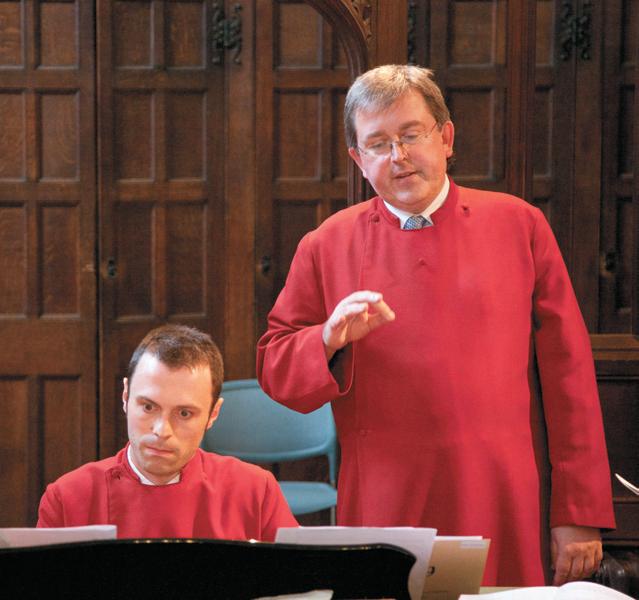
Salisbury and Chichester, there is currently a certain amount of re-thinking and re-grouping.
As to commissions or new works, he especially values having been involved with two in particular. He cited Philip Moore’s recent SCF commission At the Round Earth’s Imagined Corners (the composer having been given a free choice of text and taking the opportunity to make a setting he had long hoped to do, with four trumpets and the soloist placed in different parts of the building) and James MacMillan’s Laudi alla Vergine Maria. He was also glad to have premiered Roger Steptoe’s Organ Concerto at Peterborough Cathedral, having advised on some aspects of its composition. Harking back to his Westminster days, he recalled the Missa Trinitatis Sanctae by Francis Grier – “very difficult but breathtaking”. Overall, he is cautiously optimistic about the future of cathedral music, though a bit wary financially. “Grants like those from FCM help enormously and spread the word, which is so important to the future of cathedral music. Recruitment remains a problem. The quality of chorister is still out there, but the numbers coming forward are fewer and the outreach work that we all do is vital to bring the
undoubted benefits of cathedral music to a new generation.” Ongoing commitment is crucial, encouraged, as ever, by high standards. So the FCM visit in June will be very welcome and a chance to say thank you tangibly. Although Andy appears self-effacing and laid-back, in performance the intensity of his feelings and commitment shine through. When I asked about his own choir-training techniques he modestly replied, “It’s amazing how much you can do by the way you play it on the piano in rehearsal”. That distinction in Grade VIII at the age of 12 has been worth its weight in gold.
Richard Osmond co-ordinated for some years the ‘ In Quires and Places’ column in this magazine and has contributed CD and book reviews. He admits to being a cathedral music junkie since his student days at Exeter (reading Modern Languages), so Exeter Cathedral is a special place for him. He moved to Winchester on retirement and, as well as attending the cathedral, helps out with organ playing ‘at some of the more despairing villages, who are kind enough to say that the alternative is worse’. He is also a freelance translator and reviewer.
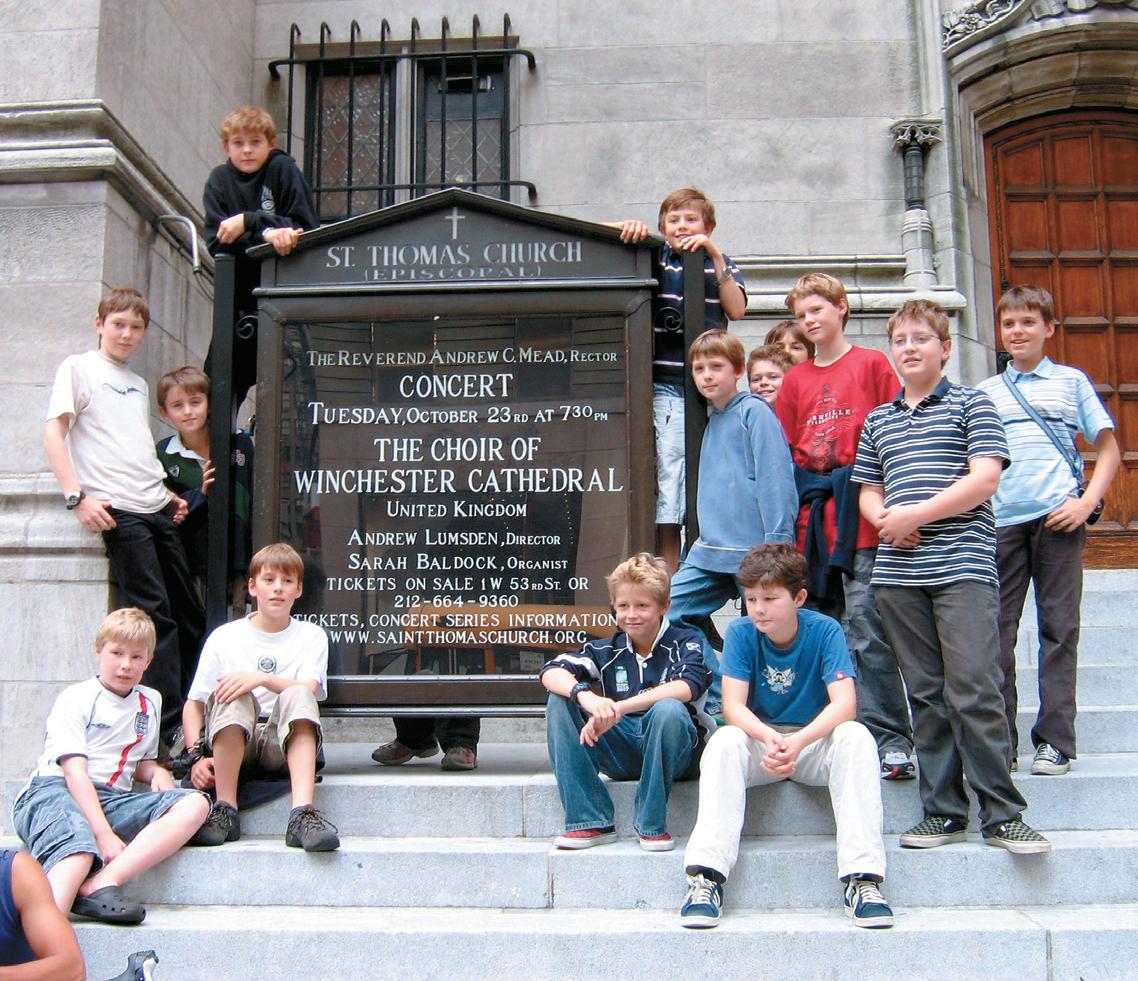
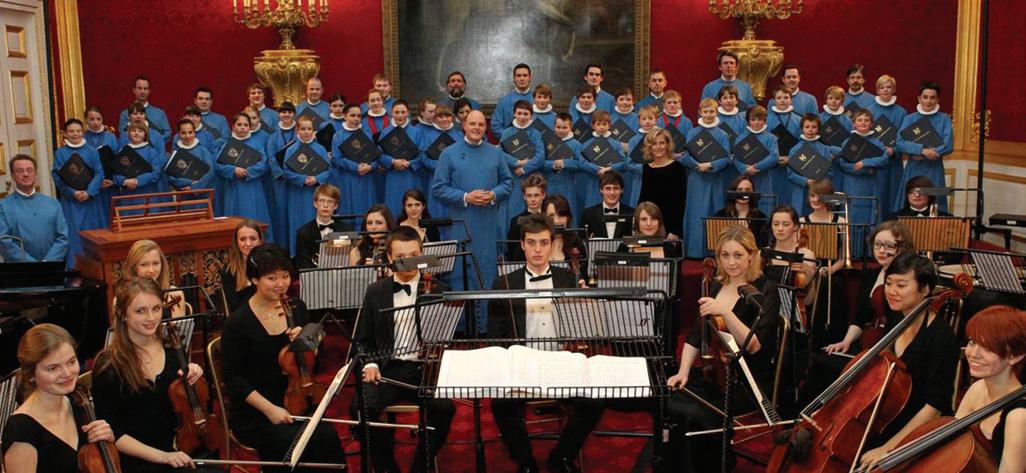
The Wells Cathedral Choir, accompanied by the school chamber orchestra, gave a special concert in the presence of HRH the Countess of Wessex and several other distinguished guests. In aid of the Wells Cathedral Chorister Trust and conducted by Matthew Owens, the concert included music by Mozart, Rachmaninov, Richard Allain, Howard Goodall and John Rutter. The Countess of Wessex, who is the Royal Patron of the Trust, had the opportunity to meet the players, singers and organisers afterwards.
Lindsay Gray, the Director of the Royal School of Church Music (RSCM), has announced his decision to move on from the post of Director during the autumn of 2012; he plans to pursue other professional interests over the next few years.
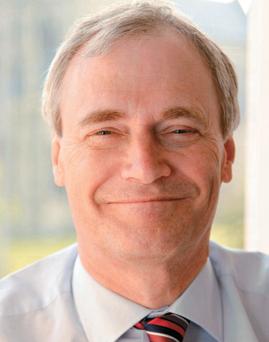
Mr Gray says: “When I leave in the autumn, it will be five years since my appointment and I consider it a wonderful privilege to have held the post of Director; I have thoroughly enjoyed my time leading the RSCM, and believe it is currently in a position of some considerable strength. I would still like to do other things at this stage of my career and, with the organisation in very good heart, I feel that now is the right time to move on.”
Lindsay Gray became Director of the RSCM after 14 years as headmaster of the Cathedral School, Llandaff in Cardiff. Much of his professional life has been connected with church music as a choir trainer, organist and singer. He studied Music at Cambridge where he was also a counter-tenor choral scholar at King’s under David Willcocks and Philip Ledger. He subsequently took an education diploma at Durham University, where he was also organist and choirmaster at St John’s Neville’s Cross and a choral scholar in the cathedral choir under Richard Lloyd.
In October the new Bishop of Salisbury, the Rt Revd Nicholas Holtam, was welcomed to the cathedral. Like so many, Bishop Nicholas sang in a church choir in his youth. Also at that time the Assistant Director of Music, Daniel Cook, left to become Director of Music at St Davids Cathedral. His replacement is to be John Challenger, currently Assistant Organist at St
John’s College Cambridge; he will not, however, be arriving in Salisbury until September. In the interregnum, David Halls is being ably assisted by an accomplished trio of organ scholar Matthew Jorysz, Tim Hone, Head of Liturgy and Music, and Ian Wicks, Director of Music at the Cathedral School. Jeremy Davies, Canon Precentor for over a quarter of a century, retired at the beginning of January. He will be much missed for his innovative liturgy. His successor, the Revd Tom Clammer, was installed in April. Many FCM members will, of course, have seen the excellent BBC Four documentary Angelic Voices, aired in March/April, featuring Salisbury’s two sets of choristers.
Bangor Cathedral, founded in the year 546 AD and the oldest cathedral in the United Kingdom, has had a choir certainly since the year 1360.
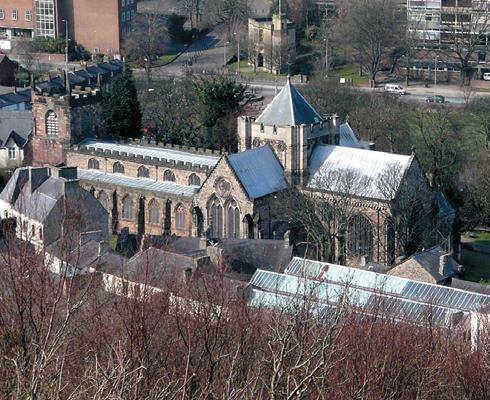
It is now about to introduce a girls’ choir, which will sing on separate occasions to the boy choristers, who will also increase their numbers. The purpose is to meet the demands on family life and create a balance between the two choirs.
Linked with this historic move is the creation of chorister scholarships which will be worth £950 a year. They will pay for instrumental lessons, singing and music lessons as well as help towards music exam fees. This development will create in the cathedral a music school which will be an enormous asset for Bangor and the surrounding district.
Bangor’s most famous choristers are Dr George Guest, who became Director of Music at St John’s College Cambridge and the broadcaster Aled Jones. While Aled’s later career cannot be promised, choristers will be given the same musical foundation which he received.
The launch last December of the choral foundation of the Chapel Royal, Hampton Court Palace, to ensure the security of the choral establishment, is a significant milestone in the history of the chapel and its choir.
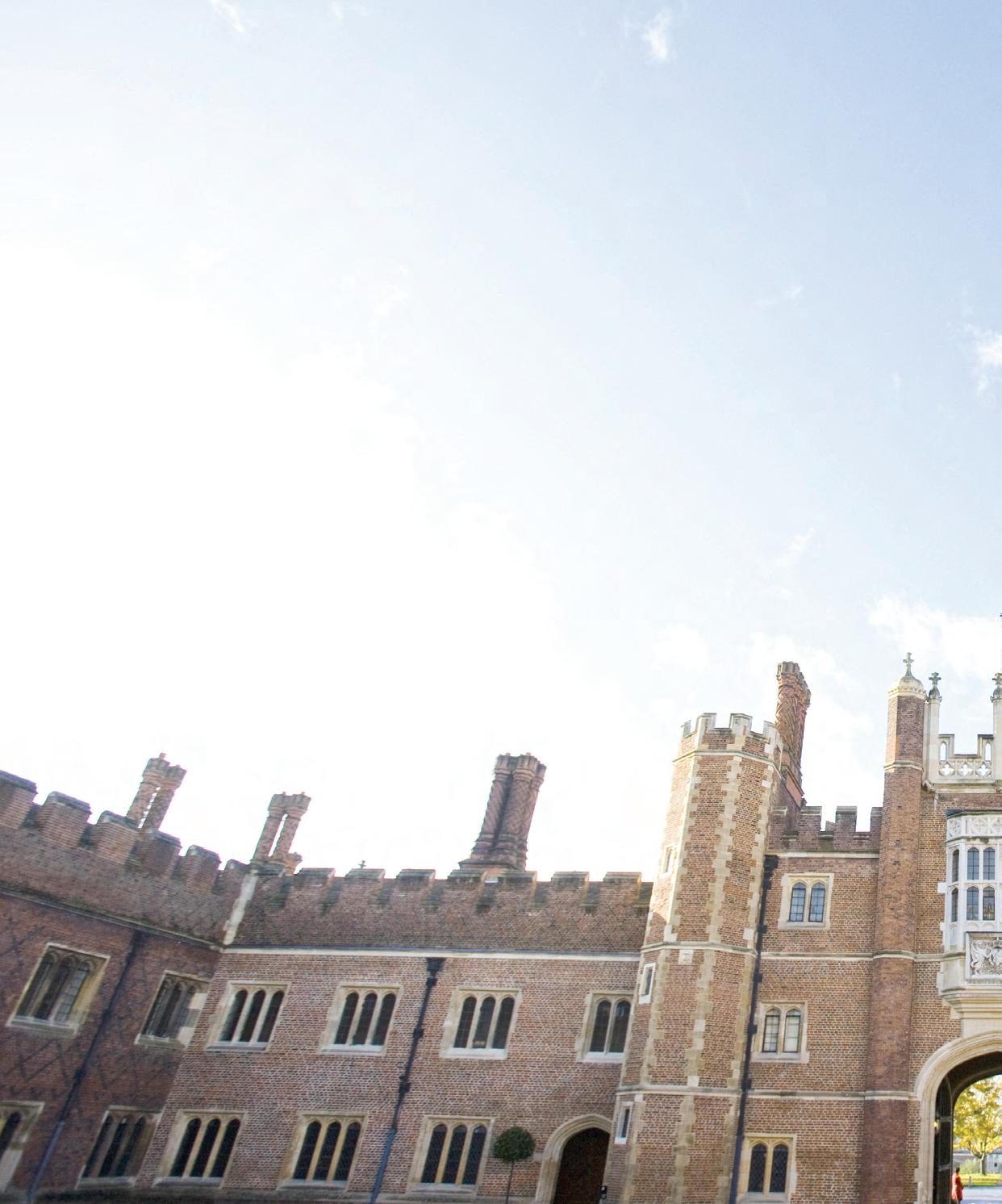
With the Bishop of London (who is also Dean of the Chapels Royal) and the Master of the Queen’s Music among its patrons, the foundation’s objective is to secure £1.5 million to safeguard its choir and, in time, to create a sizeable fund, the income from which will ultimately be sufficient to finance future endeavours. Far too few people are aware that the Chapel Royal, currently based at St James’s Palace, and its two daughter establishments at HM Tower of London and Hampton Court Palace, are all resourced in different ways, in a reflection of the history of the three choirs. The choir based at St James’s Palace is a part of the Royal Household, with six salaried Gentlemen and ten boys (or
Children) who all hold choral scholarships at the City of London School. At the Tower of London, it wasn’t until 1965 that the Chapel of St Peter ad Vincula had its status as a royal peculiar restored by Robert Stopford, the then Bishop of London, Dean of the Chapel Royal. With the help of the chaplain, Stanley Michael, who led financial appeals from the pulpit, a choral foundation to support the newly-formed adult choir was established under the patronage of HRH Princess Margaret. Its inaugural concert in 1966 was attended by
figures such as Sir Arthur Bliss, Sir Malcolm Sargent and Sir Adrian Boult. By contrast, Hampton Court’s choir has never enjoyed support from any form of endowment, but relied solely on the collections from the congregation. The Privy Purse Charitable Trust pays a modest contribution towards the overall running costs of the Chapel, but this will not last forever. The background to this can be summarised as follows. Hampton Court Palace was part of the royal circuit until the reign of George III. Services were regularly sung by the itinerant Chapel Royal whenever the monarch was in residence. With the departure of the court from Hampton Court in 1737, no other monarch lived there. Eventually, the palace was sub-divided into grace and favour apartments, and the growing number of residents led to the continuing use of the Chapel Royal building (which by now had its own chaplain) and the eventual appointment in 1831 of William H Fitzgerald, a local man, as the first permanent organist. By1845, he had been succeeded by William Christian Sellé. It is evident that there was an ad hoc choir of volunteers; however, the standard was poor – no doubt a reflection on the general state of church music at the time, as in the following year, the chaplain wrote to the Board of Works, enclosing a letter from his deputy, objecting to ‘the very inefficient manner in which the singing and Choral portions of Divine Service are performed at the Chapel Royal at Hampton Court’. The chaplain’s letter stated that it was ‘very unfit that the performance of Divine Service in a Royal Chapel should be wholly dependent upon voluntary sources’, and suggested that a small annual sum of about £50 for choral provision ‘would materially conduce to the respectability of the Establishment of the Chapel Royal’. The Treasury turned down
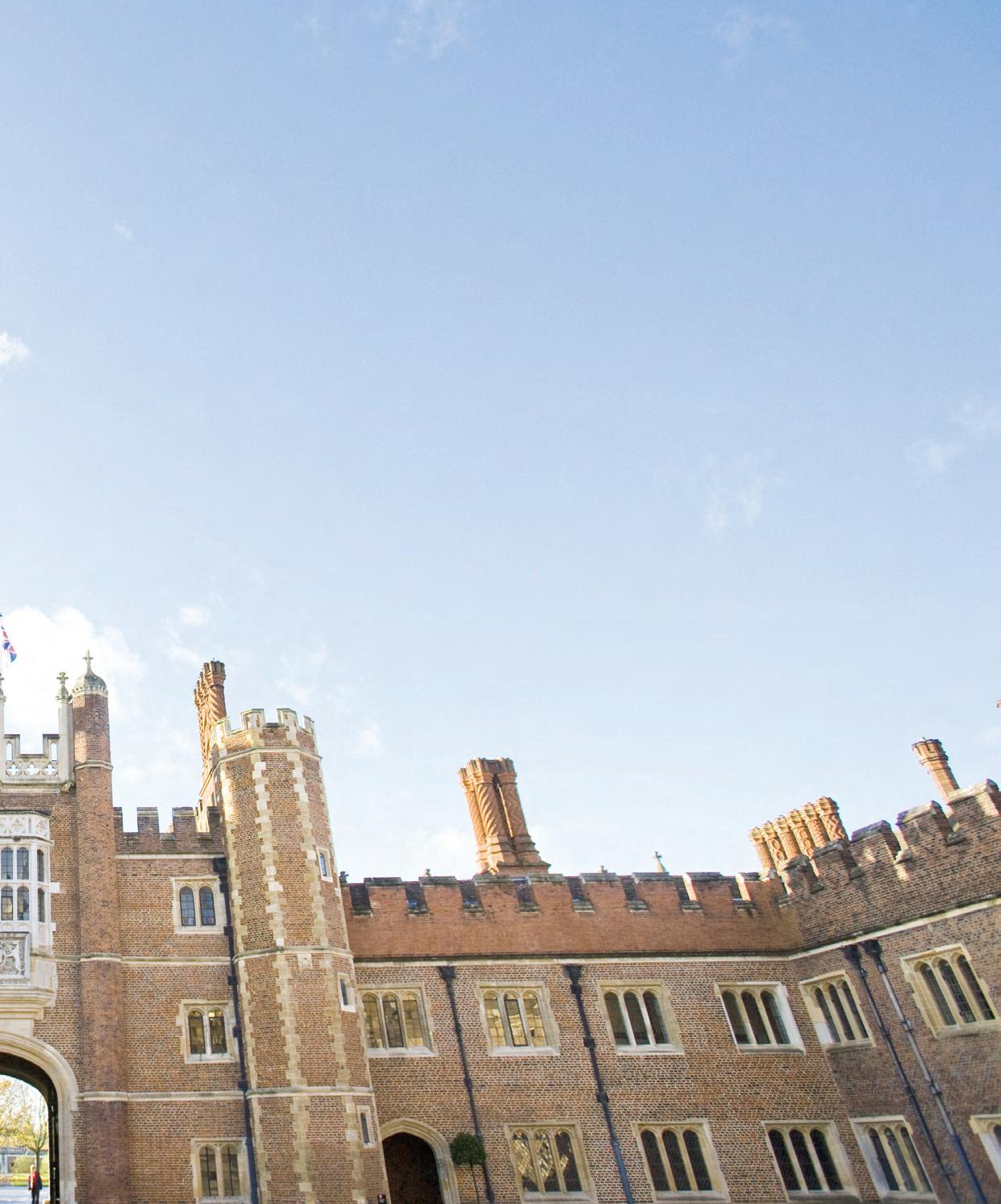
this and subsequent requests, and it wasn’t until 1868 that a choir was eventually established. This new choir also included exiled gentlemen from the choir of Kingston Parish Church, where an unusually high choral standard had been enjoyed until the appointment of a musically unsympathetic incumbent.
During the tenure of Fitzgerald and Sellé, services in the chapel were entirely private, and visitors to the Palace were not admitted to them until 1886. By this time, however, standards had slipped. With services now open to the public, the next organist, Basil Philpott, who had been appointed that same year, made strenuous efforts to restore the music to something like its former glory. His hard work paid off, but the choir still had no significant financial base, as he himself noted: ‘The choir is entirely without endowment, but it has now what it never had before, a library of music properly bound. Many things have been obtained to facilitate the practice as well as the performance of the music. ... My hope is that an endowment may be obtained for the boys some day, and that whatever excellence which may have been gained in the past may be maintained and exceeded in the future by those who will come to carry on the work we have tried to establish.’ His successors who did so include William James Phillips from 1930-1956, a greatly respected disciplinarian; Norman Askew (1956-1966) who, not long before his untimely death, struck one of those patches when the recruitment of boys becomes difficult and augmented the treble line with ladies; the well-known broadcaster, writer and reviewer Gordon Reynolds (1967-1995); and Richard Hill, who was training for a legal career on coming down from
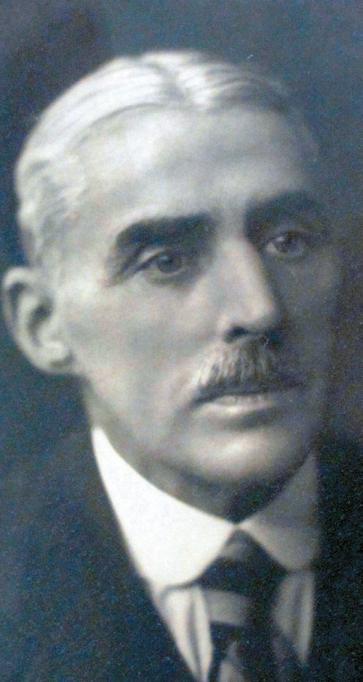
Cambridge, and so held the post briefly from 1995 to 1996. So it has taken until the twenty-first century for Philpott’s hope to be realised because, from the beginning of the spring term 2012, the Foundation began to meet the cost of instrumental/vocal tuition for the choristers. These boys are drawn from a variety of day schools in the area. They rehearse twice a week (their parents often having to contend with diabolical rush-hour traffic), and sing at the two choral services held on Sundays and other Holy Days. They follow in the steps of former choristers such as the musicologist Professor Thurston Dart; the actor David Hemmings (who sang the part of Miles in the premiere of Britten’s The Turn of the Screw); the baritone Robert Hayward; the composer Antony Pitts; and conductors Nicholas Jenkins and Timothy Burke. In recent years, a small but steady stream of choristers have found themselves filling parts for boys’ voices in operas for both English National Opera and the Royal Opera, and having to carefully juggle their stage and choirstall commitments.
Hampton Court’s location at the outer edge of Greater London has sometimes made it difficult to retain Gentlemen, a disadvantage which was as much of a headache for Philpott at the beginning of the last century as it can be today. He noted then that ‘the other voices too – tenors and altos especially –came for a year or two years and then went to appointments where the fees were larger and the expenses of travelling less. In this way, a large number of younger men have passed through the choir without any unpleasant feeling except regret at the necessity of moving on.’ Today, Hampton Court is forced to remain competitive with the London churches and cathedrals in the fees payable to the men, and raising money for this has become one of the foundation’s targets.
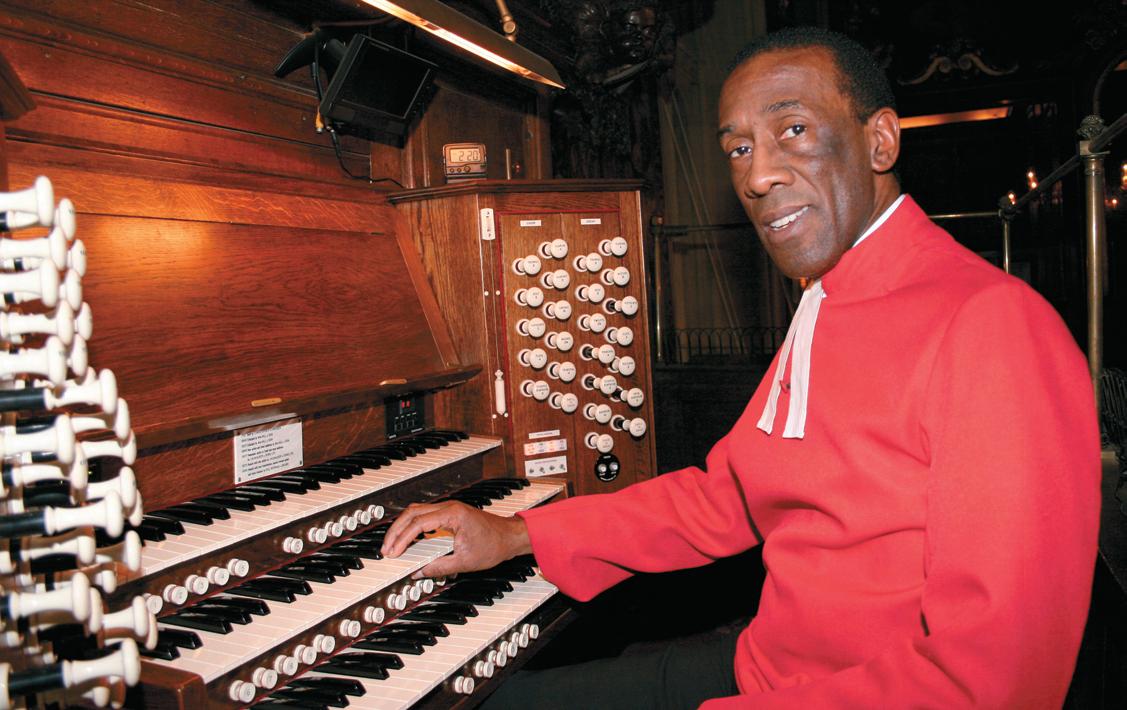
The style of worship has always been – and is set to remain – traditional. The Authorised Version of the Bible and the Book of Common Prayer are still used at all services; the Litany is sung at the beginning of Advent and Lent, and on Rogation Sunday. Matins remains the main Sunday morning service,
with the Eucharist being sung on the first Sunday of the month, as well as on Easter Day and on Whitsunday. This has led to the expansion and invigoration of a forgotten part of the Anglican repertoire with the introduction of settings of the morning canticles by contemporary composers such as Francis Jackson, William Mathias, Philip Moore and Robert Walker. The traditional language of other services sits side-byside with music by other composers such as Nicholas Jackson, Peter Maxwell Davies, James MacMillan, Judith Bingham and Jonathan Dove, and while the Choirbook for the Queen will provide further fare in the years to come, works by the Chapel Royal’s rich heritage of composers from previous centuries form the backbone of the choir’s repertoire.
The choir’s fortunes and exposure have grown considerably in the past decade. In 2002, it marked the Queen’s Golden Jubilee with a tour to the Czech Republic, its first ever overseas tour, and probably the first time that a Chapel Royal choir had been heard outside the country since 1520 when it accompanied King Henry VIII to the Field of the Cloth of Gold near Calais. In May 2004, HM The Queen and HRH The Duke of Edinburgh attended a service of Matins at Hampton Court to mark the 400th anniversary of the Hampton Court Conference, the first time that a sovereign had worshipped there since the eighteenth century. Her College of Chaplains and the entire Chapel Royal establishment were also in attendance. Barely two months later, the choir found itself at Abbey Road Studios providing the backing track for the short animation film The Unsteady Chough. Future plans include a joint evensong in May of the choirs of the three Chapels Royal to mark the Diamond Jubilee, and the autumn sees the start of a series of concerts (some with orchestral accompaniment) to continue to highlight the support of the Choral Foundation and to enable the musical and vocal development of the choristers to be heard in music other than that for the liturgy. Next year, the historic Shrider/Hill organ will receive some much-needed attention and reconfiguration by Harrison & Harrison.
These are exciting times for the Chapel Royal at Hampton Court. There is a good-sized congregation of about three hundred regular worshippers, of which only a bare handful are nowadays residents of the Palace. The chaplain provides a daily ministry of the offices of Morning Prayer and the Eucharist, and as in other cathedrals and churches, volunteers from the congregation act as stewards during the opening hours of the Palace, presenting the chapel’s history and its continuing ministry to all who are interested. The choir’s role in enhancing the worship there remains highly valued and, almost 150 years after it was established, the choral foundation will enable the boys to develop their musical talent to the full, and with the men, to provide, in the words of the Dean, ‘the beauty, peace and inspiration to the congregation and visitors... and to the wider world for many years to come’.
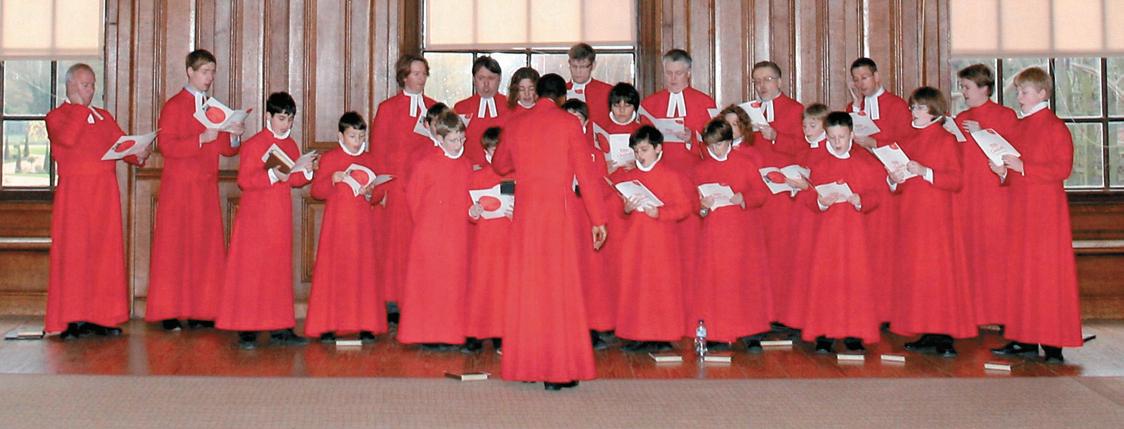
The research of Stephen Willis and Alan Kendall is gratefully acknowledged.


CARL JACKSON has been Director of Music at Hampton Court since 1996. He was born in London and studied at the Royal Academy of Music as a Junior Exhibitioner and as an Intermediate Student. He also held an organ scholarship at the Chapel Royal, Hampton Court Palace under Professor Gordon Reynolds before proceeding to an organ scholarship at Downing College Cambridge where he was a pupil of Peter Hurford. Prior to his appointment at Hampton Court, he held appointments at Croydon Minster and (as Asst Director of Music) at St Peter’s Church, Eaton Square. He has also combined his career as a church musician with that of a school teacher, and has held posts in Huntingdon, Croydon, St Paul’s Girls’ School and Kingston Grammar School. Over the years, he has given organ recitals in –amongst others – Berkeley (California), Westminster Cathedral and Alexandra Palace. As an accompanist he has worked with Sir Willard White, and with the Elysian Singers of London with whom he appears on their CD of the music of James MacMillan (Signum). He was appointed MVO in the 2012 New Year’s Honours list.
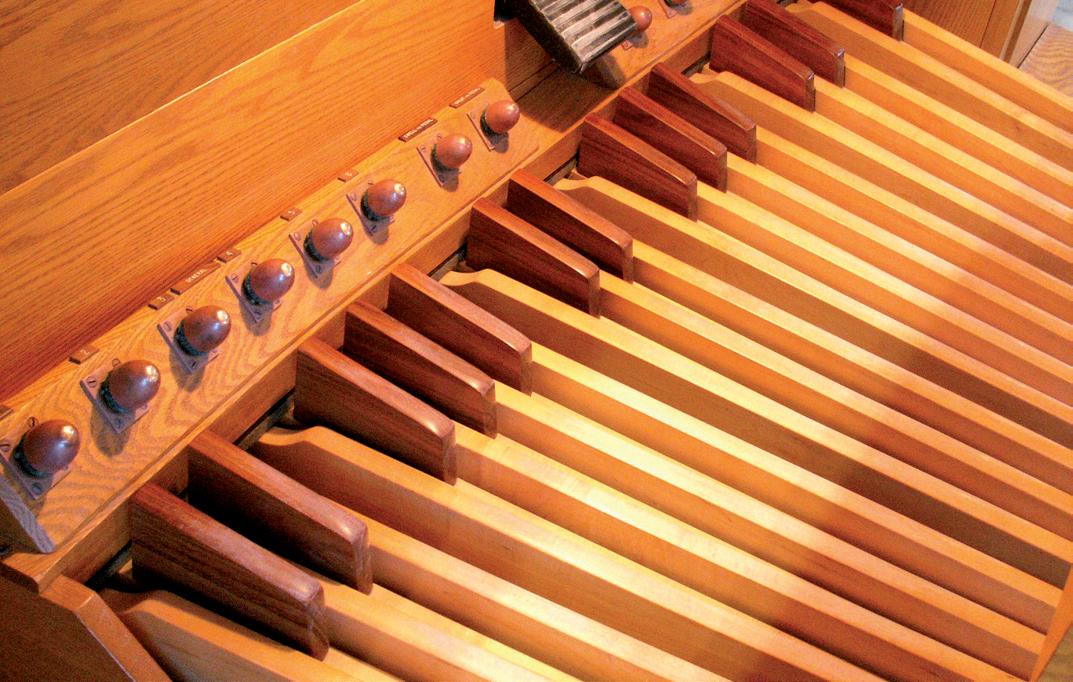
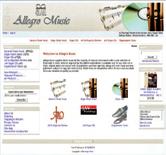

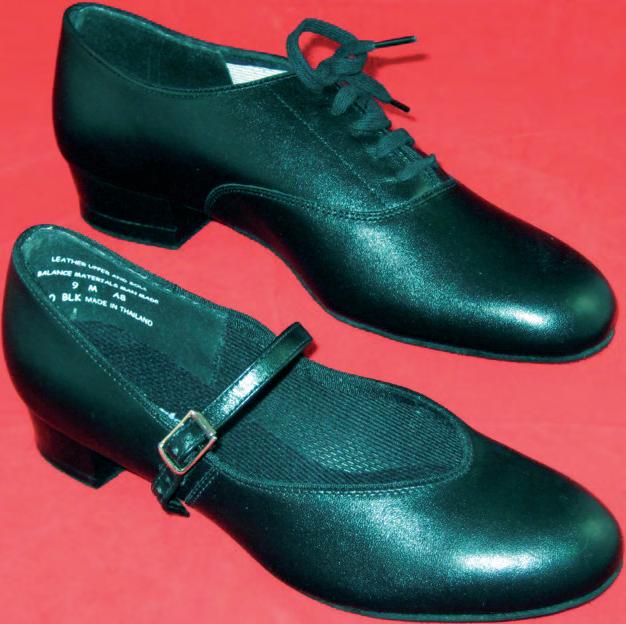





In 2011 the Christ Church Cathedral Choir toured the US and Canada for nearly two weeks. We visited eight venues. We used no agent. We spent almost no money on marketing. We spent almost no money on hotels. We paid nothing for our visa advice. We had full houses, standing ovations, an energised choir and we returned with money in the bank. How did we do it?
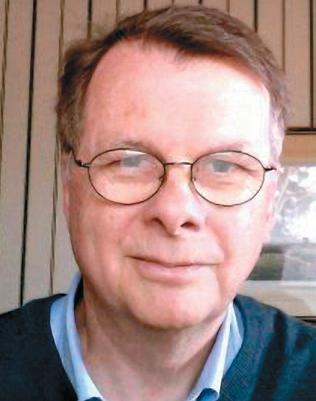
The choir members arrived by air in Charlotte, NC on 28 March. They stayed in local people’s homes and we enjoyed a wonderful welcome party hosted in a mansion by the community. Charlotte is the home of our tour sponsor, WDAV, the classical public radio station in Charlotte whose general manager is Ben Roe, a friend of an alumnus. You will see later on what a large role WDAV and public radio played in our tour.
We began our series of concerts by singing in two churches in North Carolina: Covenant Presbyterian in Charlotte on 29 March and in St Alban’s Episcopal in Davidson the following day.
In all venues except for the cathedral in Washington we sang a programme that took the audience from the very beginnings of the choral tradition to the modern day, and because we had brought three organists with us – Michael Heighway, Ben Sheen and Clive Driskill-Smith – we were able to interleave the singing with recitals. Here is a typical programme from St Alban’s:
• De Profundis –Orlando de Lassus
• Organ solo: (Clive Driskill-Smith) – Fantasia in G Minor BWV 542 – J S Bach
• Leroy Kyrie – John Taverner
• Ave Maria – Robert Parsons
• Organ solo: (Clive Driskill-Smith) – Fugue in G Minor BWV 542 – J S Bach
• Miserere – Gregorio Allegri
• Jesus autem hodie – Peter Maxwell Davies
• Song of Simeon: Lord’s Prayer – John Tavener
• The Lord is my shepherd – Lennox Berkeley
• Organ Solo: (Michael Heighway) – Praeludium in F sharp minor – Dietrich Buxtehude
• Te Deum in C – Benjamin Britten
• Veni sancte spiritus – Howard Goodall
• Jubilate – William Walton
Throughout the trip, all the way to Toronto, the choir travelled in a bus driven by the redoubtable Larry. Looking back, it seems obvious now why so many bands/choirs/groups use a bus – it’s a bonding process. More importantly, we chose a bus because it gave us more control over stress. Many things can go wrong with flying. Flight delays are hell on tour. Flight schedules are unyielding. Our itinerary was also designed to keep our travel days reasonably short: our only long haul was from Boston to Toronto and on that journey we stopped off in Niagara Falls for a break.

We were all nervous about Washington. The cathedral is an immense space of 83,000 square feet, about the same size as St Paul’s in London. Would we fill it and how we would we sound? Luckily, we first gave a chamber concert at the British Embassy which helped a lot – a rapt audience and a great party to follow!
In order to fill the space in the cathedral we had to offer more of a show programme than we had sung in North Carolina, so we included Allegri’s Miserere (always a favourite) and ended with the Fauré Requiem. Thankfully, the cathedral was packed and we were given a standing ovation.
At this point our confidence increased, just at the right time, for our next venue was St Barts in New York, another vast space. Here we sang a variation on our full programme, as we had in Charlotte. It was another sell-out and, although we got a standing ovation, there was a coolness about the evening, not the same community support that we’d had in Charlotte and in Washington. Maybe it was just the Big City Effect. We still managed to troop off to our accommodation in a cheerful mood.
Thanks to our alumni, the men were put up in a boutique hotel and the boys in one of the smart New York men’s clubs. Fortunately the boys did not disturb the club members and had a quiet night. But New York is New York and there are rumours that the men escaped the bounds of their hotel and enjoyed the town.
Boston was our next stop, and we were all looking forward to staying in a beachside home belonging to an alumnus. Their ‘cottage’ was able to accommodate us all! On the way there, our only travel hiccup took place – it turned out that the bus could not get nearer than a full mile away from the house because the lane was too narrow – and it was raining! So imagine our re-creation of the retreat of the Grande Armée from Moscow – a long chain of boys, men and the school matron all
trundling their bags along a path in the dark and the rain for more than a mile. Of course we survived, but our troubles were not over. The next day, scheduled to perform live on radio at WGBH in Boston, we took a wrong turning, got lost in the Boston traffic and arrived in the studio with only minutes to go to air time! Frantic mobile phoning by us. Total calm by Ben Roe, who was now at WGBH’s classical station in Boston. He was used to performers arriving late. The bottom line was a mini concert by us and the most thoughtful interview on the tour. You would never have known that we nearly missed this. We also sang at Trinity in Boston – Evensong, not the full programme, including a couple of anthems by Tallis and Stanford. After the travel issues and the radio broadcast and the two previous large-scale performances, the shorter programme was a relief.
We had put on seven performances in seven days and with a lot of travel. We were tired. We now had a two-day journey to Toronto in Canada, but anticipating this we had planned a day’s break in Niagara Falls, which is just over the border. It’s easy to laugh at Niagara. It is, after all, splendidly tacky, but the Falls themselves conquer all cynics by their sheer magnitude, and the day off we had there rejuvenated us for the last performance at Grace Church in Toronto on 8 April.
As in North Carolina, in Toronto the entire local community combined together to host us and we all stayed in the local choir families’ homes. The church was packed with people who had come to support us. We had a wonderful response in every venue, but here there was a particular warmth which was very special.
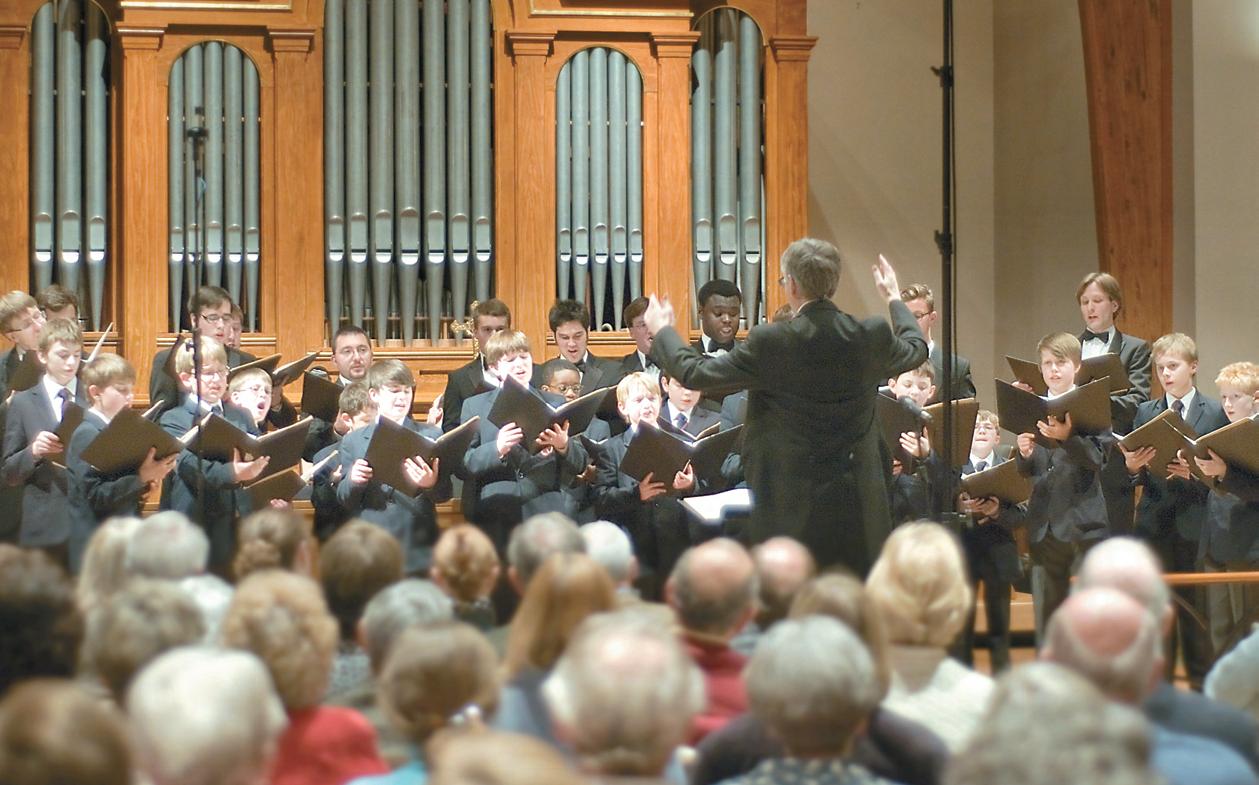
That left us a day in Toronto to have fun before we said goodbye to Larry the driver and flew home. Larry and a group from Grace took the boys, of all ages, off to the CN Tower and to their last enormous helping of junk food.
You can see that this was a long and demanding tour. In our planning we set out to make the tour as rewarding as we could by looking at the social aspects of touring before we looked at the financial ones. When touring conventionally, the agent takes over the burden of the organization but there is an emotional and financial cost to this because what is performed, where, and when it is performed is set by a ‘transactional revenue model’. So the venues, which have no input into any of this, see themselves only as a house for sale. This means that money alone has to be used to market the product, all the accommodation and meals have to be paid for and the travel is just a grind because the itinerary follows the money, not the human needs of the choir. Each performance and each city tends to blend into the next. And at the end of the tour, because the financial costs are so high, often little money is made for the choir and it is also drained of energy.
We did not want this to happen to us, so a few volunteers took on the role of agent and we looked for help in the communities that we were connected to.
Christ Church is, of course, part of Oxford university, and the Oxford alumni pitched in to help. The college also has a strong group of alumni in the US, who were a big support – all our visas were arranged by an alumnus, and some of our accommodation was provided by alumni. But we felt that we needed a deeper knowledge of the American music scene beyond the scope of the alumni, and so our first call was to Ben Roe, the general manager of WDAV in Charlotte, NC. We learned from him that 65 million people sing or have sung in a choir in America, and we thought a lot about what might attract these people to what we do. Ben not only knew the American musical scene but also introduced us to the network of public classical radio stations.
The best classical music stations in public radio (such as WDAV in Charlotte, WGBH 99.5 in Boston, WQXR in New York, and WETA in DC) do much more than merely broadcast music. They work hard to grow the local music community by offering more background commentary and context to the music, resulting in the growth of their audience as their understanding increases. Armed with this knowledge, we decided to set out to teach as much as to perform.
The first way we did this was to offer, at every venue, a free public masterclass where the public could see the behind-thescenes process of preparing to deliver an interpretation. We also shaped the repertoire so that it resembled a journey through the history of the English choral tradition from Taverner to Walton. In support of this, in every venue, the local radio station added programming and interviews about us, and worked directly with the venue to aid them too. All of this was then shared on our website as well.
Looking back, this idea of wrapping the performance with learning was the most important lesson we learned. That principle guided us in all we did.
Even as we asked, “What does our audience need?” and found that it was more than just the music, so we found that our hosts wanted more than ticket revenue. They wanted support – support for their own choirs and music programmes. We agreed that we would work to support their broader needs and not just sing for our fee. In return, they would help us to have the lowest costs possible. For example, at Grace Church on the Hill in Toronto, which has the only boys’ choir in Toronto, we put on a free public rehearsal aimed at the larger choral
community in the city, and asked the Grace choir to perform with us in two major pieces in the concert later on.

We designed the financial arrangements so that they would cover our own needs and also maximize the return to the host by taking a set fee that would allow Grace to go full out in their own marketing. This meant that they could tap into their own community and deliver a full house, and to help them we created posters and a very comprehensive web support presence. In short, we made it easy for our host to make money, while they made it easy for us to save money. The result: both choirs on peak form, a happy audience, and a relationship brimming with future potential.
So the lesson for us was that with the right team of volunteers we could do better than to use an agent. We also learned that adding more background to our music added more value for the audience, who we discovered wanted to learn as well as to listen. And finally we learned that there is a community of choirs and choral music lovers that want to work more with each other. Our future plans will be strongly influenced by what we learned last year.
Rob Paterson was a chorister at prep school and later sang tenor at Harrow. He read History at Christ Church Oxford a very long time ago but did not set foot in the cathedral as an undergraduate. Originally a banker, for the last twenty years Rob has worked as an advisor to organizations that seek to find out how to use radio and TV networks to their advantage. Rob lives in a rural setting on Prince Edward Island, Canada’s smallest province. He has three grandchildren. He has high hopes that one at least, who fell madly in love aged three with Jonny, one of the choristers, will also want to sing at this level.
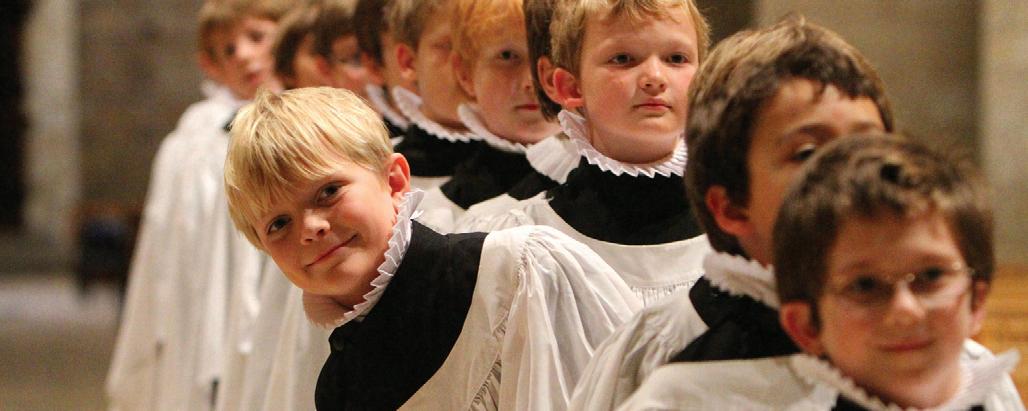
Parents themselves are not always convinced either, these days. Fewer, rather than more, would be motivated by their child offering his voice to the worship of God. Many are troubled by the workload (despite evidence that piles up, year on year, that choristers succeed at least as well if not better than their non-singing classmates). And if you ask the child at the age of seven whether he would prefer to be out on a field kicking around a football, or inside a chapel singing Evensong, curiously the child says, football. Silly question of course, because choristers do both. So what is it that might persuade a parent to take the upper hand here and persuade their child that it is worth a go – apart from the obvious, and entirely proper, advantage of getting a great education for less than the market rate?
I frequently have to find ways of evoking for new parents the life of a chorister. One of the difficulties these parents have is
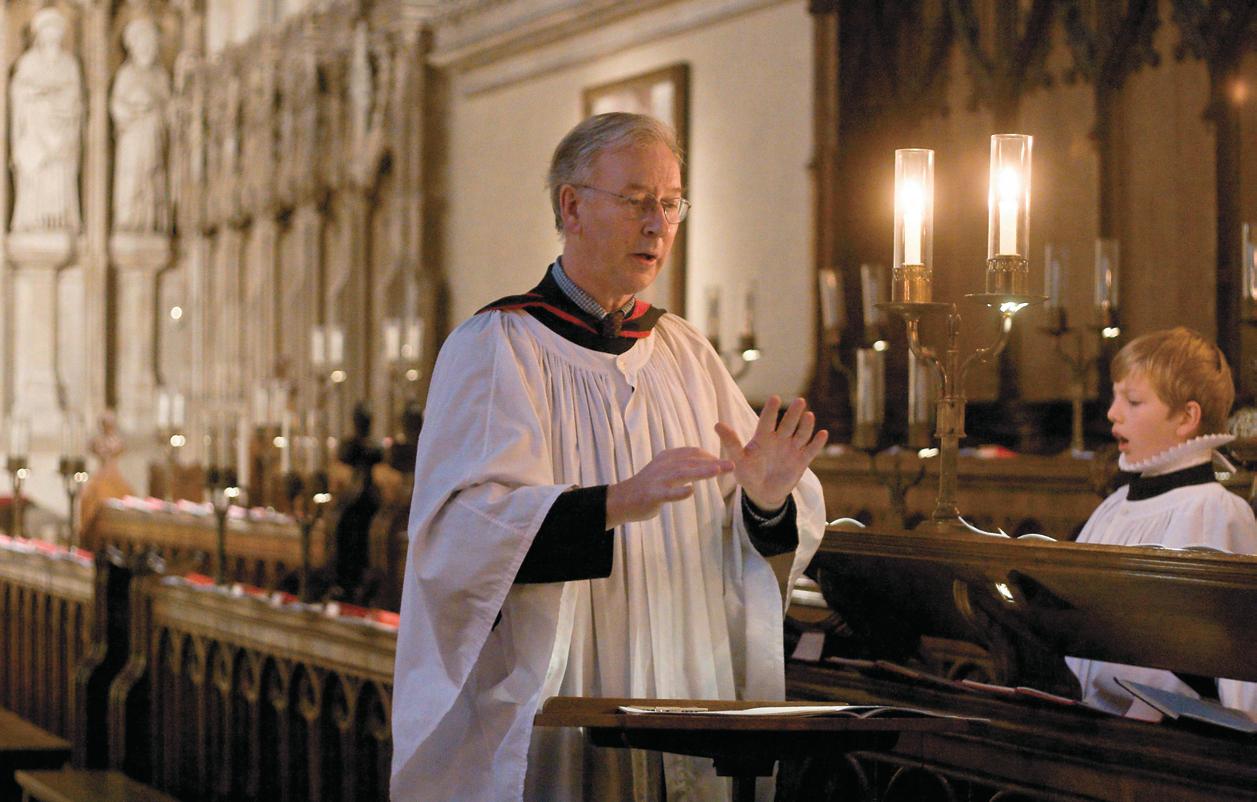
makes young boys want to sing in church? Certainly not peer pressure. Even the knowledge that one of the country’s leading batsmen (Alastair Cook) was a chorister, and that he attributes some of his grit and resolve to the ‘chorister experience’, might not tip the scales.
in imagining that an ‘ordinary’ child could do the job. They attend an Open Day, and hear the existing choristers sing, and think, ‘My, that’s impossible for my son.’ (Of course, they could think, ‘My, what a breeze’, which would be worse, I suppose!) So, I have to convince them that any reasonably intelligent, spirited child without vocal impediment can do it; and that one of the points about the whole experience is the value-added. I do not select choristers who at the age of seven are already writing string quartets. It can be strange to encounter parents whose ambition for their child seems already to be circumscribed by thinking they couldn’t be radically improved. I can of course jokingly refer, in the context of a day-school, to the very high-class child-minding service we offer after school hours, when we will keep a boy profitably occupied until it is convenient for a parent to pick him up in the early evening. But I have a more exalted view of what we offer children in our care.
You would expect me (I guess) to want to talk about the purely musical benefits of being a chorister. You would not be wrong. These young people by the age of 12/13 can and mostly do acquire a professional competence as readers of music, as singers, and (under guidance) as artists. They know what it is to work to a high standard, not to let down the adults who sing with them (and sometimes the adults have to learn not to let them down). They develop extraordinary qualities of ear and a musical sixth sense – some of them to a degree which humbles those working with them. They immediately hear a tuning problem, they adjust automatically to an ensemble need, they sense what’s coming up in terms of pacing. All that gets wired-in at an age when we can reckon they will then possess those skills for life.
Talking of wiring-in, the myriad skills they require would
very easily daunt an adult who was given five years to acquire them. Do not let us forget that it is precisely in this age span (7-13) that the most rapid and lasting gains can be made in learning. I tend to think of my top two years as first-year undergraduates! If I want to explain to them the conventions of sixteenth-century mensural notation, I can do that, and they will get it. If I want to discuss the philosophical-cumaesthetic issue of value-judgements, I can do that. If I want to explain the style differences between Byrd and Tallis, I can do that too. At the same time, I am drilling the Year 4s about the difference between 3/2 and 6/4.
There is indeed a wide spectrum of ages, if not of talent, in a chorister group. This brings its own challenges. Schoolteachers don’t have this problem: by convention they gather together, in a single class, students of the same age. I gather together in my class students across a five-year gap, from 8 to 13. And that’s a huge gap socially, and in terms of what the youngest can’t do and the oldest can. Within the British tradition we don’t have a system of preparatory choirs, and then main choirs. After the probationer period, the proposition is: dive right in and see what you can do – in public with the next anthem by James MacMillan (ie far too difficult for them). So you run at the speed of the top years, and the younger boys simply have to hang on, behave, not get in the way. It’s a roller-coaster. But, my word, it’s the best and most efficient way of getting them up to speed.
I mentioned discussing value-judgements a paragraph ago. This fascinates me. In the university sector we twist ourselves into knots wondering how we have the authority to say that the work of one composer is better than the work of another. We are uneasy about imposing what might be considered a view engendered by our ethnic status, our social status, our
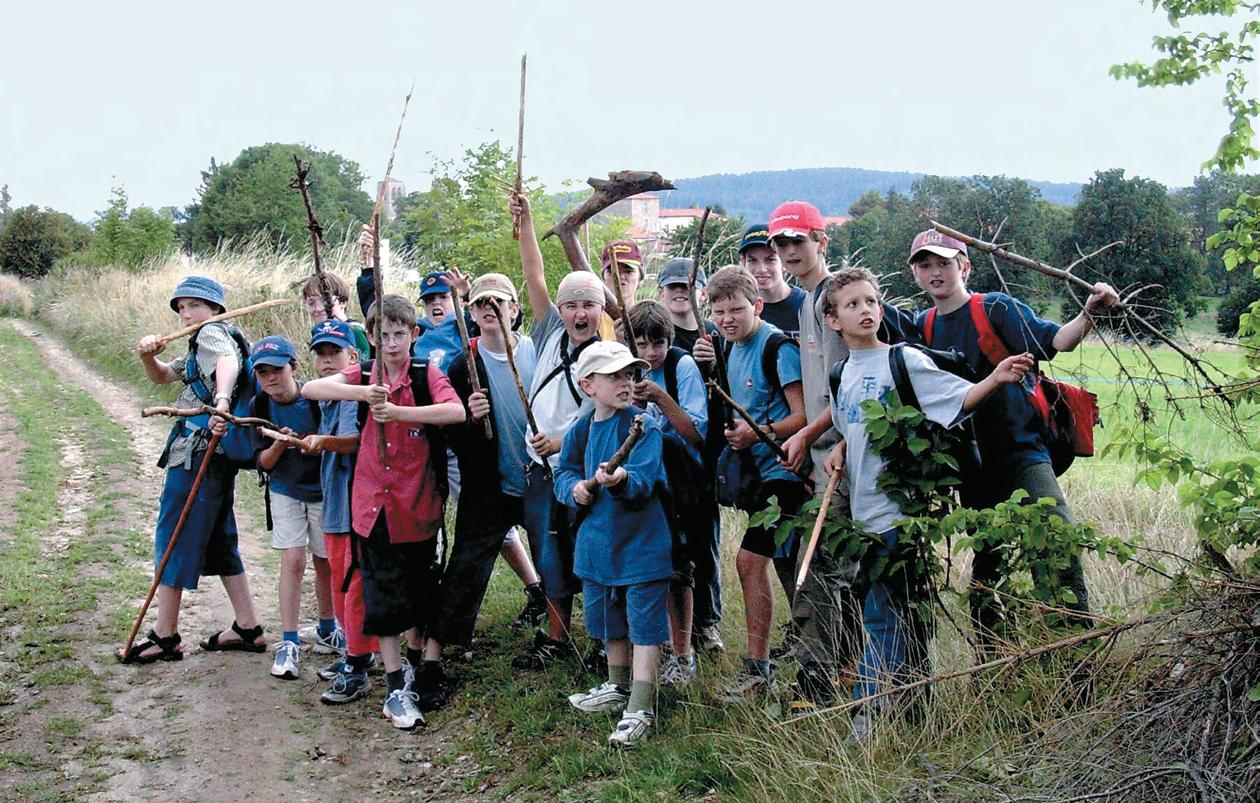
professional status. I’m glad to say that children don’t have these hang-ups. For them the music is either boring, OK, or brilliant. These categories would, of course, be risible if used in an undergraduate essay, but my choristers are spared that punishment. What I like about this is observing that they actually do like the Canon1, which the academic fraternity delights to knock. When we sing Bach or Mozart or Haydn, they like it. When we sing ******* (sparing his blushes) they like it less. And Bach comes out of it very well, partly because it’s a challenge they can surmount, but also because at a level I don’t really want to interrogate, they appreciate his genius. This, they are saying to themselves, is amazing music.
When choristers put on their kit – ruff, cassock and surplice – the world goes a bit soppy. Choristers have a love–hate relationship with their kit. They are proud of it, and what it signifies. They also want to curl up and die when they think it’s seen as effeminate, or pretty. And I don’t blame them. The last thing a chorister can be is effeminate (am I still allowed to use that word without offending 50% of the world’s population?). The job is too tough and unforgiving for them to be anything other than resilient, purposeful and determined. It makes them ‘a man’, by which I mean it teaches them the virtues of disciplined hard work, delayed gratification, and delivering the goods. They become professionals. Some people think that’s all wrong: they should be allowed to remain as ‘children’. Try asking the boys what they think, and they’ll tell you: I want to be a great singer, just like those clerks I sing with. And please, don’t treat me like a child!
That dimension of working with adults at the same thing, everybody in it together, is supremely instructive for a chorister. They learn so much from it. I can’t think of another activity where each – child and adult –plays an equal part in a common endeavour. But it is not only the fact that they participate in this richer world, but that the adults, without saying a word, nourish the children’s education: with their commitment to the task, their quality of singing, their musicianship, their support of the top line. It’s a fascinating world of ‘exchanged contributions’: the men can’t do without the boys, the boys can’t do without the men. One of the most eloquent moments that arises, and so very naturally, from this relationship is when a clerk, after a good bit of solo work from a treble, quietly congratulates that boy as he leaves after the service. Few things speak so well of the manner in which each supports the other. And choristers really want to be treated as responsible and competent musicians. What a fantastic insight into the ‘real world’, one that values their particular contribution for what it is: something that only they with their unbroken voices can bring.
There is something else I’d like to say about the chorister experience, and it is this. It introduces the child profoundly to areas of aesthetic experience normally closed to children. Their encounter with beauty is not to be underplayed. It is not a matter of preaching to them about beauty, or even mentioning it, but it is most definitely knowing at the close of a great anthem by Byrd, or the closing chorale of Bach’s St John Passion, that all of us have been in a special place, done a special thing, and been moved by it. This of course gives children a true love of music, and for the right reasons. I wouldn’t claim that it always makes for a ‘nicer’ person. In any case, the notion of using music as an agent in socialising a child seems to me to be somewhat utilitarian. On the other hand, I recognize that contact with beauty is wholesome, and develops part of the character that rocket science might ignore.
I have mentioned that choristers ‘do a job’, and it is perhaps worth considering how this plays into their experience. I find myself immediately reaching for the anecdote of a chorister in my choir who, not feeling so well before a service, made sure to tell me – so that I would know he wasn’t slacking in the stalls. It wasn’t a matter of bowing out of the stalls, but of seeing through the commitment. OK, he wasn’t just about to die, and there are more heroic acts than that, but from a child this was a wonderful sign of his commitment and loyalty. That is indeed a transferable skill. I could concoct a long list of them, such that I would expect every parent to want their child to be a chorister.
It is not all fighting fevers in chapel; it is also taking music out to other places, learning to perform in the more generic sense, and profiting from the excitement of visiting the USA, or Cyprus, or just popping over to Belgium. Different languages, different cultures, different landscapes. But the choristers do not see these as mere tourists: often they get privileged access because of their singing (as for instance when we visited the less frequented parts of the Vatican and St Peter’s a couple of Decembers ago). The easy acclimatization to other cultures extends to wolfing down the most alarming sushi in Tokyo, whilst we adults look on with disbelief, knowing how, back at home, they would faint at a salmon sandwich.
One of the hugely important aspects of the chorister life is the fact that they offer up their work as a gift, which demands from them a generosity of spirit and a determination to measure up both to the job and to public scrutiny. The public scrutiny is certainly there. Just this morning, a stranger got off his bike in the Turl, and spoke to me. He wanted to say just how much he appreciated New College Choir. This is something I take back to the boys, because it certainly wasn’t me singing when he heard the choir! And for him, and indeed for us all, the religious, indeed Christian, context is allimportant here. It informs a chorister’s music-making in a manner simply not reproducible in a concert hall. In a secular age, the choristers’ encounter with religious texts and religious beliefs equips them at the very least to take an informed view of the Christian faith. And they do learn the meaning of ineffable, even if they can’t put it into words, and they do learn about immanence. These are treasures without parallel in a child’s life.
Footnote 1 A term used in academic circles to describe the masterworks of the master composers, but at the same time an idea contested by those who think it stultifies a discussion of a wider repertory.
Edward Higginbottom has been Director of Music at New College Oxford across the careers of 36 generations of choristers. He doesn’t feel a day older. He is Oxford University’s first ‘Professor of Choral Music’. He directs the music of the daily office in New College chapel, takes the choir on tour, lectures in the Music Faculty, gives tutorials, writes articles, and plays Haydn piano sonatas as often as possible. For his work in the sphere of French music and education, he has been awarded the decoration ‘Commandeur de l’ordre des arts et des lettres’. He remains very engaged with French music, one of his most recent and successful recording projects being of music by François Couperin. Under Edward Higginbottom, New College has been in the forefront of new trends with its weekly webcast from the chapel, and the entrepreneurial venture of the choir’s own record label NOVUM, whose purpose it is to bring the extraordinary work of New College choristers to a wider audience.
On Tuesday, 5 June, HM The Queen’s Diamond Jubilee will be celebrated by a service at St Paul’s Cathedral. The Queen and many members of her family will attend a service of thanksgiving, to be conducted by the new dean, Dr David Ison. Further details of the service will be available in due course on the St Paul’s website.
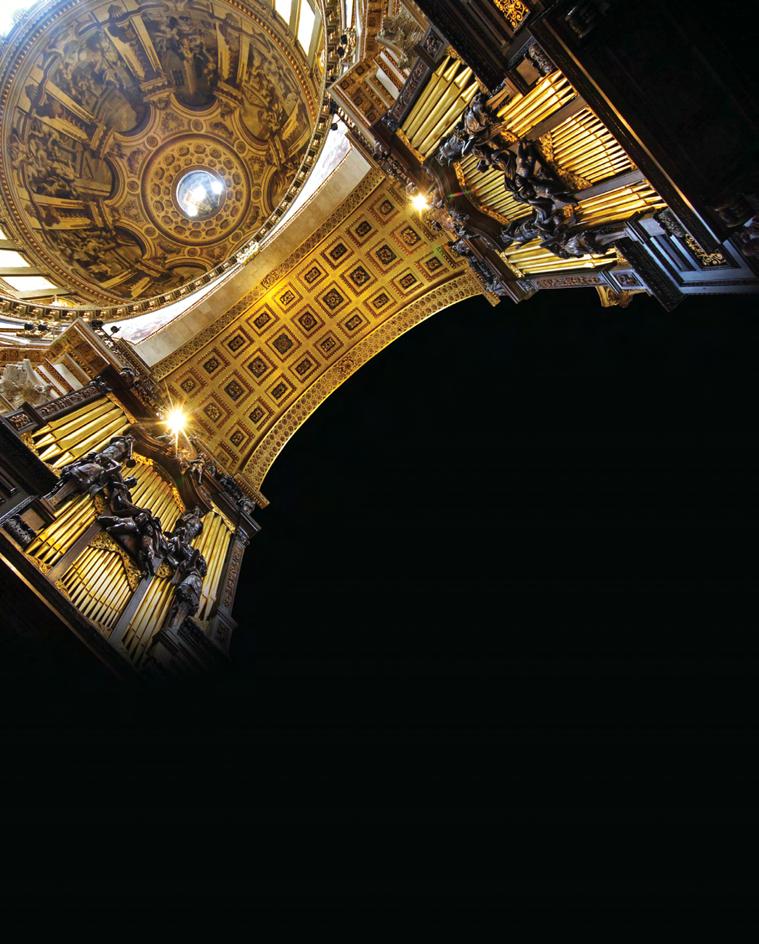
From May to September, there will be one recital per month at St Paul’s, as is their custom in the summer. This year, in a neat avoidance of the Y chromosome, the recitalists are:
Sophie-Veronique Cauchefer-Choplin
Margaret Phillips
Isabelle Demers
Catherine Ennis
Depending on your familiarity with the national and international organ ‘scene’, some of these names may be more recognisable to you than others:
Sophie-Veronique Choplin is co-titulaire at St Sulpice in Paris, won the second prize in improvisation at the Chartres Organ Improvisation Competition and is Organ Professor at the Royal College of Music. Have a look at her improvisations on YouTube: armed with and informed by the principles culled from Ronny Krippner’s article on p12, you will be doubly amazed at her skill, which is legendary amongst her peers. As well as her duties in St Sulpice, she also has an extensive international recital career and is frequently invited to judge national and international organ
concert organists – in many places all over the world and she has made many CDs (most notable, perhaps are her CDs of Bach’s organ music, reviewed in recent issues of CM). Over the past year she has played in England, Germany, Switzerland and Canada, and given masterclasses in Oxford, Cambridge and Oundle. She is also Professor of Organ at the Royal College of Music.
Isabelle Demers is from Canada. She has been a prize-winner and finalist in several international performance competitions, and is rapidly becoming recognised as one of North America’s most virtuosic organists. She made her UK debut at Birmingham Town Hall in October 2011, and is performing in Ripon, Glasgow and Wells Cathedrals this year.
Catherine Ennis is Organist and Director of Music at the church of St Lawrence Jewry in the City of London, where her series of Tuesday lunchtime recitals continues a century-long tradition of organ music. She has made many recordings, and broadcasts frequently for the BBC. Uniquely, she has been the catalyst behind three major instruments in London, those at St Marylebone (1987), St Lawrence (2001) and the William Drake organ for Trinity College of Music, Greenwich, where she is on the staff. She is also the founder of the London Organ Concerts Guide, which seeks to persuade a wider audience that the organ can be of more than minority interest

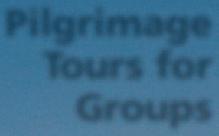

Admission: £10 (£7 concessions) on the door. Seating unreserved All concerts start at 6.30 pm
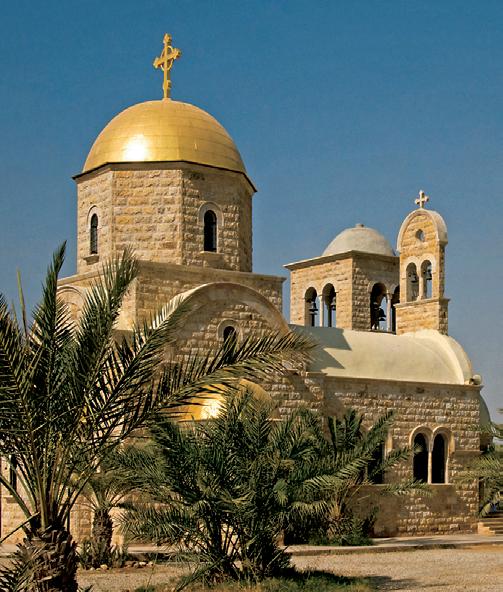
Age: 27
Education details:
MA in Music from Magdalen College, Oxford

Career details to date (and dates):
Organ Scholar at Magdalen 2002-2005
Assistant Organist at St George’s Cathedral, Perth, Western Australia 2005-2006
Organ Scholar –St Albans Cathedral 2006-2008
Assistant Organist –Magdalen College, Oxford 2008-2009

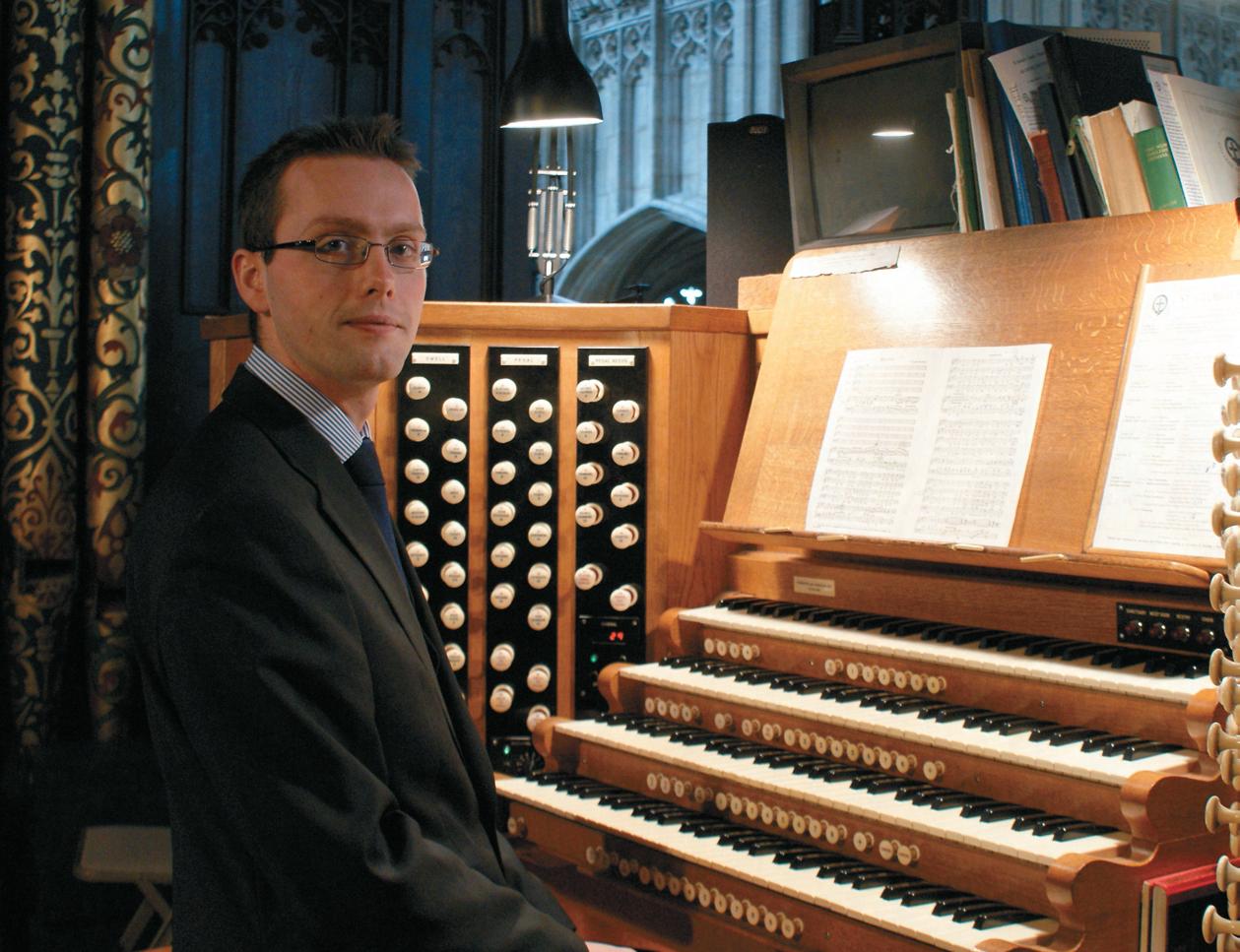
Assistant Director of Music, St George’s Chapel, Windsor Castle 2009–present
Were you a chorister, and if so, where? Did you enjoy the experience?
I was a chorister at All Saints’ Church, Northampton under Russell Jackson, Richard Tanner and latterly Simon Johnson. I enjoyed every minute of the experience and am very grateful for the opportunities that I was given there. For example, I got to play for evensongs regularly from the age of 15 and, during periods of sickness/interregnum, conducted the choir many times. This would have been much less likely if I had been attached to a cathedral music department.
What did you enjoy most about being an organ scholar at St Albans?
I could write several pages in response to this question but I’ll try to keep it brief! At St Albans I enjoyed being part of a music department where excellence was expected every day,
and where the overall standard of the music was never allowed to fall beneath a certain level. Despite this, it never felt overly pressurised, rather it had a constructive and encouraging atmosphere in which hard work and good performances were noticed and appreciated by everybody.
What or who made you take up the organ?
I was inspired to take up the organ by listening to the regular performances (particularly the incredibly skilled accompaniment) of the two assistant organists at All Saints’, Northampton –Ron Gates and Roger Palmer. I also quite like being the centre of attention!
When you were at school, did you think you might end up where you are now?
I certainly hoped that I’d end up where I am; in fact I had an ambition to work at St George’s from about age 16. I never thought that it would happen though, simply because these jobs fall vacant infrequently and it is just luck if you’re at a stage to apply for them.
You are also a composer. What have been the major influences on your compositions?
I’m only really a (very) part-time composer, but I enjoy it when I get the chance. I gained a lot of inspiration to compose from Bill Ives, who was Informator Choristarum (choirmaster!) at Magdalen when I was an undergraduate. He has written a lot of music especially for the slightly unusual liturgy that we had there and it was always a sensitive and musical response to the text and fitted the atmosphere of the services perfectly. In terms of musical influences, these are probably too numerous to number but I find the mid–late twentieth-century British composers such as Britten and MacMillan very exciting.
What organ pieces have you taken up recently and why?
I’ve recently begun studying the organ with Henry Fairs at Birmingham Conservatoire with the intention of broadening my repertoire and learning about the stylish performance of areas that I haven’t necessarily covered in the past. So, I’m currently learning Reger’s Phantasie und Fuge uber BACH along with some Frescobaldi (could the contrast be greater?!).
What, in your experience as a teacher, makes a good organist?
A good organist is somebody who has the diligence to practise to perfection, the experience/intelligence to adapt a performance to a particular instrument or building, and the flair to give a compelling and musical performance on an instrument that can easily be made to sound bland, boring or even vulgar.
Which organists do you admire the most?
Thomas Trotter who leads the way for British (and worldwide for that matter) organists.
Simon Johnson because he is a supreme example of an allrounder –brilliant choir trainer, accompanist, improviser and interpreter. Any aspiring cathedral or church musician should try to emulate him.
What was the last CD you bought?
Tenebrae’s Parry CD. Such an exciting choir!
What was the last recording you were working on?
We made a Christmas CD with our choristers last year.
What is your favourite organ to play?
Queen’s College, Oxford
What is your favourite building?
Magdalen College, Oxford (for nostalgia’s sake!)
What is your favourite anthem?
Geistliches Lied –Brahms
What is your favourite set of canticles?
Gibbons 2nd
What is your favourite psalm and accompanying chants?
Psalm 23 to Bill Ives’ chant
What is your favourite organ piece?
Bach’s Passacaglia
Who is your favourite composer?
J S Bach
When is your next (or last one, if one not programmed) organ recital? Which pieces are you including?
I’ve just recently done Vierne Symphony No 2 at Westminster Cathedral and I’m playing at St Paul’s Cathedral in a couple of weeks. The recital will include the Lemare transcription of Wagner’s Meistersinger Overture.
Have you played for an event or recital that stands out as a great moment?
The first St Albans Pilgrimage service that I played for at the cathedral there really stands out. Desmond Tutu preached to a congregation of thousands packed into the cathedral and the surrounding area.
Has any particular recording inspired you?
When I was younger I gained a lot of inspiration from the recordings of Pierre Cochereau and David Briggs improvising. Nowadays I’m more likely to listen to Brahms Symphonies, but I can honestly say that no single recording has inspired me.
How do you cope with nerves?
If I’ve done enough practice then I don’t feel nervous!
What are your hobbies?
I love cooking and going to the cinema.
Do you play any other instruments?
I used to play the clarinet at school but only organ and piano now.
Would you recommend life as an organist?
When it’s all going well you can’t beat it.
What are the drawbacks?
The hours are slightly unsociable (evening practice, etc) and they make it difficult to see friends as often as I’d like.
What do you think should be the role of the FCM in the 21st century?
In this slightly gloomy economy any financial help that cathedral choirs can get is vital. But that aside, there are many places that could benefit from a more up-to-date view on equality and encouraging more cathedrals/colleges to start girls’ choirs would see a massive improvement in this area.
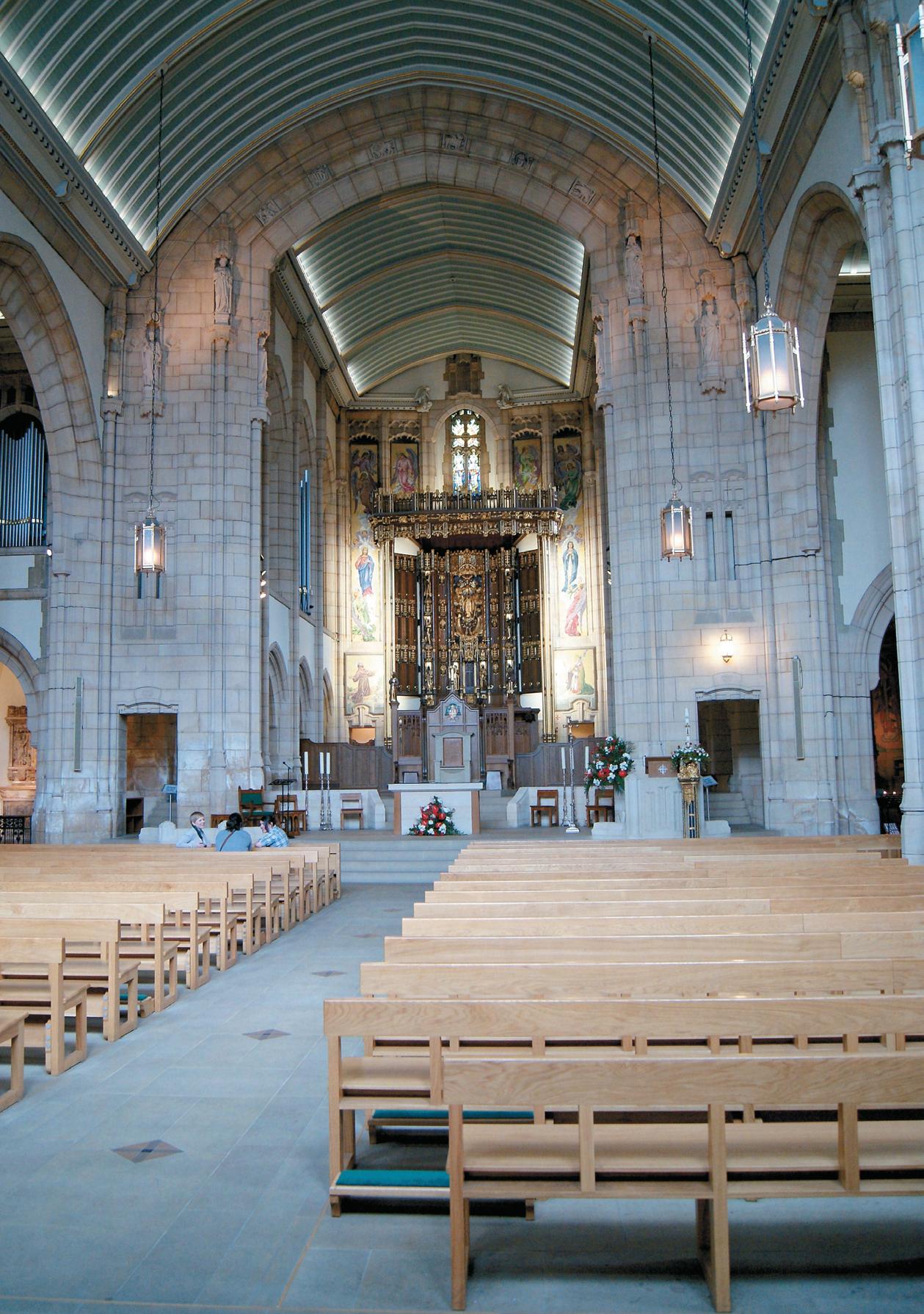
This work comes in many admirable designs and is doubtless enriching to all who take part, but I would wager that there are very few institutions that place school singing at the heart of their choral programme. Since January of this year I have had the great privilege of, and responsibility for, managing the Diocese of Leeds’ Schools Singing Programme –choral provision wholly integrated with its Catholic cathedral, with a proven record of success and, I hope, a bright and sustainable future.
Why do we see thousands of children, visit scores of schools, employ a substantial team of dedicated staff and run –in addition to the cathedral – five auditioned youth choirs?
The Diocese of Leeds stretches from the densely populated heart of West Yorkshire to parishes in the East Riding, North Yorkshire, Greater Manchester and Lancashire, encompassing extremely diverse populations. Leeds Cathedral hosts a substantial worshipping congregation, second only to Westminster in size. Typically, the period following the Second Vatican Council (1962-1965) saw the tradition of chant and polyphony neglected, and a culture in which the see’s music was entirely reliant on the priorities of its incumbent musical director, resulting in very specific excellence at the cost of a broader and sustainable programme.
In 2002 Ben Saunders inherited an excellent girls’ choir as he stepped into his new role as diocesan Director of Music. One superb choir and an otherwise blank slate. With only limited financial resources, and without the institutional musical tradition found in many Anglican cathedrals, it was clear that a new model of cathedral music was required, concentrating not on limited opportunity and closely focused
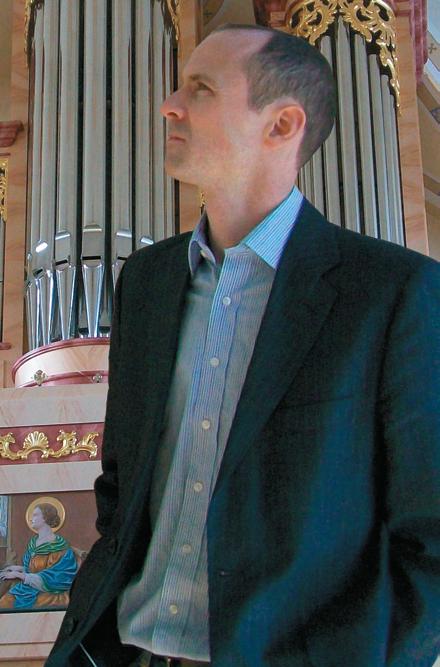
excellence but on a sweeping programme involving children across the diocese, based on the unquestionable potential to use music as an educational, social and catechetical instrument.
Christopher McElroy’s appointment as the diocesan Assistant Director of Music in 2004 provided the vital time resource to develop this programme, and the result of his work is the strikingly impressive structure we see today. We strive to provide a service where highly skilled professional musicians deliver quality singing provision that is educationally appropriate, whether playing pitch-matching games in a Year Three class or preparing the cathedral choirs for broadcasts.
The heart of our music-making is found not in the glorious reverberation of polyphony around Leeds Cathedral but in classrooms across the diocese, as our team of choral directors seek to light the spark in an astonishingly diverse range of schools. Forty-three schools buy choral provision from the diocese as they do any other external service, giving them at least thirty hours of provision per year and access to numerous performance opportunities, from small-school cluster concerts to national broadcasts. Secondary school partners, together with two parishes, help to fund the auditioned youth choirs and in addition host their rehearsals. In return the schools enjoy opportunities for their gifted singers, receive assistance with school worship and participate in various projects –at the moment including most of a sixth form rugby team preparing medieval Spanish songs for a gala concert!
The five auditioned youth choirs provide the musical pinnacle of the schools system, offering lasting opportunities across the primary/ secondary school transition and
demonstrating the excellenceachievable with such firm foundations. Resident at St Joseph’s Church, Bradford Boys’ Choir sing both Mass and Vespers regularly, and maintain a substantial secular repertoire for concerts and competitions. In its early days a thriving SATB choir might have been difficult to imagine, but founder members (now on the verge of leaving for university) currently provide the core of a strong tenor and bass team. The parallel Girls’ Choir fulfils a complementary function, singing fewer services but maintaining a busy schedule of concert and competition performances. In Huddersfield, the Parish of the Holy Redeemer supports two similar choirs, aspiring to the model of the Bradford choirs, and already providing music of commendable quality. In addition, a boys’ choir runs in Harrogate, drawing its members from
The past decade has seen an explosion in choral foundations’ appreciation of the need to work with a community wider than their worshipping congregation and feeder schools.Benjamin Saunders
schools in the north of the diocese.
But what of the cathedral? Since 2010 two junior choirs, boys and girls directed by Lucy Haigh, feed recruitment to two cathedral choirs, with potential choristers drawn from Leeds schools participating in our singing programme, ultimately leading to the ‘outreach’ supplying the majority of the cathedral choristers. The cathedral choirs sing Vespers and Mass daily, Sunday to Thursday (one of the delights of working here is having something almost approaching a normal weekend!), with girls’ and boys’ choirs sharing the rota with choral scholars and a volunteer adult choir of vibrant quality.
In a bold and socially radical move, the diocese has committed substantial resources to developing a state-sector choir school in Holy Rosary and St Anne’s school in Chapeltown, an innercity district of extremely varied ethnicity and one which faces much deprivation. The cathedral choir school project continues to go from strength to strength. Five months ago things were looking financially precarious to say the least, but thanks to generous donations from the Holbeck Trust, Leeds
Christian Charitable Trust and a growing number of private donors, the project is now on a sound financial footing for at least the next three years. This is a great relief for everyone involved and we are all grateful for the chance to concentrate on the real business of the choir school: the development of excellent singers across the entire school.
Recently, Leeds Cathedral School Choir won first prize in the Novice Class at this year’s Mrs Sunderland Festival in Huddersfield. The children were more than delighted to win their first trophy, but more significant from Choir School Choral Director Sally Egan’s point of view was the other prize that the choir won at the Festival, for ‘Choir with the most Potential’. Ms Egan, a former vocal coach at Westminster Abbey and Westminster Cathedral (and a past pupil of HRSA School) says, “These children are bursting with potential, as everyone knows who has the pleasure of working with them, and it is lovely to have that confirmed by other musicians.” The choir will make its first live broadcast on national radio later this year, when they sing Morning
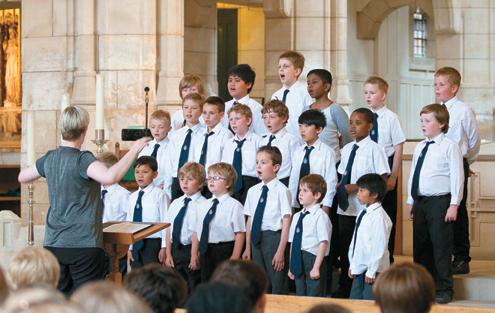
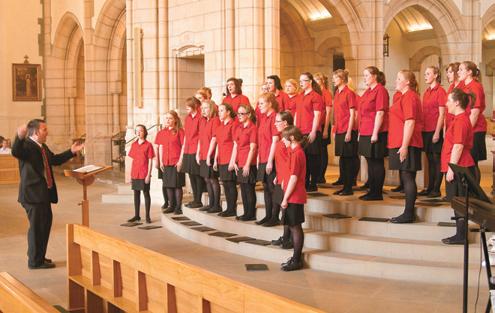
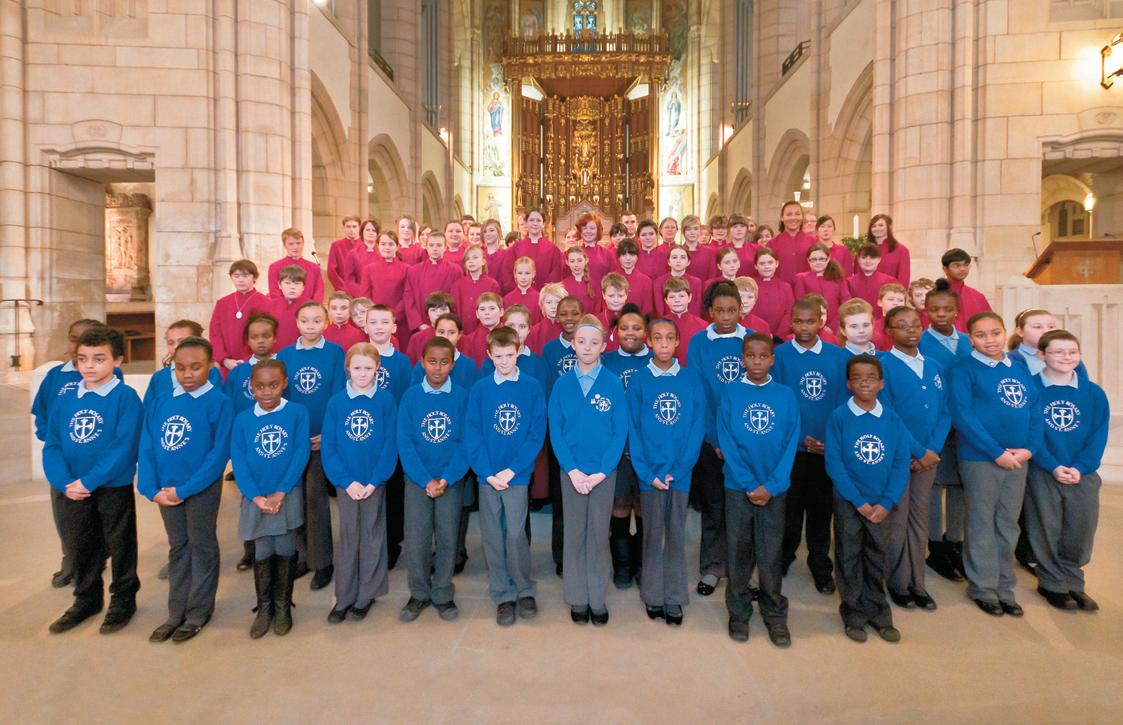
Worship on Radio 4 from Holy Rosary and St Anne’s Church in Chapeltown on 17 June. The children are already hard at work learning Jehan Alain’s Messe Modale, which they will perform with the original orchestration of string quartet and flute.
A cursory glance at the music department roster might suggest we have luxurious levels of staffing, with perhaps the largest team of full-time musicians employed by an English diocese. This would seriously underestimate the volume of work created by the schools programme. Our three choral directors average twelve school sessions per week, followed by youth choir or cathedral rehearsals/ services and Sunday duties. As anyone experiencing the unpredictable nature of class music-making will know, this is an exhilarating but demanding schedule! We strive to play to the strengths of our staff and attempt to ensure that flexibility is maintained, with choral directors able to work on specific projects with choirs, or to allow us to change staff duties to make best use of resources at any given moment. My work sees me coordinate this
programme, with responsibility for the overall management of staff, maintaining the income levels from the school provision, and ensuring that our partner schools are receiving an excellent and educationally relevant service. I spend plenty of time at the coalface, however, directing both Bradford Youth Choirs (assisted by our newest Choral Director, Charlotte Kitson), four regular school sessions and a number of secondary school project groups –it certainly prevents me from doubting the intensity with which our staff work! We maintain a part-time Assistant Organist position –an ideal postgraduate opportunity which allows the holder to develop not only their playing skills, but also provides as much experience in liturgy, planning and schools work as the postholder (presently Daniel Justin, completing an MMus at Huddersfield University) wants. The team is completed by an organ scholar and of course, with overall responsibility for the department, the Diocesan Director of Music, Ben Saunders.
All of this would be but sound and fury if the content delivered was poor. The educational model puts appropriate repertoire at the heart of our schools work, combining this with meeting the liturgical needs of the school and simultaneously developing the spiritual life of the singers –‘he who
sings prays twice’. The majority of our primary schools have an hourly session every week, more often than not divided between two classes at the discretion of the school and choral director. While repertoire will frequently include relatively sophisticated and technically demanding music, we never impose an alien ‘cathedral’ ideal on the school environment; secular repertoire occupies at least half of our schools work and helps us bring imagination and spark to less readily accessible music. Our choral directors aren’t given a set curriculum, although joint services and concerts will often dictate a shared repertoire, but we are always conscious of the requirements of the National Curriculum, and in many cases school staff are surprised at the levels their children can attain through vocal performance. Performance is at the core of all music-making, so naturally we aim to offer our classes as much of it as possible, a valuable experience whether this is leading an assembly, using a class to teach the school a new mass setting or singing to thousands on a BBC broadcast.
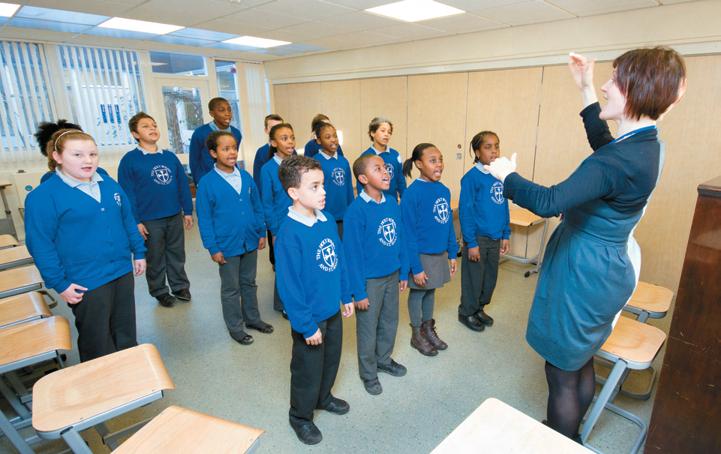
Amidst this plethora of choral music, the organ’s ‘high esteem’ and ‘wonderful splendour’ might be readily forgotten. It is, in fact, confirmed; the cathedral’s magnificent Norman & Beard Edwardian instrument was restored and enlarged by Klais, and inaugurated in 2010. A number of parishes have received highquality second-hand instruments, and most recently Anton Skrabl installed an acclaimed new instrument in St Patrick’s Church, Huddersfield, in addition to restoring the fine Hopkins & Son instrument in St Joseph’s Church, Bradford, transforming it into what promises to be one of the region’s finest instruments.
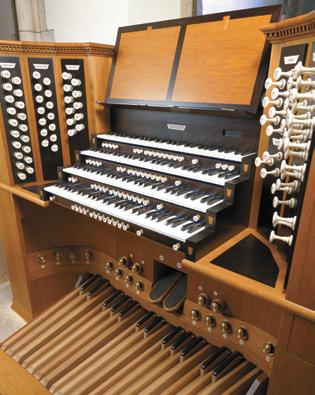
Assuming it exists, how can our success, be defined? I would hope that any of our schools would reflect on our provision and affirm that we have enriched the Catholic life of their school, both for students and staff, both in collective worship and individual prayer. We see in our schools a growing recognition of singing as a central part of human expression –although I doubt it would be described in such portentous terms!
More obviously, a narrower definition of success can be measured by competition participation (a Senior Choirs Award at the National Festival of Music for Youth in Birmingham for their ‘outstanding musicianship’ and the top UK choir in the senior children’s choir class at the Llangollen International Eisteddfod) or the frequency with which our choirs broadcast and record –for example Radio 2’s Christmas Day Sunday Half Hour special, several Radio 4 Daily Services, and the recording of Duruflé’s complete choral works for Brilliant Classics. The experience we provide staff with leads to excellent career progression, exemplified by the appointments of Christopher Johns as Director of Music at Leicester Cathedral, Christopher McElroy as Director of Music at Liverpool Metropolitan Cathedral and, most recently, Keith Roberts as Head of Choral Music at St Aloysius’ College, Glasgow. Ultimately we would hope that our approach develops a lifelong love of singing in the children we work with, enhancing their faith and giving them all the acknowledged additional benefits that choral singing engenders. Perhaps the old adage that success is 95% perspiration holds true –our staff and singers certainly put the work in –but I hope we might admit to a little more than 5% inspiration!
Further information can be found at www.dioceseofleedsmusic.org.uk
Thomas Leech was appointed Director of the Schools Singing Programme in January of this year. Educated at Downing College Cambridge, he was Organ Scholar at Norwich Cathedral and subsequently Assistant Director of Music at Ripon Cathedral. He holds the prestigious post of Musical Director for Bradford Festival Choral Society and enjoys a busy schedule as a recitalist. His playing has been broadcast on national radio and television and heard on a number of commercial recordings. His debut solo disc will be released later this year.
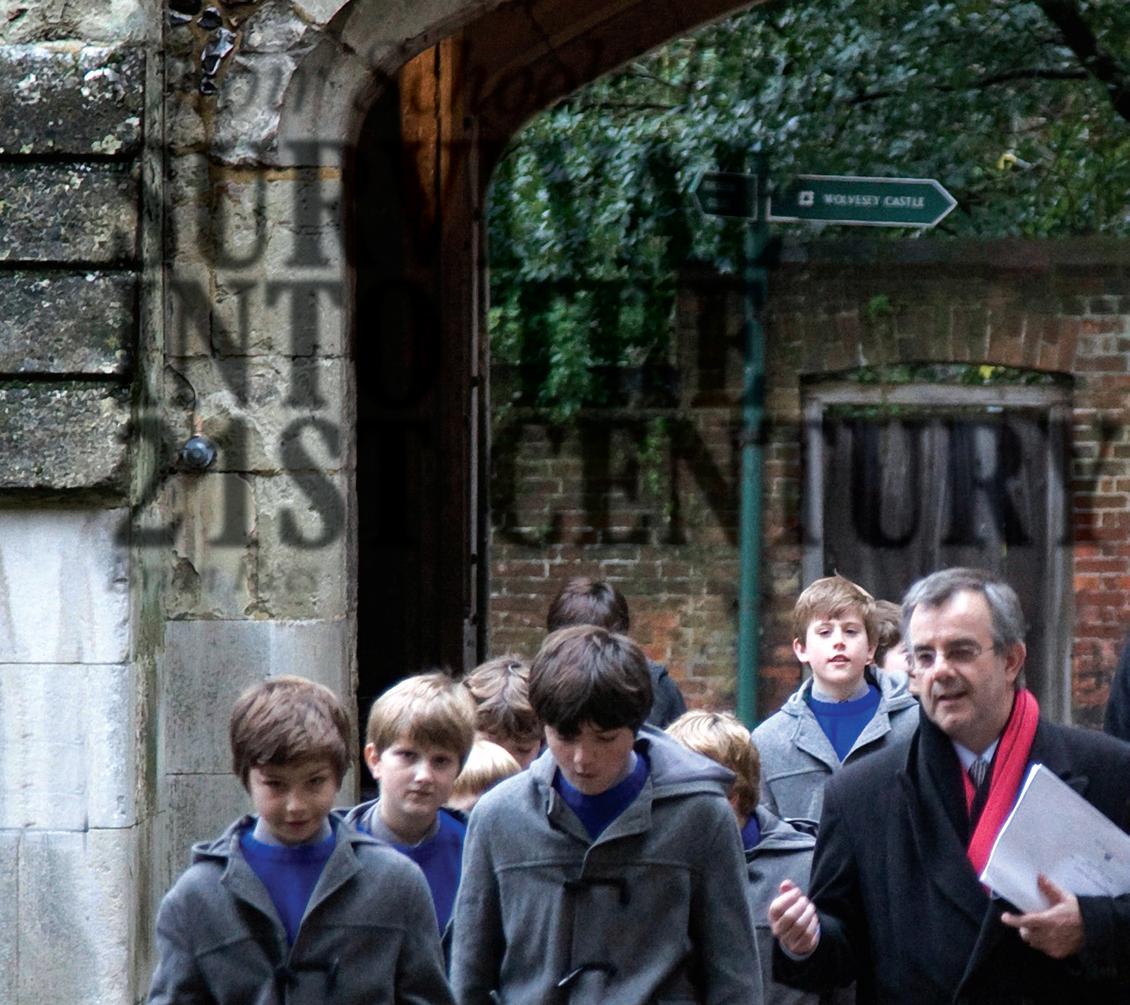

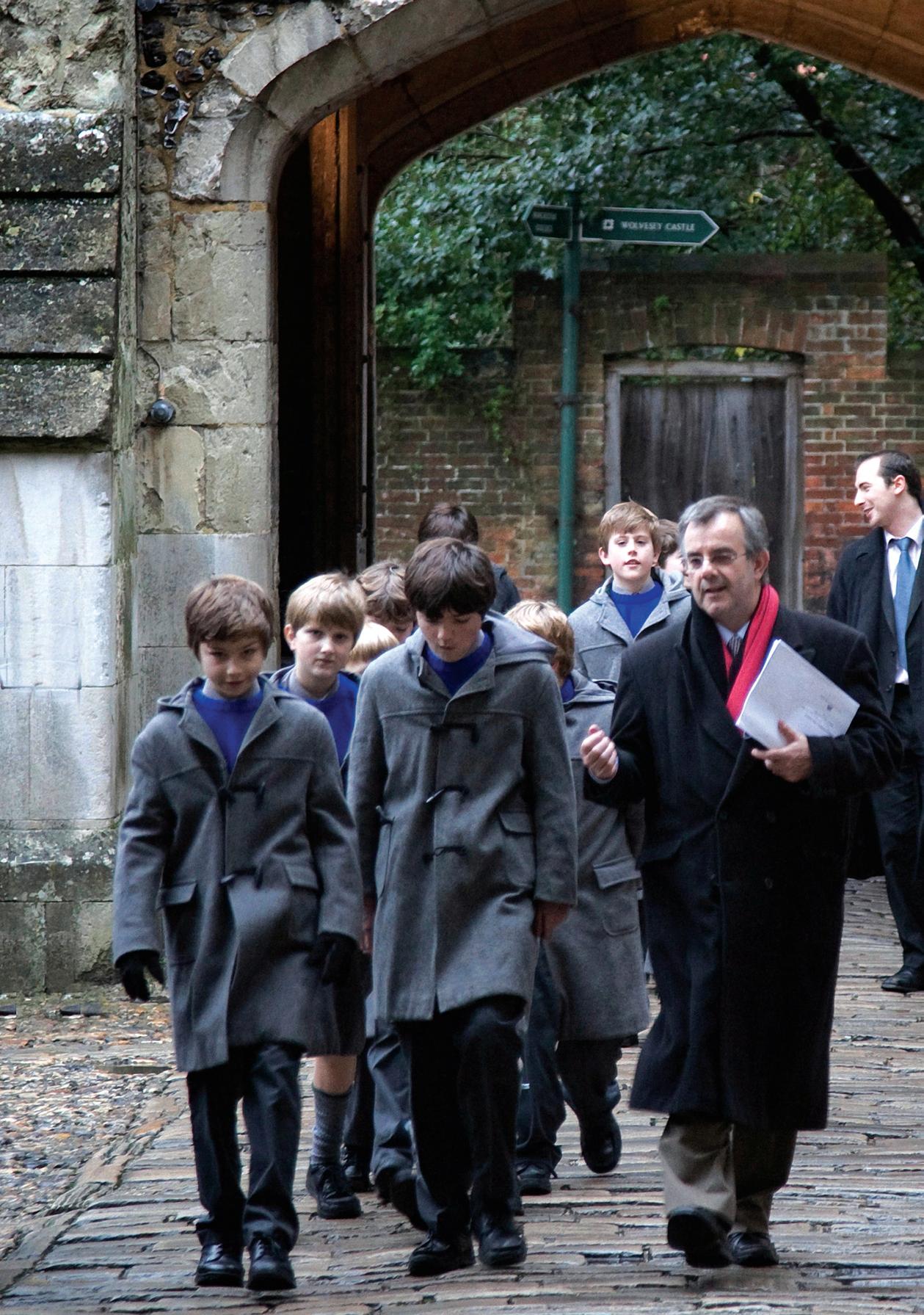
In July 2011 I retired as headmaster. I was ready. I had filled the role for almost twenty years, fourteen of them in a choir school – The Pilgrims’ School, Winchester. The Pilgrims’, with 250 boys aged four to 13, was founded in 1931 by the then new dean of the cathedral, Dean Edward Gordon Selwyn, as the successor to a rather discredited Winchester Cathedral Chorister School. Like many schools of the time, the standards were poor, the discipline lax with severe beatings and bullying, and the expectations low. Dean Selwyn, educated at Eton and King’s College Cambridge, for a time a Fellow of Corpus Christi Cambridge, and the former Head of Radley School, could not countenance this, and within a year he had resolved to shut it and start again.
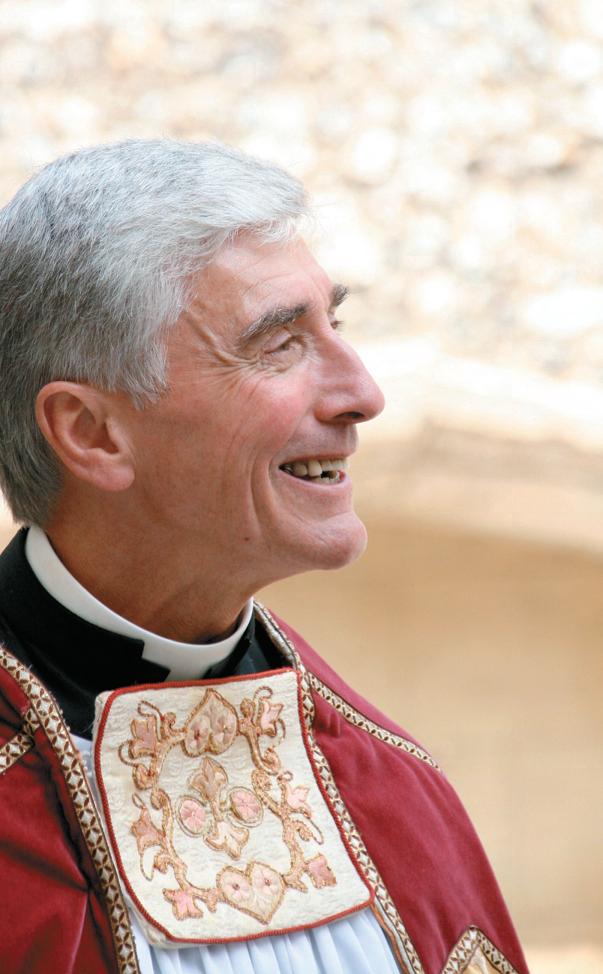
From the beginning, The Pilgrims’ was to be overtly academic and sporty, and its record of scholarships and awards – dating from 1933 – is very impressive for a school of its size. The Pilgrims’ is notable also in that it is a ‘double’ choir school, educating the 22 choristers of Winchester Cathedral, and the 16 quiristers of Winchester College. Both groups are of ancient foundation. The quiristers are an integral part of Bishop William of Wykeham’s original vision for his new Winchester College (1382), and together with the 70 scholars, form his ideal ‘nursery’ for his other academic foundation, New College Oxford (1379). The quiristers were educated within their own school of 16 boys until 1966, when the college asked the cathedral if they might join The Pilgrims’, for the benefit of both. And so it has proved. For the quiristers it meant no more setting and lighting of the fires for the ‘College men’, nor serving at scholars’ tea.
The cathedral choristers, for their part, are of more ancient date; records suggest that boys ‘with unbroken voices’ sang in the ancient abbey/cathedral’s Lady Chapel from the seventh century and lived and were educated within the abbey’s precinct. Suffice it to say that today the 38 professional singing boys of The Pilgrims’ are a formidable force within the school, generally for good, certainly raising standards and expectations and sound levels, and rarely in competition with each other – except at the annual Choir Schools’ Western Divisions’ football competition where each team competes fiercely for a win against all comers.
Delighted to have been a member of the Choir Schools’ Association Executive for over a decade, and then Chairman of the Association for two years, I determined in that role to visit as many of our choir schools in England as I could: all those I saw were in excellent heart and wonderful shape. I had the joy of visiting our Welsh schools, St John’s (RC) College and The Cathedral School, Llandaff in Cardiff, and also our Scottish one, St Mary’s Cathedral School in Edinburgh. Further afield, I visited one of our overseas members, St Thomas’ Choir School, in New York City. Each one welcomed me warmly and each was reassuring, full of enterprise, pride, enthusiasm and commitment. Each was unique. Each was worthy of the designation ‘choir school’, for at the forefront of every school’s mission was an awareness that the school existed foremost for the education of the choristers, regardless of the school’s size and the other challengers for primacy. There were also common issues to share.
Over the last fifteen years I have witnessed some profound changes and have become aware of serious challenges within my own school and in our other choir schools. Without documenting these too closely, I think they can be summarised generally under the headings of the choir, the cathedral, the school and society more generally.
Our choirs presently are buoyant and strong. Choral standards have become higher over recent years, a fact borne out by recordings and live performances. In fact, it is held that the standard of music today in our cathedrals and collegiate chapels is generally better than it has been ever in our history. Musical expectations are sky high among our hugely impressive cathedral directors of music; the professional standards and personal expectations of the choirs are keenly felt – and this among both the choristers and lay clerks; the clergy are probably more demanding, and the congregations are arguably more aware of what can be achieved than ever, thanks to radio, television and other media. These factors have been accompanied by a more realistic approach to the number of services that can be prepared and sung well, especially by the boy choristers. The introduction of separate choirs of girl choristers, first at Salisbury (1991) and increasingly through other foundations, has made the workload more manageable for the boys: at Winchester, for example, the boys used to sing all three full Sunday services with little time in between, and much of that was taken up with rehearsal. Today they sing only two, the girl choristers singing either Mattins or Evensong with the men.
It is remarkable what a transformation this relatively small but important augmentation has made, and to the improvement not the detriment of standards, sound and repertoire. School exeats and half-terms are also now routinely taken off, and this, too, has helped stamina (and health), school standards and family life for chorister siblings and parents. Also, there has been a renewed commitment to academic standards for choristers, and a nodding acknowledgement of the importance of their sports and general fitness and social integration into schools which are –
in most cases – increasing in size as a financial necessity: this too has helped. Tours used to feature hugely and were an important aspect of a chorister’s life. But these are now waning as the costs have soared, the safety risks associated with home stays and travel have become an increasing administrative burden, and as parents (and the choristers and lay clerks too, I suspect) have become more reluctant to disrupt their family holiday plans and take on this added responsibility. Recruitment to choristerships has remained steady mostly, but has required a greater effort by the foundations to attract and retain the very best. Although the annual vocal auditions remain in all choir schools, these are frequently augmented by informal auditions, ‘Be a Chorister for a Day’ offerings, and much higher profiling of the advantages that choristerships can give. This challenge of recruiting and retaining can only increase, I fear, for it is hugely demanding and against the culture of today (something I will develop later).
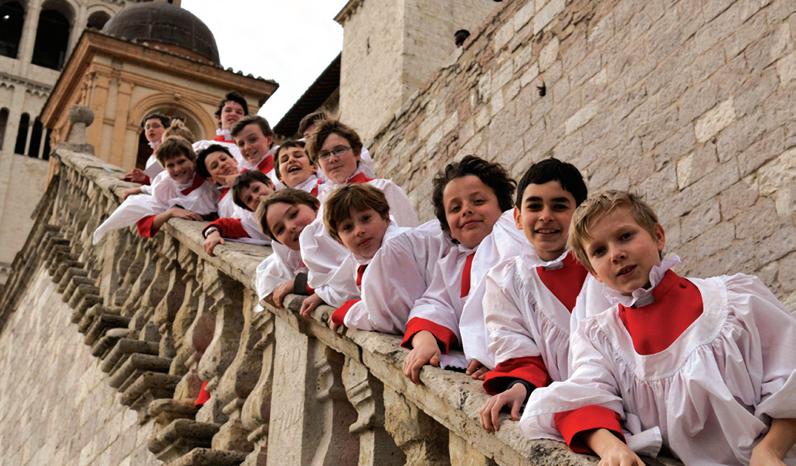
Then there is the astronomic cost implication of such fine music-making. Although there are five publicly-funded choir schools in England (Southwell, Bristol, London Oratory, St Edward’s Liverpool and Peterborough), many choristers still
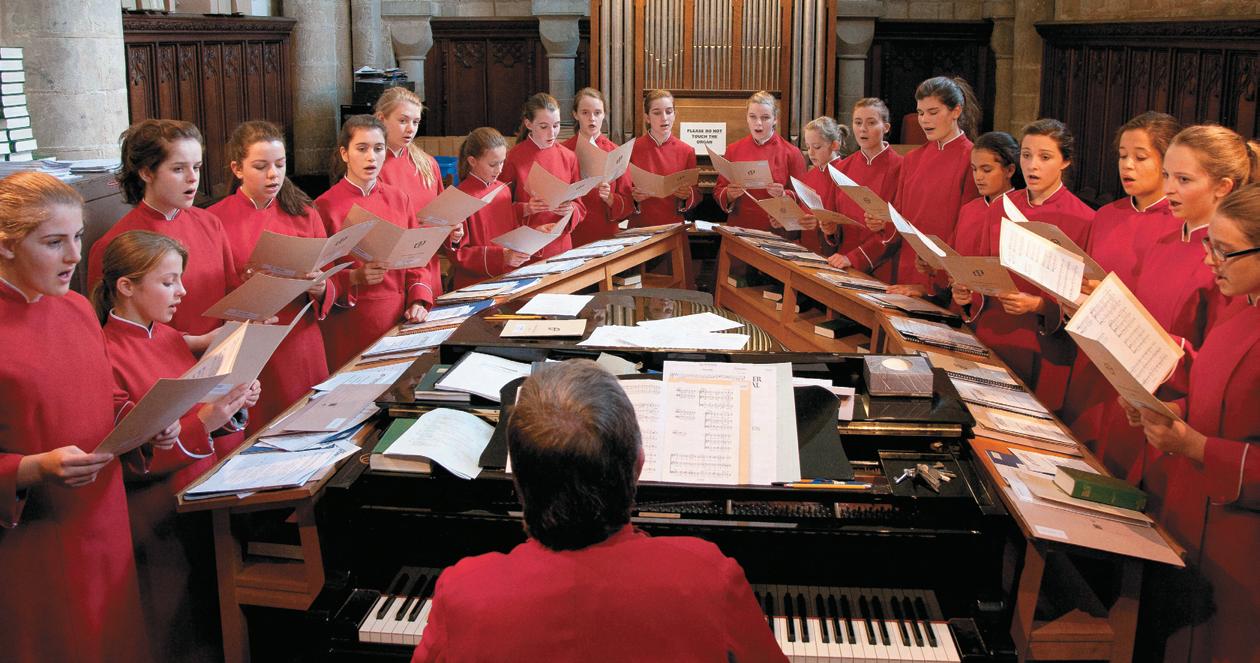
board at independent schools, these often themselves founded by the cathedrals and colleges in centuries past because of the high attendance required; the schools also allow children from wider afield to experience the benefits of such a choral education. But fees to such schools have soared, and the pressure on foundations, parents and schools (who endeavour to provide helpful ‘top-up’ bursaries) have become overly stretched. The Choir Schools’ Association tries to help through limited bursary provision, as does the Friends of Cathedral Music and other committed charities. Happily, the government also provides some useful but limited aid through the Music and Dance Scheme, acknowledging the unique national strengths that derive from our traditional cathedral music programme, but money, or the lack of it, must be seen as a real ‘viral threat’, a ticking timebomb of huge potential damage.
The cathedrals for their part have also been faced with change. Despite being one of the most significant growth areas for the church over recent years, with many more special services and much enlarged congregations, they are operating on many fewer clergy, and under the pressures of an eyewatering rise in expenses related to the maintenance of historic buildings, and conforming to all the other recent legislative impositions. The cost of the music programme alone must cause deans, financial officers and precentors many a sleepless night, and yet this music is arguably a key draw for a discerning, educated and committed community of worshippers. Successive Acts of Parliament have also affected matters in the last twenty years, making responsibility and action more devolved and arguably less immediate and effective, and accountability more transparent but at the cost of having to ‘sell’ ideas, developments and mission. Diary meetings, planning meetings, spreadsheets, ‘footfall’, shops and ice-rinks, letting of historic properties and other fund-raising necessities
have rather distracted from the business.
Then there is the choir school and the necessity of paying the fees for the choristers – often without control of the inflationary pressures and realities under which school governors must operate. And this has become an increasing reality too: chorister schools – especially cathedral schools –have taken an ‘arm’s length arrangement’ from the dean and chapter as regards their day-to-day operation, and although deans and certain chapter members remain ex officio on the board, they are in a minority on the boards and find themselves overwhelmed with school realities that often work against the cathedral’s vested interests and concerns. This is bound to increase, especially if the humanist agenda and accountability to all fee-paying parents puts bursaries to choristers (and admission to the school itself through guaranteed places) under the focused spotlight of equality.
Schools educating many of our choristers have changed also. Not all are prep schools, of course, and almost every possibility and combination is encompassed within our Association, which makes for strength and excitement. That said, all have the same issues of financial constraints, health and safety and child protection issues, recruitment, exit results, scholarships and awards, and most especially Ofsted (or ISI for independent schools). It seems that schools have no sooner had one inspection than they start preparing for the next. Although many inspectors are sensitive to and aware of particular choir school demands, some look bewildered by the choristers being often out of class, or with such huge timeconsuming obligations. I asked one inspector recently to trail a chorister for a day – and he was exhausted by 5.00pm, when the boy was about to run to the cathedral for evensong and an extended rehearsal with the lay clerks, followed by a fast tea and prep, before the fun of play time on the grid, then a rapid shower and bed! Falling asleep is rarely an issue! Moving targets, however, are, and ever-rising standards and expectations and demands are of concern for all staff and heads. I suspect staff work harder than ever, as do the pupils, and although most parents are sensible and appreciative, sometimes they simply expect too much. Happily, most become committed to the great benefits derived from a
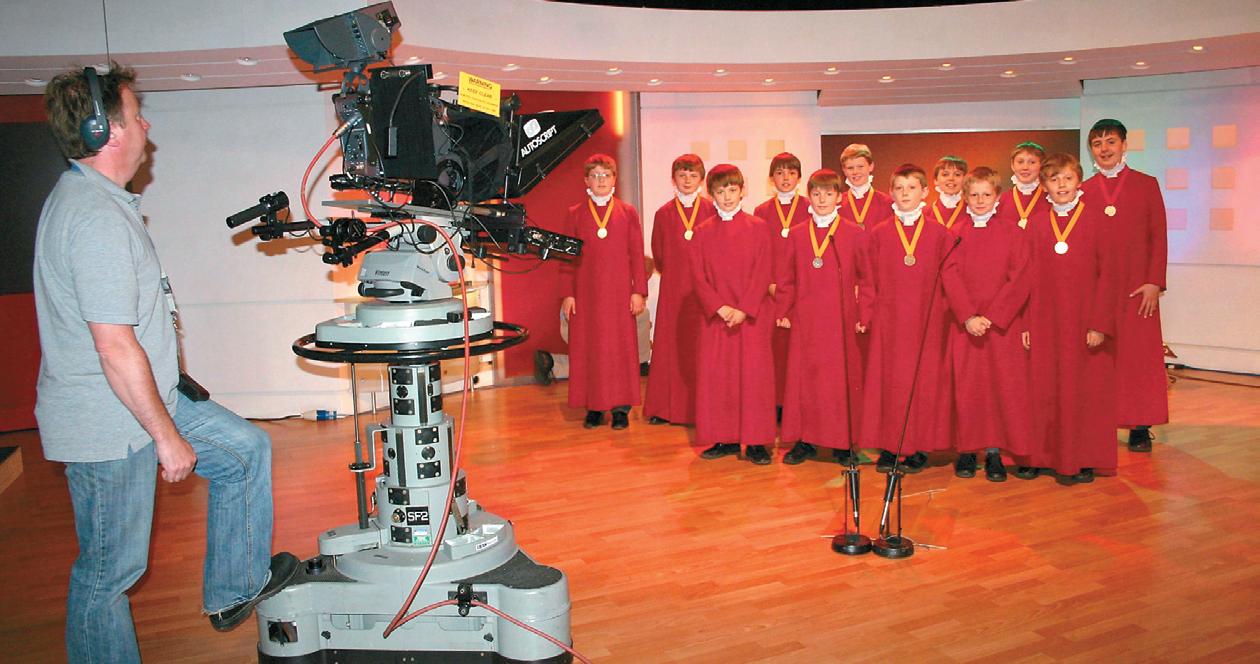
chorister education early on, and become lifelong admirers and supporters of our choir schools.
Society at large within our islands is in rapid transition. Despite the growth of cathedral attendance, Christianity and church attendance generally are seen as a minority pursuit and are under considerable attack from many quarters. Weekends of freedom and reading the paper, rugby or sailing, outings and visits are seen as far more pleasurable. Commitment of the sort required of chorister families, day in and day out, week in and week out, and into Christmas, and Easter, and summer holidays too for the festivals... well, the commitment and disruption are often simply too much compared to the perceived returns. To be a chorister in 2012 is counter-cultural in so many respects – sometimes these singers are simply out of step with their peers and occasionally misunderstood and deprecated. I suspect a young professional swimmer or gymnast, equal in dedication and determination and commitment, is more generally admired.
I do not, of course, know the future. I cannot see any easing of the pressures we are currently experiencing, nor do I underestimate the new problems yet to be realised. And yet... I take heart from the Queen, and suspect her words at the Golden Jubilee address, which could easily be repeated in this her Diamond Jubilee year, could also be said with reference to choir schools:
“I believe that, young or old, we have as much to look forward to with confidence and hope as we have to look back on with pride.”
God willing, we do.
The Revd Dr Brian Rees is an Honorary Canon of Winchester Cathedral. A Canadian by birth and a commercial banker for a time, he has advanced degrees from McGill (Montreal) and St Andrew’s universities. He came to the UK in 1985, and has held various senior educational posts including Headmaster of Bedford Preparatory School (which he created from two former schools), and more recently Headmaster of The Pilgrims’ School, Winchester. In both schools he oversaw significant building programmes and profound administrative changes, especially as related to routine operations, accountability, governance and funding.
Like staff of any organisation the world over these days, cathedral staff are blessed (or cursed, depending on your view) with conferences! Deans, precentors, vergers, organists, administrators, canon pastors, canon chancellors –the list is very long –though it is, of course, vital that we meet with colleagues from different cathedrals to share ideas and vision. And because ten years ago there were still areas where this did not necessarily happen, the Association of English Cathedrals set up a new group, the Cathedrals’ Liturgy and Music Group (CLAM).
CLAM’s membership includes deans, precentors, directors of music, administrators and cathedral architects, together with a representative of the Choir Schools’ Association and the RSCM. We meet three times a year, generally at Southwark Cathedral, but sometimes venturing forth for a ‘site visit’ (recent visits have included Salisbury Cathedral and Christ Church Oxford). Our chief task is to provide a forum in which all involved in liturgy and music in our cathedrals can meet to pool ideas, opportunities and problems, and provide resources to be shared with a wider constituency.
Deans, precentors and directors of music are likely to be working together already, but administrators and architects are frequently overlooked. CLAM interprets its brief widely and appreciates the importance of communication between cathedral departments: in cathedrals today, there needs to be a real understanding of
different cultures – those involved in worship and those involved in administration may seem worlds apart, but they are not; each group needs the other if the result is to be really effective. Some of our work has involved an in-depth look at remuneration of cathedral musicians, a particular area where we need solid support from our administrative staff. Similarly, when we are looking at cathedral liturgical reordering or – perhaps – lighting schemes, the best projects are those which have managed to take account of all views. It should be unthinkable to install a lighting system where the architect has no communication with those who will be using it – vergers, clergy and musicians – and vice versa –and yet it does happen!
CLAM’s recent contribution to liturgies has included material for seasons of remembrance, for diocesan occasions and for inter-faith worship (much of this being available now on our website). One particular way in
which we seek to provide support for cathedral communities is through the production of discussion papers –‘templates’, if you like, of good practice – which may be used by a cathedral to generate further thought in chapter or within a department.
Recent work has included:
• a Music Policy. How do we as a cathedral community form a policy which is creative and robust? The paper gives ideas and points for discussion.
• Preparing for BBC Choral Evensong. Are there ‘do’s and don’ts’ in this?
• How is our pastoral care of our musicians? A checklist helps start a discussion.
• What is the best process for the appointment of directors of music? Helpful information for good practice.
• Remuneration of musicians –are there general principles that should be followed?
• How do we interpret the psalms for younger musicians? A paper being prepared will give a useful compendium for choir trainers.
can we sustain them in a climate often difficult, financially and liturgically?
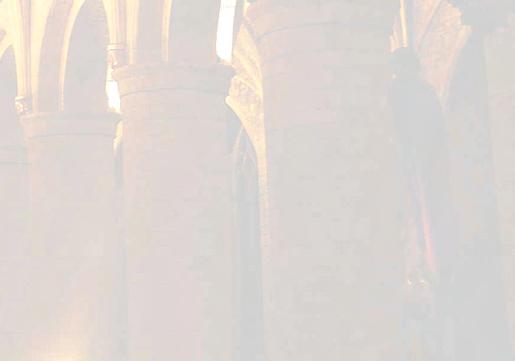
One thing is certain: the challenges of the future in our cathedrals are great, and the more we can share these concerns and work together, the better. We like to think that our CLAM forum helps to provide something of that working together, signalling that cathedrals are both places of community and a model, we hope, of what it really means to be inclusive.
Current
include working with the Liturgical Commission to find ways in which liturgical formation – how the liturgy is performed – can find a higher priority in the thinking of those training clergy. How do we put into practice the excellent liturgies we now have in Common Worship? How, too, do we encourage professional development in our cathedral communities?
CLAM has been much involved in monitoring outreach work in our cathedrals and values its links with the CSA in this area. Similarly, we value our links with the RSCM, finding ways which cathedrals can work with parishes in sharing musical resources.
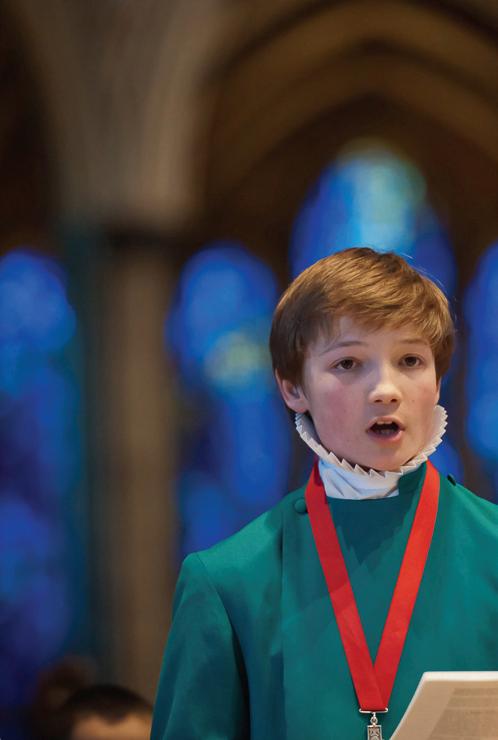
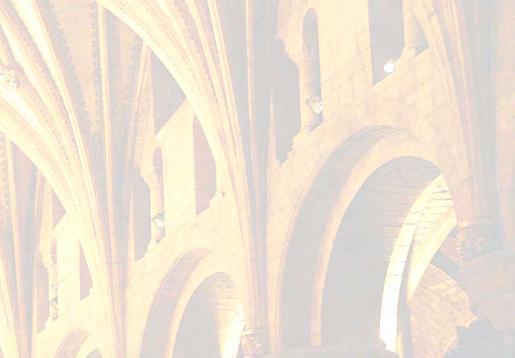
One large piece of work in which we’re currently involved is a overarching survey of the last ten years of music in our cathedrals, following on from a conference held in 2001 which brought together clergy and musicians. Both parties came up with several recommendations. Our present survey seeks to discover to what extent these recommendations have been acted upon since that date, and to what extent major new work is needed. Certainly, the last ten years have been exciting for cathedral music and liturgy – the advent of Common Worship; new links with the community through outreach; the doubling of the number of young people involved in cathedral music, with girls’ choirs and youth choirs; the increasing number of cathedrals using choral and organ scholars, etc. Yes, the developments are encouraging, but how
The other members of CLAM are, at present:
Secretary – Tim Hone; Dean – Jonathan Greener (Wakefield); Precentors – Wendy Wilby (Bristol), John Paton (Christ Church Oxford); Directors of Music –Andrew Reid (Peterborough); Matthew Owens (Wells), Katherine DienesWilliams (Guildford); Administrator – Ian Horsford (Ripon); Architect – Paul Sharrock; CSA – Richard White; Liturgical Commission – Christopher Woods; RSCM – Tim Ruffer (or representative).
Michael Tavinor is Dean of Hereford Cathedral and Chair of the Cathedrals’ Liturgy and Music Group.
Some of our work has involved an in-depth look at remuneration of cathedral musicians...








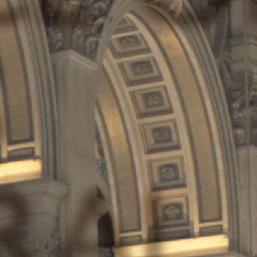


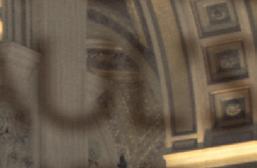


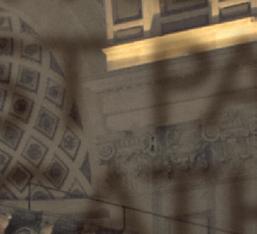






For almost a thousand years, a choral tradition has been at the heart of the It is a choral tradition admired throughout the You can become part of this living tradition by supporting the young choristers and the musical life of this great church with a gift today, or a gift in the future through your Will.
We would be delighted to welcome you at sung services to hear the choristers for yourself.





To support choristers please visit: www.stpauls.co.uk/choristers or telephone 020 7246 8333 For becoming a chorister, visit: www.spcslondon.com
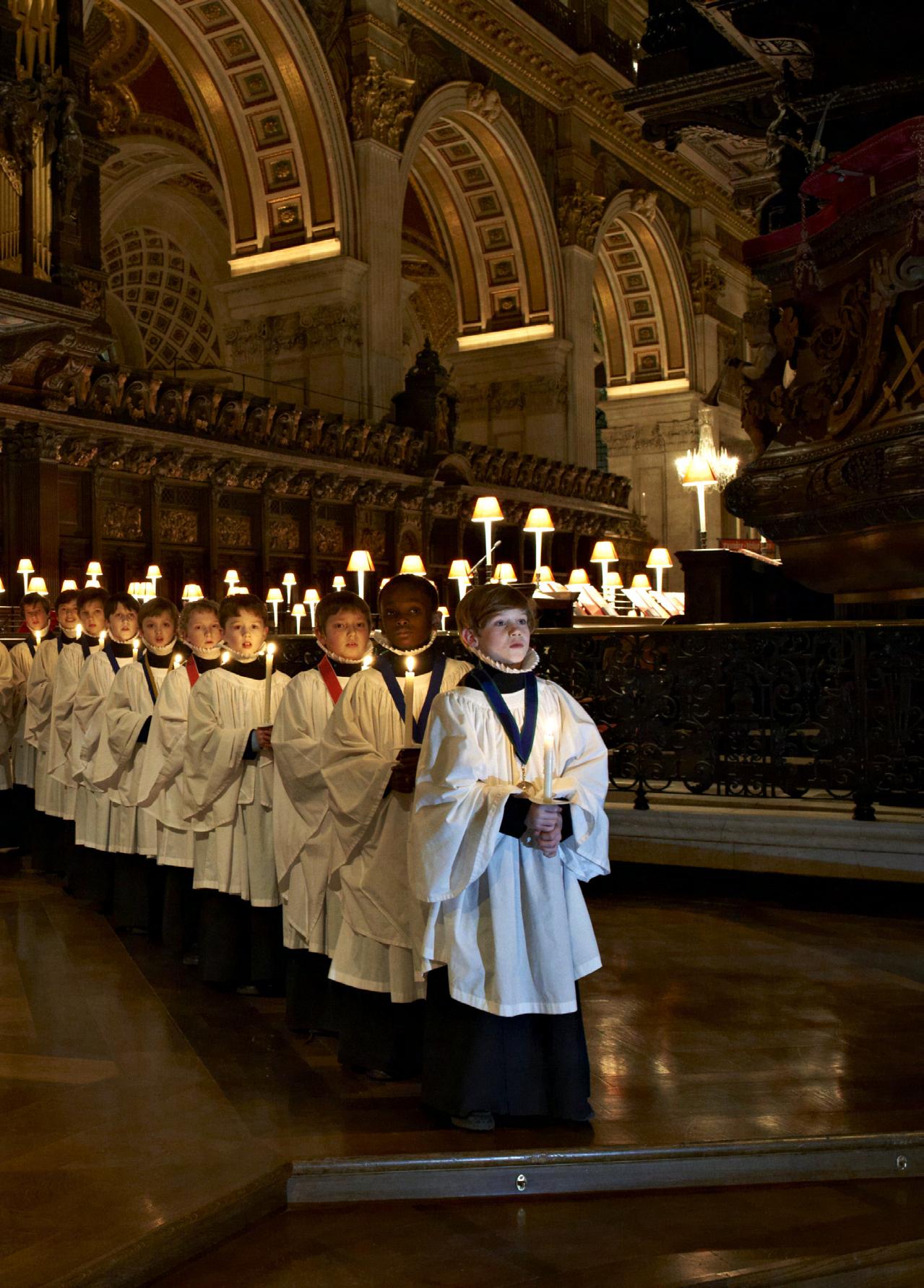
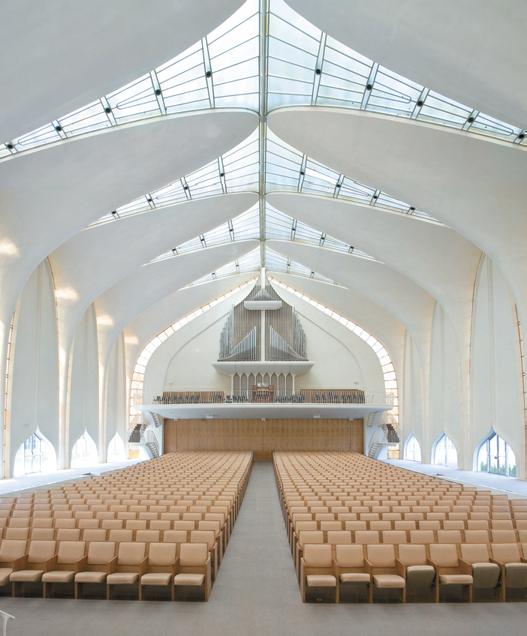
The Organ Historical Society in the US is holding a convention to demonstrate many of Chicago’s distinguished pipe organs. These range from instruments that are frequent participants in Chicago’s music life to hidden gems that have long been silent. Recitalists include many of the Chicago area’s leading organists, along with artists familiar to OHS audiences from previous conventions, though perhaps not to UK residents.
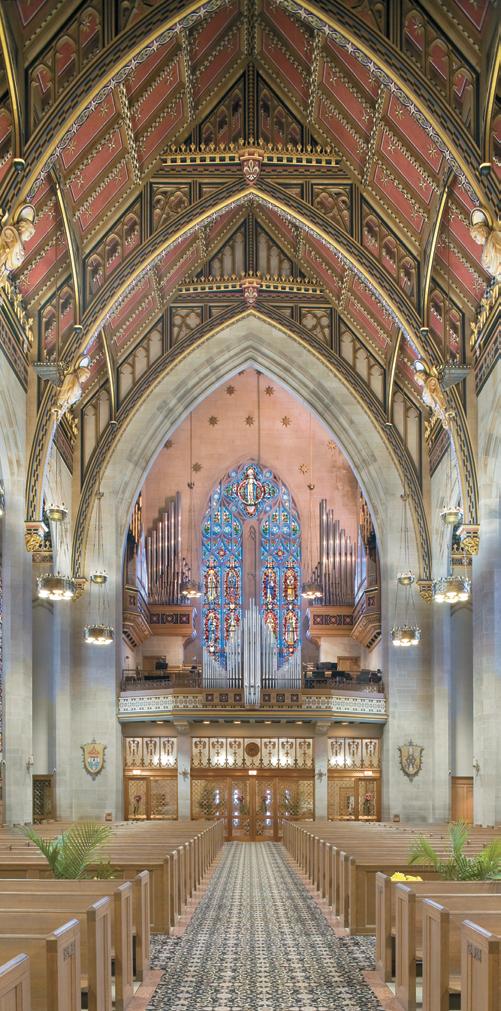
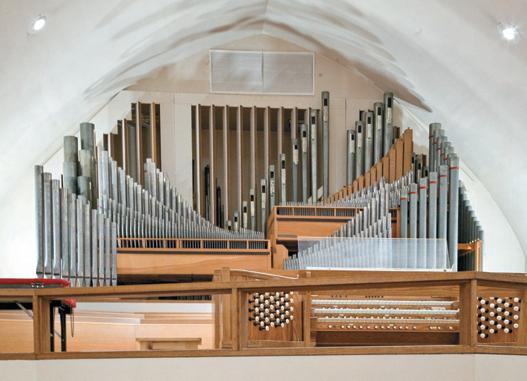
A remarkable collection of organs, some modern, some not so, will be visited. Venues include churches, cathedrals, theatres, schools and other institutions. Not only is a wide area to be visited, but highlights include hearing the second largest carillon in the world, based at the Rockefeller Memorial Chapel. This carillon, and its sister instrument at Riverside Church in New York City, were the masterworks of the Gillett & Johnston bell foundry in Croydon in Surrey. Carillons of this size had never before been made, and have not been made since that time. The Chicago instrument, comprising 72 bells and 100 tons of bronze, is the single largest musical instrument ever built. Its bells were cast over a three-year period and include a massive 18.5-ton bourdon sounding a low C#.
Recitals take place through the days of Sunday, 8 July to Friday, 13 July, the final day’s schedule including a morning lecture, a visit to the visually stunning Queen of All Saints Basilica for a recital on the large threemanual Berghaus organ and two further recitals in other churches. The day is concluded by the chance to hear the largest theatre organ in the world –a 77-rank giant –in the San Filippo ‘Victorian Palace’, which is known worldwide for its magnificent collection of beautifully restored antique music machines, phonographs, chandeliers, art glass, steam engines, and other functional mechanical antiques, displayed within a spectacular French Second Empire setting.
Should the Chicago trip appeal to you, an FCM reader, Constance Bradley, will be proud to offer tea to all FCM members. You can contact her through the Editor, and find further details of the convention on www.organsociety.org/2012/schedule.html
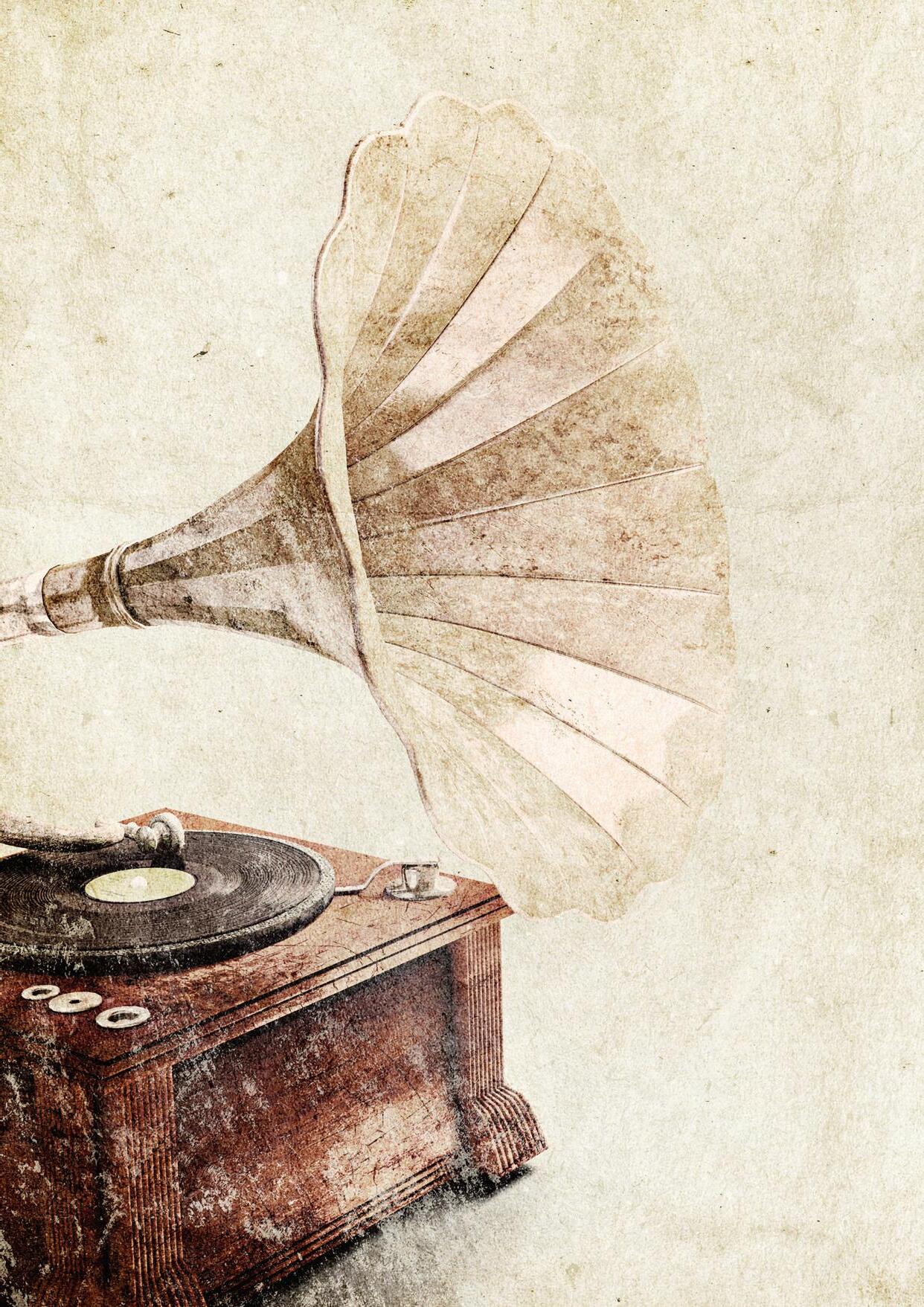

I wonder how many of you have been to an orchestral concert and felt so uplifted by the performance that you stopped at the concert hall shop on the way home and bought the CD?
Likewise, you attend an organ recital at your local church or cathedral; at the end of this stirring performance the enterprising organist hot-foots it to the rear of the nave to direct you to his batch of CDs in the hope of supplementing his meagre recitalist’s fee. Feeling sorry for his impoverishment, you dig deep and purchase two of his discs.
You arrive home anxious to listen to your new recordings while the original sound is still in your head, switch on the hifi and settle back in a state of warm anticipation. You listen carefully, but something is missing. Actually, there’s a great deal missing – atmosphere, volume, space, ambience and, in the case of the cathedral, the clouds of frozen breath suspended in the air. However, if the recording engineer and the loudspeaker designer have done their respective jobs properly, most of the various sections of the orchestra and organ may well be adequately reproduced, except that many of the lower-pitched instruments of the orchestra, when descending down to their lower reaches, are barely audible and this includes the 32ft organ pipes in the cathedral.
All very low-resonance instruments, which include the double bass, contra-bassoon, tuba, bass trombone, harp, piano and orchestral bass drum (this latter being pitchless) have fundamental frequencies down to, and sometimes below, 40Hz (cycles per second). In the case of the 32ft organ pipe, it is conveniently 32Hz (32.7 Hz if you’re fussy).
The one thing these instruments have in common is their ability to move large quantities of air, hence their commensurate size – and thereby hangs the problem of your


home-reproducing equipment, (unless of course, it is a very large system indeed). The radiating area of the bass drum, for example, is in the region of 8sq ft. so it is hardly surprising that our small domestic loudspeakers sound a bit puny at the lower end of the scale.
There are many time-honoured and well-documented ways of extracting deep bass response from loudspeakers, and all of them (excluding electronic trickery) involve size – just as with the aforementioned instruments, large quantities of air have to be moved. Commonly, these ways take the form of big bassreflex (phase inverter) tuned enclosures fitted with large diameter low-resonance loudspeakers, with extensive diaphragm travel to move the copious amounts of air necessary for bass reproduction.
However, the method to which my thoughts were directed –when I was considering building my own system – is just about as old as sound reproduction itself. It works in an entirely different way from that mentioned above, and is also much more difficult to accomplish. Put loosely, it exchanges volume for pressure.
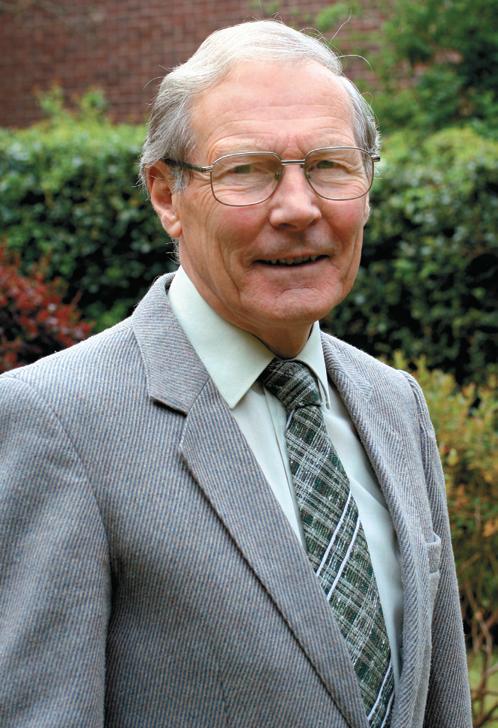
Most readers, particularly our more senior members, will be familiar with the old acoustic gramophone with its large expanding horn which considerably increased the efficiency of the machine. With the advent in 1925 of electrical recording and – more relevant here – the moving-coil loudspeaker, new and exciting possibilities opened up. (Incidentally the inventors of the moving-coil loudspeaker were two American engineers named Rice and Kellogg which led to unfounded accusations that they were responsible for

the snap, crackle and pop emanating from the shellac discs!).
So using an expanding horn for sound reproduction is not a new concept. The length, expansion and mouth area (the open end) of the horn dictates its low fundamental cut-off frequency. For the deep bass this means a long horn, and to make these domestically acceptable some manufacturers resorted to the technique of folding the expanding shape by means of internal panelling within the main enclosure. Some ingenious designs appeared but were compromised by the sound waves having to follow a tortuous path – a compromise I was anxious to avoid.
We moved into our present house in 1972 – a substantial Victorian detached property which boasted a room with the splendid dimensions of 23’6” x 14’6” x 10’ high, which by good fortune approximated to the so-called ‘Golden Ratio’ of 1:1.6:2.5 for height, width and length. Rectangular rooms having these proportions have been shown to be superior in breaking up or modifying various undesirable resonances between the walls. This room offered a marvellous opportunity for a no-compromise horn. (The theory I followed, published in Hi-Fi News magazine in the early 1960s, was the work of the late John Crabbe.)
Given that the requirements were governed by a lowfrequency cut-off of 30Hz, calculations showed that each horn – one per channel – required a mouth area of 5½sq ft., a throat area of 36sq ins (for an 8” diameter loudspeaker) and an overall length of 9’3”. To fulfil these parameters meant that the construction would be fairly massive and raised the question of where to site them. After much deliberation there was only one suitable place – they had to go under the floor. There is no stereophonic separation at such low frequencies, and a single horn combining both channels was contemplated; but in the interests of structural integrity and playing for safety it was decided to construct two separate horns which could be built side by side and as a result share a
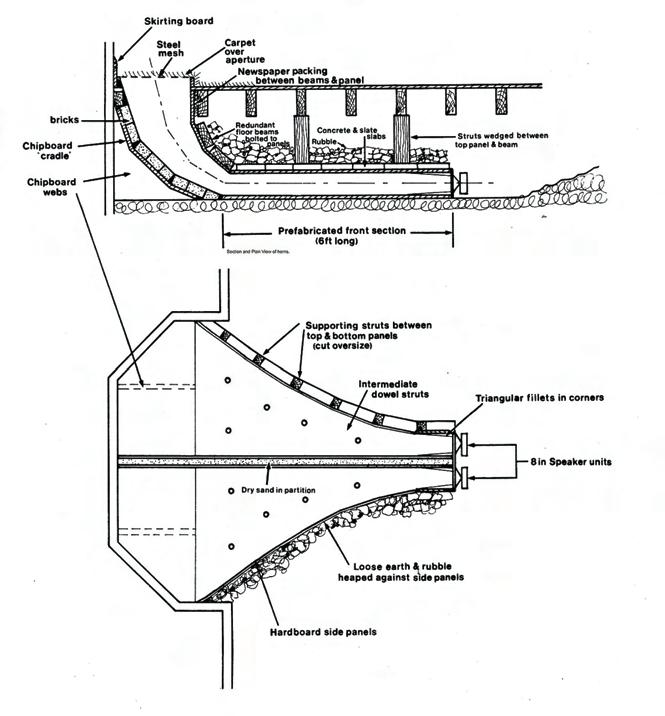
common mouth area of 11sq ft. under the bay window.
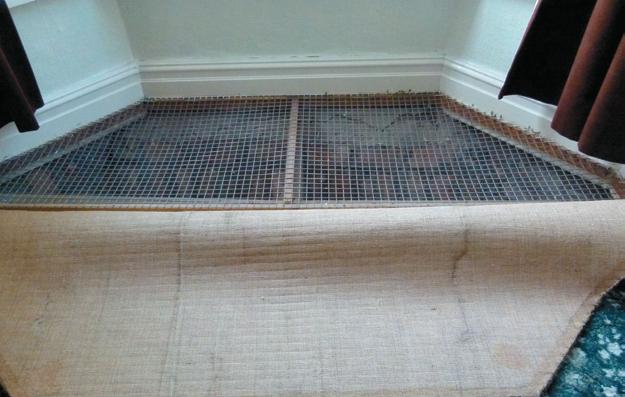
A small trap door was cut into the floor through which I managed to squeeze with reasonable comfort (well, I was only 40 at the time). Under-floor inspection revealed a sub-floor consisting of old bricks and rubble with about 3’ headroom at the bay end, rising towards the rear end of the room. After taking many measurements and with much head-banging on the joists, I surfaced and began to draw up the plans. (At this point, readers will be forgiven for doubting the writer’s sanity. It has long been suspected that those who, like me, were privileged to work in the audio industry were allocated more than their fair share of pottiness.)
Rather than bore you with too many constructional details, a few brief notes will suffice. The first step was to cut away the floorboards and remove two joists in the bay to open up the required mouth area. The loose bricks and rubble were then cleared rearwards from the bay until there was sufficient space and headroom for the entire horn length. A layer of dry sand was then spread to take up any remaining irregularities.
A 6’ section of each horn was prefabricated prior to being put into place beneath the floor. These two were of flat crosssection at an internal depth of 7” and expanded horizontally outwards. They were constructed of ¾” chipboard for the top and bottom panels, with the outer, curved hardboard sides screwed to battens previously secured to the panels, and followed the correct flare. Both top and bottom panels were cut 3” over size to allow stout vertical struts to be fitted, otherwise the hardboard sides would have collapsed under the enormous weight they would eventually have to bear. When completed, both sections were manoeuvred through the mouth aperture and into their approximate positions on the pre-prepared ground.
Much improvisation was called for in the construction of the final transition from the flat section to an expanding upwards sweep coming out at floor level. This comprised supporting webs and cradles upon which household bricks
were cemented. The front and rear sections of the horns were then brought together, with particular care being taken to make the joints airtight. Of vital importance was that the construction itself must be completely non-resonant. To this end the prefabricated units were deadened by laying very heavy slabs of paving stones over the top panel, these then being piled high with an assortment of bricks and rubble. Shovel-loads of loose earth were heaped against the side panels, rendering them quite inert, and the 2” gap between right and left sections filled with sand.
Because the mouth would be carpeted over and would therefore be invisible, in order to prevent the unwary from falling unexpectedly down the hole when stepping up to the window to, say, admire the garden, a stout 1” steel mesh was secured over the aperture. When stood upon, this mesh ‘gives’ just enough to frighten the unsuspecting culprit from venturing near again. No thick underlay was placed over the mouth area and the long, low-frequency waves pass freely through the carpet weave.
Here we need a brief word about the loudspeaker drive units. The benefits of very high flux density, allied to a relatively light diaphragm, are well recognised for horn loading. The original ones fitted were made especially for me – basically 8” units but with massive magnet systems usually reserved for 15” loudspeakers – which provided an enormous amount of total magnetic flux, thereby exerting extremely tight control over the diaphragm movements. Alas, after many years of sterling service these unique drivers expired, but are no doubt enjoying their after-life in that great hi-fi demonstration room in the sky. Fortunately I was able to replace them with another pair of extremely high-quality commercially-available units.
The bass horns were now complete. The question then arose as to what to use to cover the rest of the range, from the upper bass through to the high frequencies. Renowned for their clarity and unrivalled neutrality, the Quad ESL63 electrostatic loudspeakers were an obvious choice. Designed for use as full-range loudspeakers in their own right, they have a flat response from 20KHz down to 50Hz before falling away quite rapidly below that figure.
Some form of dividing network was necessary to allow both sets of loudspeakers – horns and electrostatics – to operate over their optimum ranges. This was accomplished by means of an electronic crossover network fitted with gain controls for fine-tuning the horn output to match that of the electrostatics, and to ensure a seamless transition between the two. It also required two sets of stereo power amplifiers, one each for horns and electrostatics, plus a pre-amplifier into which the ancillary equipment – CD player, tuner, tape etc – were connected.
The first moment of truth had arrived. Oscillator sweeps confirmed the generally smooth low-frequency response apart from a room resonance hump at just over 100Hz, and after much experimentation the crossover network was set to give a rapid roll-off at 80Hz, the ESL63s taking over at this point. This effectively removed most of the bottom octave from those loudspeakers, giving them greater power-handling capabilities if required.
Having dealt with the technicalities, the second and most vital moment of truth arrived – the musical one. The ear can be a very mischievous device. If you are pre-conditioned into expecting an improvement then you will hear it even though there isn’t any. Fortunately, in this case there was not the
slightest doubt. The supreme quality of the ESL63s has already been acknowledged, but particularly rewarding now is the effortless extension into the very deep bass achieved with a weight and solidity which so dramatically underpins the reproduction of large-scale orchestral, choral, and perhaps most of all, organ music. It is not just the depth of reproduction to which the system responds, but the remarkable articulation of those low-pitched instruments which makes it so satisfying to listen to. Forty years on, these still have the power to thrill. Most telling of all, perhaps, has been the often euphoric reaction of many professional orchestral musicians, several cathedral organists, and even a few of our more respected, if hard to please, golden-eared audio fraternity who have dropped in from time to time.
Any intending emulators amongst the readership – and I’m sure there will be many already taking up the floorboards –should heed a cautionary tale. Just a few weeks ago one of the drive units started to malfunction and I had a problem. Could I get under the floor via the trap door to replace it? Mrs Walker voiced her disapproval in no uncertain manner, but the bottom octave was at stake here. So yes, I did manage to get under the floor (with difficulty) and spent about an hour replacing the faulty unit. The problem was getting out again, and with wonky knees objecting excruciatingly it took about ten minutes to eventually surface.
Well, I did warn you about audiophiles being potty. Mrs Walker’s comments are unprintable.
Colin Walker began his working life as an engineering draughtsman. A long-standing fascination with sound reproduction, driven by a love of great music, set him off in a new direction, first as sales representative for a loudspeaker company, then sales manager for a firm of amplifier manufacturers. In 1970 he became a self-employed representative for many high-end hi-fi products, and in 1982 (with his wife Janet as export director) began manufacturing high quality turntables, many of which were exported to over twenty countries throughout the world. In semi-retirement he returned to his first love of loudspeakers, designing a range of three models for a well-known loudspeaker manufacturer, and in retirement has retained an enthusiasm for the subject. He has been an active member of the cathedral congregation for over 50 years and a keen supporter of the traditional BCP Sung Eucharist and Mattins services, wisely retained on every Sunday at Chester.
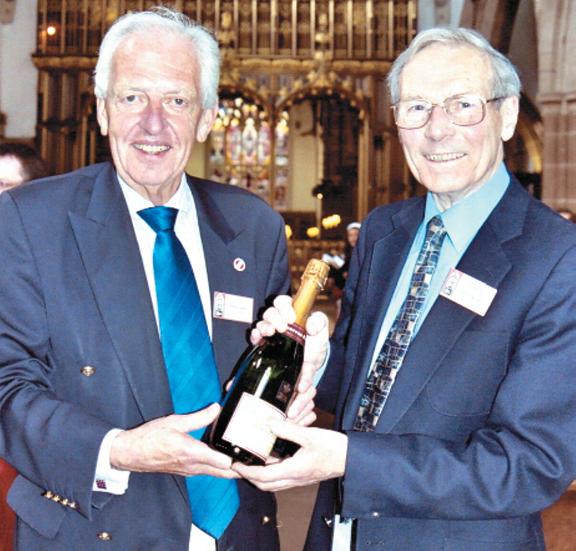
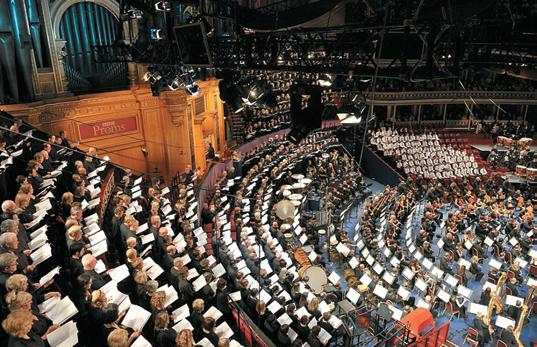
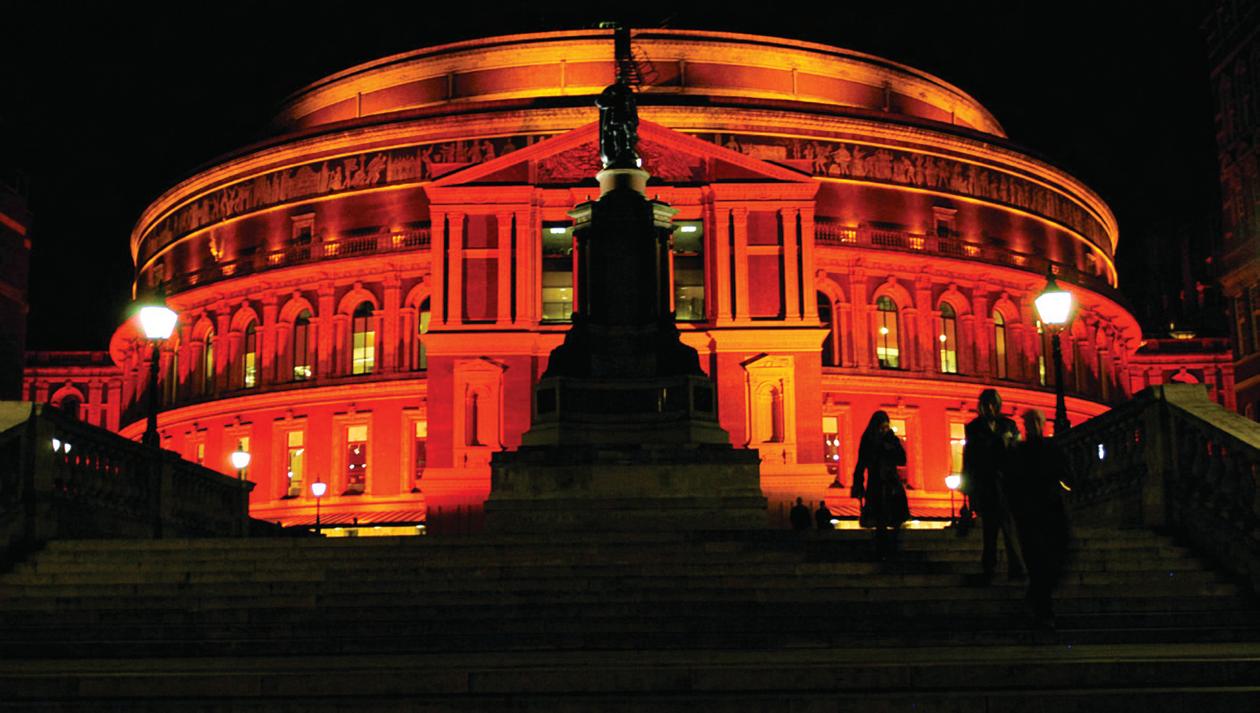
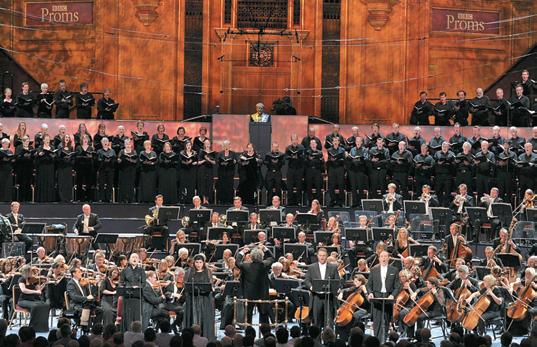
The very welcome innovation in 2011 was the introduction of Choral Sunday, which brought us major choral works in the eight Sunday evening concerts, beginning with the gargantuan Gothic Symphony (No 1) by Havergal Brian. This featured 10 choirs, including four youth choirs plus two BBC orchestras, all under the impressive direction of Martyn Brabbins, who succeeded in conveying the breadth of the composer’s vision and inspired the 1000 performers to a coherent rendering of this vast score. Not given for thirty years, it took Brian eight years to complete (in 1927) and presents many problems, not least due to the unfamiliarity of the music. Its dedicatee, Richard Strauss, pronounced it magnificent. There are 31 more of Brian’s symphonies, inevitably of variable quality, but the Proms should give us more. Stephen Farr preceded The Gothic with an eclectic organ
recital, ending with a new work by Judith Bingham, all deftly played. Other Sunday highlights were an electrifying Verdi Requiem, with the BBCSO under Semyon Bychkov, and a finely driven Mozart Requiem, with four superb soloists, the CLS and Polyphony under Stephen Layton. There was also a memorable Elijah under Paul McCreesh with a top quartet of soloists and his Gabrieli Consort and Players.
The final Sunday gave us Beethoven’s Missa Solemnis, in a powerful reading by the LSO and Chorus under Sir Colin Davis, preceded by Thierry Escaich playing an exciting recital of organ works from contrasting schools, plus two fine improvisations. The previous day the new Organ Concerto by Michael Berkeley was to me a disappointment, showing no grasp of how to write an effective solo part against the orchestra, the huge Willis organ being used merely for ‘engulfing’!
The coming season contains a variety of composer anniversaries at the top of which is the 450th of the birth of Sweelinck and the 400th of the death of Giovanni Gabrieli. Major choral works are:
19 July Handel oratorio Judas Maccabaeus, with JohnMark Ainsley as Judas, Orchestra of the Age of Enlightenment and Chorus, cond Laurence Cummings
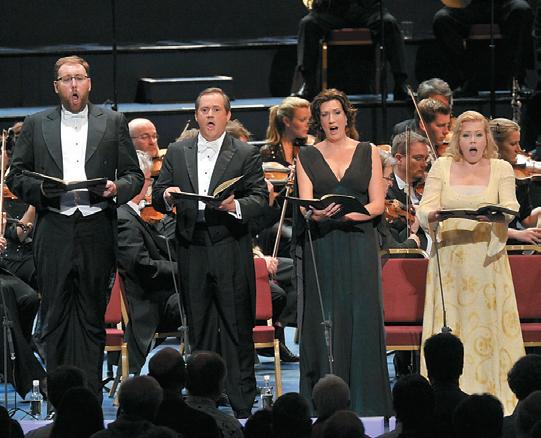
2 August Bach Mass in B minor, The English Concert and Choir, cond Harry Bicket
6 August Bernstein Mass with all-Welsh forces: Cardiff Boys’ Choirs, NYOW, BBC Nat Orch & Chorus of Wales, cond Kristjan Järvi
10 August Elgar Oratorio The Apostles, Halle Choir, Youth Choir & Orch with the LP Choir under Sir Mark Elder
11 August Berlioz Requiem, BBC Nat Orch and Chorus of Wales, cond Thierry Fischer
22 August 1612 ITALIAN VESPERS, I Fagiolini, cond Robert Hollingworth
29 August Howells Hymnus Paradisi (Proms premiere), Elgar Symphony No 1 BBCSO and Chorus & LP Choir/Brabbins

1-2 September 4.00pm Organ recitals by Cameron Carpenter –unique double event –mainly Bach. This should be a highly memorable experience for all organ music lovers. This player is astonishingly virtuosic.
This is a season full of innovations, with 76 concerts at the Royal Albert Hall. Amazingly the ticket prices are unchanged from 2011, with admission to the promming areas still at £5.00! Full prospectus now on sale and online.
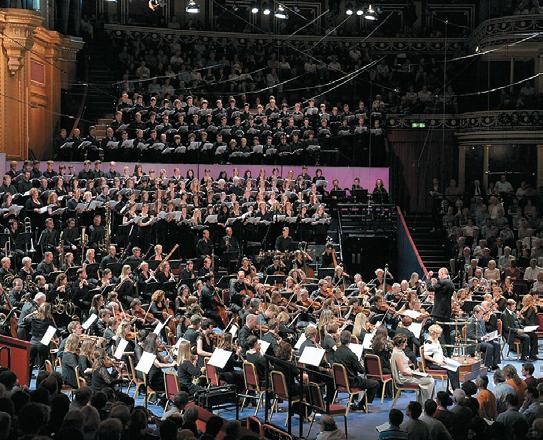

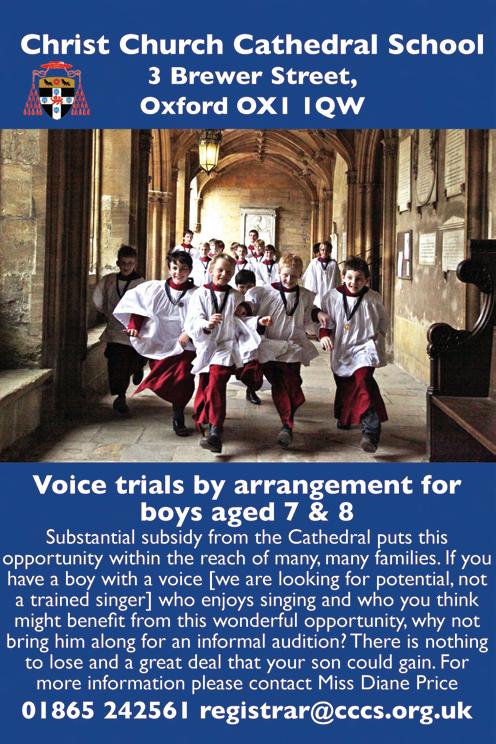
Celebration of superb music by the choirs of Chichester, Salisbury and Winchester
Cathedrals in the beautiful setting of Salisbury Cathedral
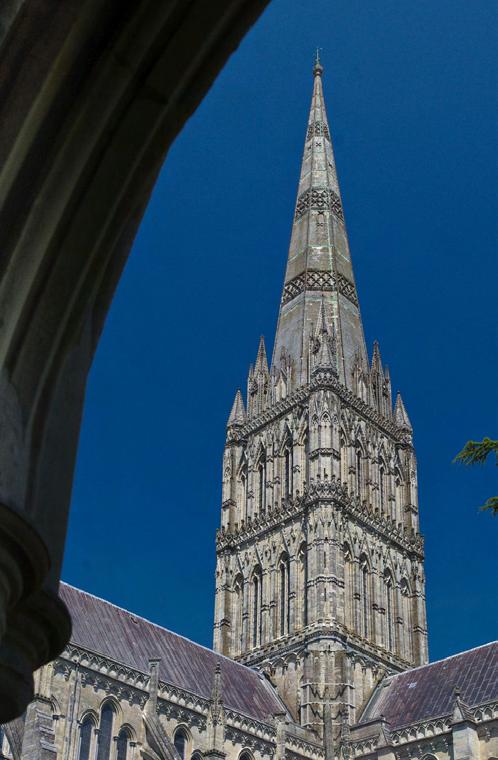
Daily services
Major concerts
Gillian Weir organ recital
Late-night Bach
‘Youth in Music’ series
is celebrating 50 golden years enriching the cultural life of the City with a programme of over 150 events in more than 55 spectacular London venues over 34 days.
Standout events in the Golden Jubilee programme include:
The London Symphony Orchestra is performing Berlioz’s Requiem in St Paul’s Cathedral (25 & 26 June).
Internationally-acclaimed guitarist John Williams is giving a recital echoing the performance he gave at the first City of London Festival in 1962 (10 July).
Street-level performances and installations, including 50 street pianos. 300 Londoners will be able to turn up and take advantage of free piano lessons on the street pianos. (24 June).
Live music sculptures at Tower Bridge and Monument, created specifically for the two icons by composer Samuel Bordoli. (8 July).
The Brodsky Quartet is performing a unique programme with a quirky twist: The Wheel of Four Tunes, with four works selected at random by the spin of a wheel onstage, from 40 choices, celebrating 40 years of the Brodsky Quartet. (2 July).
Box office: 0845 120 7502/colf.org
City of London Festival Director Ian Ritchie said: “The Festival was first created to revitalise the cultural life of the City, and in 2012, as we celebrate our Golden Jubilee, it is ranked among the finest cultural celebrations in the world. Our programme not only looks back with pride over the achievements of the past half century but also looks forward to the next 50 years.”
In this year’s Southern Cathedrals Festival (with the combined choirs from Chichester, Salisbury and Winchester Cathedrals), hosted by Salisbury Cathedral, there are five services, four ‘Youth in Music’ concerts, three major choral concerts, two ‘Late Night Bach by Candlelight’ piano recitals, a Choral Masterclass with Malcolm Archer and a celebrity organ recital by one of the greatest organists of our generation, Dame Gillian Weir.
The music for the Festival Eucharist is Frank Martin Mass for Double Choir which festival director David Halls thinks is “an absolute masterpiece which I believe the choirs will thoroughly enjoy learning”. On Saturday 21st, BBC Radio 3 will be recording Evensong which includes the wonderfully spiky and virtuosic Magnificat by Giles Swayne, Wood’s Nunc dimittis in Bb and the premiere of the SCF specially commissioned anthem by Neil Cox. Evensong is sung by Chichester Cathedral Choir on Thursday and Winchester Cathedral Choir on Friday.
There is one major choral concert each day. On Thursday afternoon the boy choristers and men of the combined cathedrals perform ‘A Year in Music’ with works well-known to the three choirs and performed for special occasions throughout the liturgical year. On Friday evening the girl choristers from Salisbury and Winchester and men from the three cathedrals perform Bach’s Lutheran Missa Brevis in F, Mozart’s Regina coeli, and Michael Haydn’s Requiem with Alison Hill (soprano) and La Folia. Saturday evening’s concert is a performance of Handel’s Messiah sung by the boy choristers and men of the combined cathedrals with Emilia Hughes (soprano) and period orchestra Charivari Agréable Simfonie.
Salisbury’s SCF also supports young musicians through its popular ‘Youth in Music’ series, this year with official accompanist Joseph Wicks, a former chorister who has been appointed organ scholar at St John’s Cambridge from next September.
SCF 2012 booking brochures are widely available from the three cathedrals or to download from www.southerncathedralsfestival.org.uk
Fellow of the RSCM (FRSCM) awards go to the following wellknown musicians for services to church music of international significance. They, and other nominees from overseas, will receive their awards at a special service in Exeter Cathedral on 16 June, 2012.
Dr James Bowman
James Bowman has made an outstanding contribution to church music during the last 45 years. As a world-class countertenor he has inspired many young singers to engage in church music, often within church, collegiate or cathedral choirs. Few singers have made such a contribution to the evolution of a particular voice part as James has to the countertenor tradition which is such a key element in sacred music.
Professor David Saint
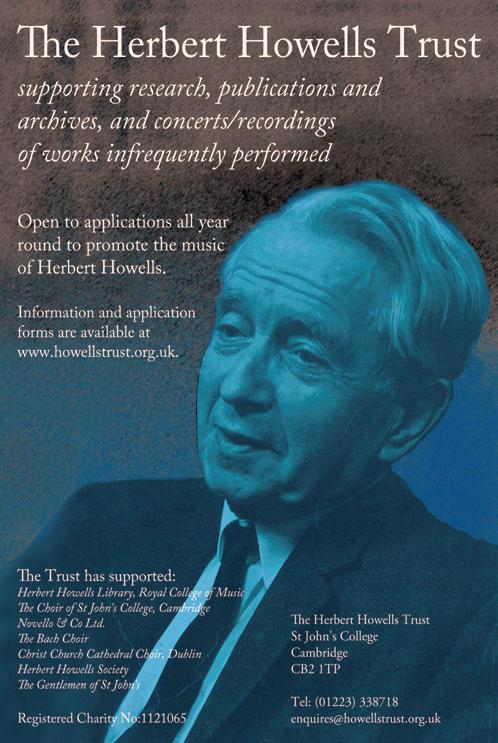
David Saint has devoted most of his professional career to church music, most notably as Organist and Director of Music at St Chad’s Metropolitan Cathedral in Birmingham since 1978. In addition, David has played a critical role in teaching and encouraging young organists, not only as a trustee of the Royal College of Organists, but also as senior organ tutor and acting principal of Birmingham Conservatoire.
Mr Paul Trepte
In a career extending over 40 years Paul Trepte has been consecutively Director of Music at St Mary’s, Warwick, St Edmundsbury Cathedral and, since 1990, Ely Cathedral. At Ely he has not just supported the establishment of its girls’ choir, but also established a hugely successful children’s choir within the cathedral, the Ely Imps, which he relishes conducting himself. He has also been a consistent and active advocate of the RSCM’s central role.
My first visit to Bath Abbey several years ago was a hugely uplifting experience and I returned several times during my holiday in that city. Recently, however, any hopes of something similar were dashed upon the discovery that giant flat screens had been mounted on pillars in the main body of the building and in many other positions too. Horribly obtrusive and clashing in their modernity with all that surrounds them, I was simply appalled; appalled that such a thing could be allowed, as much as the visually brazen defiling of this historic and wondrous place of worship.
Bath Abbey has not yet reached the point of exacting a set fee for admission, but suggests a donation of, I think £2.50 per visitor ‘for the upkeep of the building’. Giant flat screens do not fall into this category to me. One is immediately led to assume that this is where the money goes. Whether this is
All general points and comments welcomed. Please send letters by 5 September 2012 to:
The Editor, 8 Colinette Road, London SW15 6QQ or email sooty.asquith@btinternet.com
Letters may be shortened for publication.
the case or whether some grant was forthcoming matters far less than the result. I for one won’t be going back, preferring to settle down with my Peter King CD and earlier memories.
(CM would be interested to hear what other FCM members feel about flat screens at organ recitals – Ed.)
Mr Philip Moore
Dr Peter Giles raises some thoughtprovoking ideas in his interesting and uncompromising ruminations. He does, however, misrepresent Dr Alan Ridout, whose phrase ‘fragile musical miracle’ did not refer to the all-male cathedral choir but to the Canterbury Cathedral Choir School. “This most fragile musical miracle has come about by pure accident.” He used the phrase in 1971 and not in the 1980s.
The school was for boys only. Some might therefore assume that Dr Ridout was, by implication, supporting the all-

male cathedral choir. Yet even as early as 1968 he lamented the fact that the education given to boy choristers was not available to girls. In an article in the Canterbury Cathedral Chronicle of 1968, No 63, he devoted no fewer than four paragraphs to the subject.
I first met Alan in 1962 and stayed in contact with him until his death in 1996. I have no reason to believe he changed his mind during those years.
Liz Wilson (Elizabeth Leighton Wilson)
I am an American independent scholar, researching the childhood of and early musical/spiritual influences on composer Herbert Howells, in advance of a future PhD. If any of your readers met Howells and would be willing to share their memories of the man, especially if he discussed this aspect of his early life, I would be so grateful to hear from them. Contact: lizleightonw@hotmail.com or PO Box 1396, Helena, Montana 59624, USA.
Three Choirs Festival Chorus
Programme includes Haydn The Creation, Berlioz
Te Deum, Elgar The Music Makers, Fauré Requiem, Bach St John Passion, Dyson The Canterbury Pilgrims, Vaughan Williams A Sea Symphony and new works by Dobrinka Tabakova, Joseph Phibbs & Judith Bingham
Coffee, Lunchtime & Teatime Recitals, Festival Exhibitions
Brochure available 1st March
Further details from: www.stdavidscathedral.org.uk
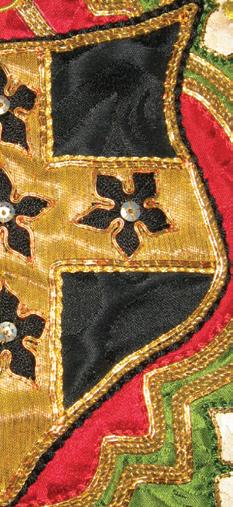
email: cathedralfestival@onetel.com
Guest conductors Diego Matheuz & Ma rtyn Brabbins
Guest artists include Dame Felicity Lott, Julian
L loyd Webber, The King’s Singers, I Fagiolini, Sarah Connolly, Roderick Williams & John Mark Ainsley
The world’s oldest and greatest choral festival !
Thomas Attwood Walmisley, son of Thomas Forbes Walmisley (1783-1866), was born in Westminster, London, on 21 January 1814, and died in Hastings, East Sussex, on 17 January 1856. He was the godson of Thomas Attwood (1765-1838) and was appointed organist of Croydon Parish Church in 1830. To broaden his educational ambit Walmisley was encouraged to study literature and mathematics, on the advice of Thomas Miller (fl. 1845), a Fellow of Trinity College. He made a career based in Cambridge and was elected Organist of Trinity College and St John’s in 1833. He in the same year took the Cambridge MusB degree but, although Organist of Trinity, upon matriculation moved across to Corpus Christi and became a member. Later that year he moved again to Jesus College and took the mathematical Tripos and continued to BA in 1838.
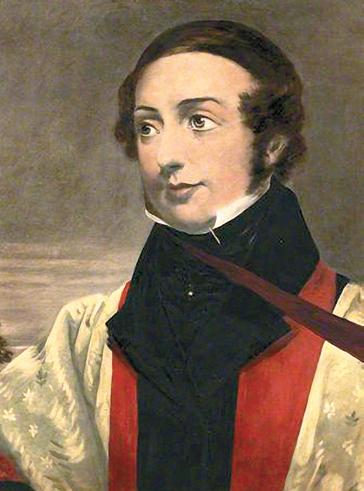
Walmisley succeeded Dr John Clarke-Whitfield (1770-1836) as Professor of Music in 1836. He became a member of Trinity College on 2 May 1838, taking his MA in 1841 and MusD in 1848. He must have been very active during term-time; the following gives us some idea of his Sunday workload:
7.15am St John’s College
8.00am Trinity College
9.30am King’s College, helping the aged John Pratt (c.1770-1855)
10.30am The University Church of St Mary’s
2.00pm University Sermon (St Mary’s)
3.15pm King’s College
5.00pm St John’s College and finally
6.15pm Trinity College
Walmisley’s church music output consisted of at least 21 anthems and a small amount of organ music, much of the latter having been lost or not published. He wrote a symphony for the Philharmonic Concerts in London but only once rehearsed there. He submitted the work to Felix Mendelssohn (1809-1837) who, upon hearing it, exclaimed, “Let us see first what number twelve will be like!” He produced numerous chamber works and choral odes, including one for the installation of the Marquis of Camden as Vice-Chancellor.
He accepted that J S Bach’s B minor Mass was probably the greatest of all choral works and was instrumental in getting the cantatas into publication, until then still mostly in manuscript.
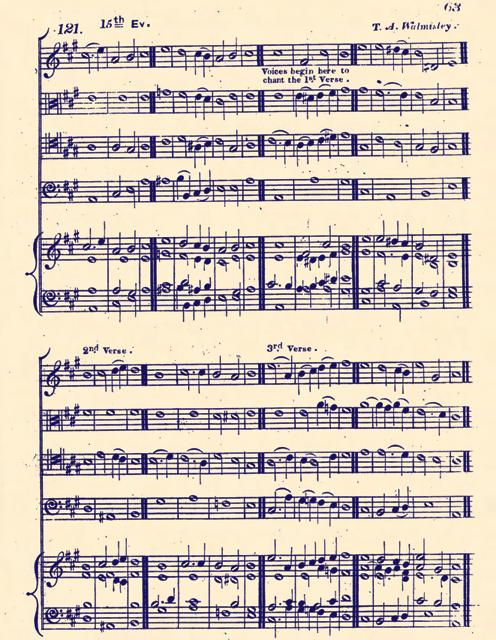
He produced The Cambridge Collection of Chants in 1845 (177
chants) and this appears to have sold well and seems to have been the main source used in Cambridge until The King’s College Cambridge Chants was produced in 1884 under the editorship of both W H D Boyle and Dr A H ‘Daddy’ Mann (1859-1929). This collection amassed 408 chants and, like Walmisley’s collection, contained many never previously published chants.
Walmisley retired to Caroline Place, Hastings, but died shortly after at the young age of four days short of his fortysecond birthday. He is buried in the beautiful churchyard of Fairlight, East Sussex.
His chant output appears to be around twenty-five double chants, one quadruple and four single chants.

Below is one of his more interesting chants, taken from The Cambridge Collection of Chants
A Quadruple Chant for Psalm 78
Simon Johnson (5 manuals)
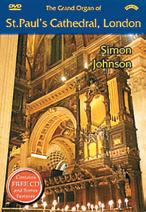
PRIORY PRDVD 5 (includes CD)
Willcocks Fanfare on Gopsal
Clarke Trumpet Voluntary
Greene Voluntary in C minor
Widor Andante Sostenuto (Symphonie Gothique)
Mendelssohn Prelude and Fugue in C minor
Karg-Elert Harmonies du soir
Bonnet Variations de concert
Handel Dead March from Saul Cocker Tuba Tune
Parry Elegy
Brewer Marche Héroïque
Barber Adagio (arr. Strickland)
Eben Moto Ostinato (Sunday Music)
Stravinsky Berceuse et final (Firebird) arr. Besty
John Robinson (3 manuals)
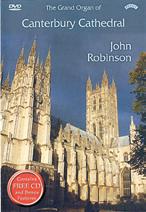
PRIORY PRDVD 6 (includes CD)
Mussorgsky Promenade(Pictures (trans Keith John) at an Exhibition)
Bach Passacaglia and Fugue in C minor BWV582
Hollins Song of Sunshine
Willan Chaconne
Debussy Footprints in the Snow (trans Robinson)
Rheinberger Passacaglia (Sonata No.8)
Ridout Path in the Wood
Gibbons Ground in A minor
Britten Prelude (They Walk Alone)
Pachelbel Canon in D (trans Robinson)
Shostakovich Passacaglia
Dubois Marche des Rois Mages
Parry Toccata and Fugue (Wanderer)
All DVDs: Picture recorded in 16:9 widescreen PAL colour. Sound: 5.1 sur round, also in stereo. CD is stereo.
These are the three latest Priory releases, featuring three very different cathedral organs, two with historic cases and one with none, under the hands of players with varying lengths of experience. All deliver smoothly articulate introductions to their programmes and instruments and play immaculately; these well-chosen and nicely contrasted recital programmes are a delight to listen to. John Robinson plays entirely from memory, and has an overhead, player’s-eye-view camera which is very helpful for studying his fingering. He is a most sensitive and polished player who deserves to be much better known; of course we get virtuoso playing from both Johnson and Millington. The Priory production team has done a very skilful job in each case, both in shooting and editing the playing and choosing cutaway material, which has all been specially shot at the locations and edited into the picture without either distracting or jarring. These are among the best professional DVDs I have seen and really deserve to be called ‘versatile’, although they stop short of offering the viewer a
Andrew Millington (4 manuals)
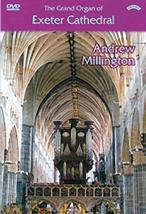
PRIORY PRDVD 7 (includes CD)
Elgar Coda (Sonata No 2)
Whitlock March (Dignity and (arr. Riley) Impudence)
Wesley Larghetto in F# minor
Bach Prelude and Fugue in E minor BWV548
Vierne Berceuse (24 pièces en style libre)



Gigout Toccata in B minor
Mozart Fantasia in F min & maj K594
Howells Rhapsody Op 17 No 3
Vaughan Greensleeves
Williams (arr. Roper)
Charpentier Te deum – Prélude (arr. Rawsthorne)
Rawsthorne Hornpipe Humoresque
Whitlock Salix (Plymouth Suite)
Handel Organ Concerto in B flat Op.4 No 2
Takle Blues-Toccata
choice of shots like the BBC/Opus Arte DVDs do. All three have interesting bonus tracks explaining the layout of the organ, which at St Paul’s is famously scattered. The St Paul’s and Exeter discs also both include tracks in which the screen is quartered, with the player’s commentary to camera over a replay of their own performance viewable in one quarter, and three different camera angles on their playing in the others. Simon Johnson at St Paul’s gives this treatment to Norman Cocker’s Tuba Tune to show which of the 108 registers (stops) (including a plethora of Tubas) he uses to build to a huge climax. At Exeter, Andrew Millington talks us through a Howells Rhapsody and shows us how he manages the registration to achieve changes in dynamics and colour. This is quite fascinating and gives even the uninitiated a glimpse into the complex art of organ playing. The recorded sound is superb throughout, and at St Paul’s it is quite overwhelming; although notoriously difficult to balance, it can never have been better done. If you have good quality speakers in 5.1 surround you will believe you are there!
Geoffrey Lord
ISBN 978-0-9570445-0-0
York Publishing Services Limited, 64 Hallfield Road, Layerthorpe Road, York YO31 7SQ.
Tel: 01904 431213 –www.yps-publishing.co.uk



Geoffrey Lord and his wife have completed a tour of all cathedrals, minsters and active abbeys in Britain and this is no mean feat. From this tour, Geoffrey has compiled a small book to enlighten the casual visitor. It is mainly an A-Z of the various features one would encounter in these buildings, ranging from Abacus to West Front. The book is packed with interesting information and good illustrations. There is an appendix which gives the location, contact details and website for all cathedrals. There is an excellent section under Architecture which provides the layman with a concise history of church architecture ranging from Norman/Romanesque through Gothic to Modern. This information is accompanied by delightful sketches which illustrate clearly the different architectural styles. For example, there are helpful definitions of Flying Buttresses and Hammerbeam Roofs. The book also has helpful appendices on Notable Architects, Disciples and Apostles and The Reformation.
In his prologue, Geoffrey Lord states that the aim of his book is to educate the visitor so that he/she can understand some of the ‘technical’ language given by guides such as bosses, consistory court and reredos. He says that the last thing a cathedral should inculcate is a feeling of inferiority or insecurity due to a lack of knowledge. Tourists are naturally curious and eager to learn –hence the title of the book. The author helpfully goes on to explain that ‘cathedrals should inspire, not just instil’. Some of the information in the book is very basic, eg the purpose of a font, but the book compares the features in different cathedrals and highlights the ones in each section that are of particular interest. At times, there is a slightly irritating overuse of parentheses although the information in the parentheses is often very informative. The language throughout is very accessible and the writer uses a friendly, unthreatening style.
There are a few references to cathedral music which acknowledge the contribution of music to the worship. Hymn and Psalm are clearly defined but there is no definition of Anthem or Motet. There is an interesting section on the organ and a list of the best organ cases is proffered. FCM is given a good advertisement under Organ (not under Choir!).
We would recommend this book, not only as an interesting accompaniment to a cathedral guidebook when on a visit, but as a worthwhile book to read at any time for anyone curious about cathedrals.
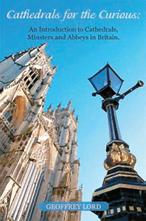 Peter and Gina Smith
Peter and Gina Smith
The Chislehurst Years
John Henderson and Trevor Jarvis
ISBN 0952805049
ISBN-13 9780952805045
This fascinating book chronicles the development of the College of St Nicolas whilst based at Chislehurst from 1929 until its closure there at the outbreak of the Second World War in 1939. The formation of the college was due to the enthusiasm of Sydney Nicholson, who resigned his post as Organist and Master of the Choristers at Westminster Abbey in 1927 in order to devote his full energies to the task. His overall vision, supported by the Church Music Society, was to foster high standards in church music
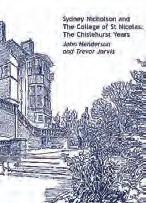
throughout the country by setting up a School of English Church Music; the college forming a focal point with its choristers and students singing daily services. This was the start of a process which led to royal status being granted in 1945 with a change of name to The Royal School of Church Music.
John Henderson and Trevor Jarvis (Honorary Librarian and Honorary Assistant Librarian of the RSCM) are to be congratulated on their thorough research, using the RSCM and SECM archives, and by interviewing former choristers and students of the college. The result is a detailed insight into its work and daily routine, the whole account being brought to life by a wealth of photographs of the buildings, and of the people associated with the venture. A chapter of the book is devoted to Sydney Nicholson, outlining his career, personality and achievements. We learn how his knowledge and enthusiasm inspired those under his guidance as Warden of the College, as well as those who sang under his baton at the festival services which he organised for massed choirs.
Appendices provide further detailed information, with profiles of choristers, students and other people closely involved with the College of St Nicolas and the English School of Church Music. I particularly enjoyed the story of David Willcocks being dared by the choristers to ride his bicycle down a very steep slope whilst a student there in 1938 –a dare which he succeeded in accomplishing. Harry Abbott, the chorister relating the tale, continues: “He was a hero after that...”.
This is a book which will appeal to all devotees of English church music and particularly those interested in the early history of the RSCM. It also provides a vivid picture of life in this country during the 1930s. We are much in debt to the authors for bringing us the full history of the college in such a delightful way. The book is thoroughly recommended.
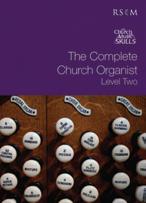
Level 2
The RSCM published Volume I of this excellent course in 2010. Volume II builds on the very basic skills taught at that level; the series is aimed at the church organist, sometimes reluctant, who has no or very little knowledge of the organ but is nevertheless a keyboard player. There are valuable instructions on how to practise, playovers, playing techniques and how to deal with nerves. Particular attention is given to finger substitution and thumb glissandi; in contrast not much time is spent on any except the most basic pedalling, but no doubt this will come in later volumes. The editors recommend as a supplement David Sanger’s organ tutor (Novello 1990) –and also two books which are a century old, John Stainer’s The Organ (Dover Publications) and Walter Alcock’s The Organ –a Tutor (Novello). Alcock (1861-1947) was a pupil of Stainer’s at the short-lived and unsuccessful National Training School for Music, now the Royal Academy. He had the unique distinction of playing the organ at Westminster Abbey at the coronations of three kings: Edward VII (1902), George V (1911) and George VI (1937), and was a noted teacher. His Tutor is widely available still.
The book is divided into sections containing hymns, worship songs, anthems, psalmody and solo repertoire. Not only is all the music easily playable, there are also notes for each piece on which registrations to use. Techniques are explained at the beginning. The finger exercises are well thought through, but a little more information on registration might be desirable. The Complete Church Organist series is designed to accompany the RSCM’s Church Music Skills programme, a distance-learning course combined with practical experience in the student’s own church –a muchneeded resource for those thrust into the organ limelight unexpectedly. This comprehensive volume will undoubtedly help many in this situation, and is thoroughly recommended.
Sooty Asquith...transforming and inspiring worship
Voice for Life - get your choristers singing with this popular training scheme for singers of all ages.
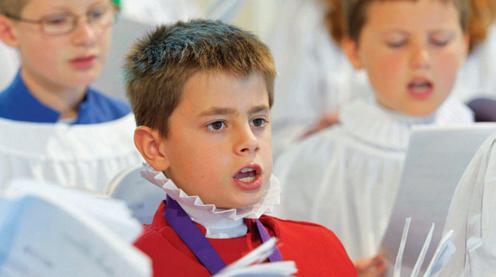
Church Music Skills - a distance-learning programme to develop the practical skills of those leading music in worship.
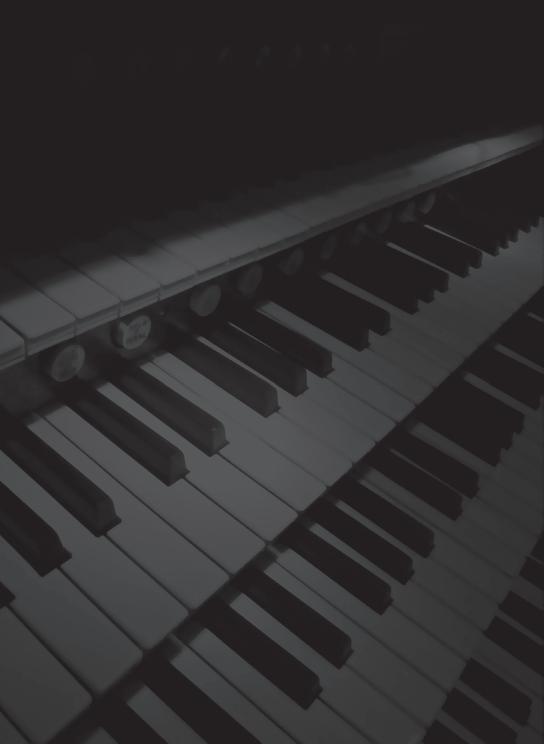
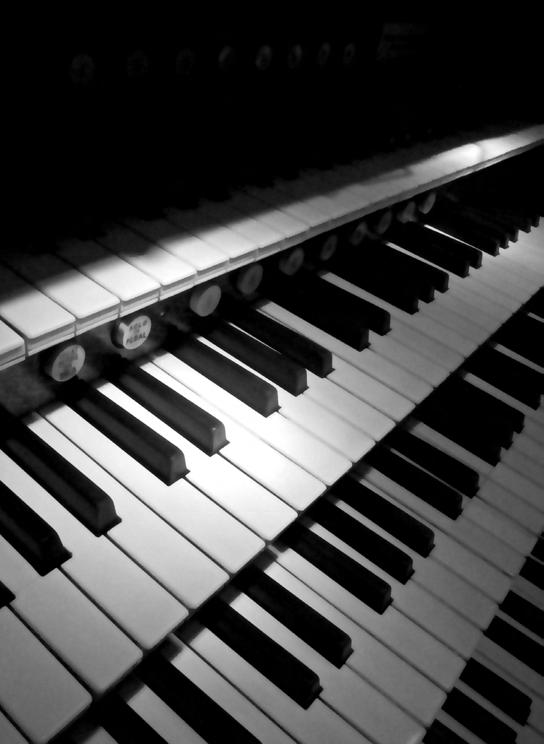
Foundation Degree in Church Music - develop the specialist knowledge which underpins music for worship. In partnership with Canterbury Christ Church University.
Become part of the RSCM community at: www.rscm.com
01722 424848 enquiries@rscm.com
Wednesdaysat7.30pm
25April
23May
20June
25July
29August
19September
17October
5December
MartinBaker
SimonPreston
PaulJacobs
WilliamWhitehead
Josephcullen
PeterStevens
GillianWeir
DameGillian’sfinalLondonperformance
Admissionfree,donationswelcome
Forfurtherinformation,contactthe MusicAdministrator | 02077989057 music@westminstercathedral.org.uk www.westminstercathedral.org.uk

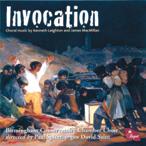
Birmingham Conservatoire Chamber Choir.
Director: Paul Spicer.
Organist: David Saint.
REGENT REGCD348
It was an inspired idea to put Kenneth Leighton and his pupil James MacMillan together in this imaginative programme, and as one would expect from such an experienced director as Paul Spicer the performances are quite first-rate; the difficulties of much of this music are formidable, but the singers never sound insecure, even if the various soloists betray their youth and remind us that we are listening to a (very good) student choir rather than a fully-fledged professional ensemble. MacMillan casts his net widely in choosing his libretti; Dante, Pope John Paul II and Revelation furnish texts for three short-ish pieces, while the monumental Cantos Sagrados sets the composer’s juxtaposition of poems by Ariel Dorfman and Ana Maria Mendoza with Latin texts from the Requiem Mass, the Stabat Mater and the Nicene Creed. This last especially is a difficult work, worthy of repeated listening; your reviewer may not be alone in finding the frequent violence of the music rather wearing. Leighton was not immune from this failing, and the setting of God’s grandeur (Gerard Manley Hopkins) with which the CD begins may also appear rather harsh, though his setting of the Latin text of Psalm 84 is an altogether gentler affair. The real ‘find’ of this disc is Missa Sancti Thomae, a complete setting of the 1662 communion service composed for Canterbury Cathedral in 1962; it is a setting of great variety with an Agnus Dei of exceptional beauty, and I fail to understand why no one seems to perform it. This above all is the work that should make a Friend of Cathedral Music buy this disc!
Timothy Storey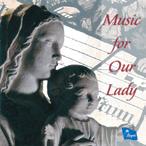
Choirs of St Mary’s Collegiate Church, Warwick. Fine Arts Brass.
Conductor: Tomas Corns.
Organist: Ruaraidh Sutherland.
REGENT REGCD345
Górecki’s Totus tuus (‘I am wholly thine, Mary’), sung by boys, girls and men, is an impressive if slightly leisurely start to this satisfying and imaginative CD; it is immediately obvious that we are in the hands of a beautifully-toned and well-blended group of singers, and the initial high standard is comfortably maintained as we hear the girls in I sing of a maiden (Hadley) and Tota pulchra es, Maria (Duruflé), the men in Biebl’s ever-popular Ave Maria, and girls and men together in Britten’s familiar Hymn to the Virgin. What of the boys? Joining the men (and the Fine Arts Brass) in the centrepiece of the programme, the rugged and powerful Missa Salve Regina composed by Jean Langlais in 1954 for the Cathedral of Nôtre-Dame in Paris, they produce a rather winsome Parisian street-urchin tone for what the liner notes describe as unison congregational choir but which was probably a group from the local seminary. Works by Judith Bingham and Flor Peeters allow us a chance to hear the resourceful and powerful Nicholson organ and complete an unusually well-constructed anthology.
Timothy Storey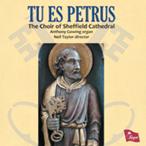
The Choir of Sheffield Cathedral. Director: Neil Taylor.
Organist: Anthony Gowing.
This admirable CD is as good an example as any of two current trends; first, that music of a quality unimaginable a generation ago is now to be found in what we used to call ‘parish church cathedrals’, and second, that the really difficult and unusual repertoire is more often than not entrusted to
the girl choristers, perhaps because they tend to sing fewer services than the boys. The disc under review does not reveal on the outside that ‘Sheffield Cathedral Choir’ is just the girls and men, and that is frankly rather naughty. That said, no reasonable person could fail to enjoy the singing; granted that the men’s vocal quality is somewhat variable, one is nonetheless captivated by their sheer commitment and energy in Duruflé’s demanding Messe ‘Cum Jubilo’ for men’s voices in unison, one of three settings of the Ordinary in this programme; the others (for full choir) are Jonathan Dove’s increasingly popular Missa Brevis, and a stupendous Grande Messe Solennelle (in French) composed in 1997 by Thierry Escaich, Duruflé’s successor at St Etienne-duMont, Paris. The Sheffield choir gave the work’s first UK liturgical performance in June 2010 and is clearly in complete command of its striking idiom and obvious difficulties. And what about St Peter, to whom the cathedral is dedicated and after whom this disc is named? His honour is just about satisfied by the inclusion of four motets: Britten’s tiresome Hymn to St Peter, Carl Rütti’s St Peter and St Paul (a fine piece – I like this man’s music) and two settings of Tu es Petrus, Duruflé’s delicate and familiar miniature and an absolute blockbuster by Widor which is a stunning opening to the proceedings and gives the tenors full licence to throw caution to the winds. Wonderful!
Timothy Storey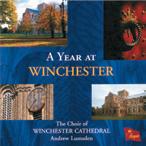
Wood Hail gladdening light; Tavener God is with us; Dove The Three Kings; Byrd Senex puerum portabat; Purcell Hear my prayer, O Lord; Bruckner Ave Maria; Sweeney Litany; Quem quaeritis; Stanford Ye Choirs of New Jerusalem; Gowers Viri Galilaei; Elgar The Spirit of the Lord; Sheppard Libera nos salva nos; Rutter
Winchester Te Deum
Winchester Cathedral Choir (boys, girls and lay clerks).
Director: Andrew Lumsden.
Organist: Simon Bell with Richard McVeigh.
REGENT REGCD372 TT 65:04





This CD is a delight from every possible angle. The choir is a superb ensemble, and the recording does them excellent service. Gary Cole (Regent Records) has been very clever at giving the listener a real sense of the space the singers are working in without that acoustic envelope fogging the music in any way. Also, the organ is integrated into the sound space with great skill. Perhaps I should declare an interest; a long time ago I was a chorister there, and first learnt the organ there under Alwyn Surplice.
The programme A Year at Winchester is an appealing mix of music that does exactly what the title would lead you to expect. Highlights for this reviewer include two pieces by a one-time lay clerk at the cathedral, Donald Sweeney, written for Palm Sunday and dawn on Easter Day, performances of great power and sensitivity; Jonathan Dove’s Epiphany piece The Three Kings is excellently done; Patrick Gowers’ Viri Galilaei shows off the choir’s ability to keep long lines of slow-moving music alive to splendid effect. Organist Simon Bell is a brilliant collaborator; listen to the Elgar The Spirit of the Lord, for example. In all of this Andrew Lumsden’s skill and dedication as a choir director shines out. Small wonder that many just now regard the Winchester Cathedral choir as one of the very best in the Anglican communion. Recommended without qualification.
Roger JuddTallis O sacrum convivium; Byrd Haec dies; Christ rising again; Weelkes Hosanna to the son of David; Mozart Laudate Dominum; Hovland Toccata Nu la oss Takke Gud; Stanford How beauteous are their feet; Dyson Evening Service in D; Dove Seek him that maketh the seven stars; Beaumont Adorate Deum; Alain
Litanies; Caesar Missa Brevis Cappella Regalis; Oxley O gladsome light. The Boy Choristers, Girl Choristers and Choral Clerks.
Director: Kerry Beaumont.
Organist: Alistair Reid.
HERALD HAVPCD 369 TT 60:37
This CD arrives as Coventry Cathedral gets ready to celebrate its Golden Jubilee in 2012. As a snapshot of musical life in the cathedral, it is an
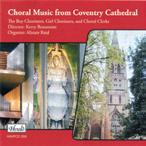
impressive disc, and shows that the choral scene in Basil Spence’s building is in good heart.
The disc opens with a group of pieces from the 16th century by Anon, Tallis, Byrd, and Weelkes. The Tallis is a very well-controlled performance of O sacrum convivium and is contrasted with Byrd’s Haec dies which is given suitably exuberant treatment. Staying in the season of Easter, an extended English verse anthem by Byrd, Christ rising again, is one of the highlights of this CD. It is the only piece on the disc to feature the boy choristers and, in light of this performance, one has to express some regret at that. Two boy soloists sing with conviction and complete assurance, and the sound of the ensemble is totally natural.
I imagine that the inclusion of the Laudate Dominum from Mozart’s Vespers K339 in this otherwise English programme of choral music was dictated by the presence of a promising young soloist, Ella Rainbird-Earley, who produces a lovely open sound and shapes the phrases most musically. If her breath control isn’t quite up to Mozart’s long lines, she disguises the fact very well. Ella also features in Jonathan Dove’s Seek him ..., one of a growing number of fine pieces to have come from Dove’s pen. The choir’s director as composer is heard in a lively Adorate Deum which is performed with élan.
Missa Cappella Regalis by Anthony Caesar, sometime Sub-Dean of the Chapels Royal, is a model of concision yet with plenty of character, especially in the colourful organ part.
Two solo organ pieces complete the programme, played by Alistair Reid and Kerry Beaumont, and remind the listener what a very fine instrument Harrisons built for the cathedral in 1965. Herald’s high standards ensure technical excellence.
Roger Judd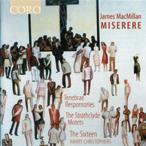
Miserere; Strathclyde Motets; O bone Jesu; Tenebrae Responsories.
The Sixteen.
Director: Harry Christophers.
Trumpet: Robert Farley. CORO COR16096 TT 79:39




Harry Christophers, in his foreword to this CD, speaks of James MacMillan in the same breath as Tomás Luis de Victoria and Francis Poulenc. The two earlier composers found their strongest voice when setting the penitential texts associated with Lent and Passiontide. I don’t think Christophers overstates the case for the ‘newcomer’. The evidence is present in just about every bar of this remarkably powerful CD. The brilliance of The Sixteen as a vocal ensemble serves to raise these performances to ‘definitive status’; they are simply flawless. Mostly recorded in the warm acoustic of St Giles Cripplegate in the City of London in January 2011; intriguingly, O bone Jesu was recorded in 2002 in St Michael’s, Highgate.
If you are already in sympathy with MacMillan’s language, you will need no prompting from me to acquire this disc. If you haven’t yet entered his sound world, then I strongly urge you to do so – this CD will be a transforming experience. No composer could wish for more committed performances of their work.
Roger Judd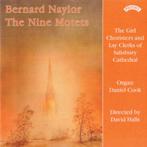
Nine Motets for Advent, Christmas Day, Epiphany, Ash Wednesday, Good Friday, Easter Day, Ascension Day, Whitsunday, Trinity Sunday. Moore Soliloquy; Jonathan Willcocks A sure foundation; Halls And all things their being have; Jubilate; Naylor Does the daystar rise?; F Jackson Alleluia, laudate pueri; Stopford Come down, O love divine; Bingham St Bride assisted by angels; Prayer.
The Girl Choristers and Lay Clerks of Salisbury Cathedral. Director: David Halls.
Organist: Daniel Cook.
PRIORY PRCD 1033
Bernard Naylor (1907-86), the son of E W Naylor of Vox dicentis fame, composed the Nine Motets for the church’s year (Advent to Trinity Sunday)
in 1951-2. Never was a disc more welcome, at least to this reviewer, for it seemed that these fine yet taxing works had fallen out of use in recent years. Taxing they certainly are both for performer and listener, and they sound so up-to-date that it is hard to realise they are sixty years old; but Salisbury’s singers are fully equal to the considerable demands made on them, though their somewhat astringent tone may not be to everyone’s taste. The rest of the programme comprises more Naylor and a selection from contemporary works in the current Salisbury repertory (Judith Bingham, David Halls, Francis Jackson, Philip Moore, Philip Stopford and Jonathan Willcocks). I found Stopford’s Come down, O love divine a strange bedfellow for the other works, its pale echoes of Archer and Rutter sounding very dated in this company. This CD is hardly ‘easy listening’ but it is a vitally important issue, not to be missed.
Timothy Storey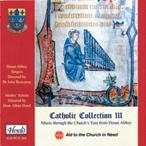
Douai Abbey Singers.
Director: John Rowntree. Monks’ Schola.
Director: Dom Alban Hood.
HERALD HAVPCD 368
This is a most delightful anthology, with much that will be new to any listener. I was particularly taken with Missa Alme Pater by John Sanders, but that is only one of a considerable number of treasures to be enjoyed, including a couple of French organ works played by Terence Charlston. The Abbey Singers are (very good) amateur or semi-professional with some professional stiffening, and they sing this varied programme exceptionally well; I should have liked to have heard more from the Monks’ Schola, for its plainchant has a wonderful serenity, even if the singers’ tone-quality is somewhat homespun. I urge you to buy this attractive CD and thereby to help Aid to the Church in Need.
Timothy Storey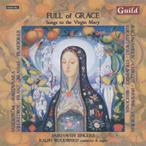
Ave Marias from Rachmaninov; Chilcott; Parsons; Lukaszewski; Stravinski; Bruckner; Villa-Lobos; Franz; Victoria Alma redemptoris mater; Brahms 7 Marienlieder op 22; Es ist ein’ Ros’ entsprungen; Praetorius Es ist ein’ Ros’ entsprungen; Sandström Det är en ros utsprungen; Rautavaara Canticum Mariae virginis. The Fairhaven Singers. Director & Organist: Ralph Woodward. GUILD GMCD 7380
The liner notes describe the Fairhaven Singers as one of East Anglia’s foremost chamber choirs, with an extensive and prestigious record of concert appearances to its credit. Sadly the beginning of this CD was less than impressive, with a curiously congested quality to the sound (more the engineers’ fault than the singers’, I would imagine) but thereafter we move happily through the eight well-contrasted settings of Ave Maria (plus an isolated Ave maris stella) which form the first half of this ingenious programme. There follow Brahms’s 7 Marienlieder, individually delightful but collectively perhaps a bit much, and his well-known organ prelude on Es ist ein’ Ros’ entsprungen which leads us appropriately to settings by Praetorius and Jan Sandström, the latter a very strange effort which to your reviewer sounds just as odd here as when it turned up in a recent Nine Lessons from King’s. A splendid, extended Canticum Mariae Virginis by the contemporary Finnish composer Rautavaara concludes a disc of more than usual interest. One must bear in mind that this is an extremely fine amateur choir rather than a professional ensemble, and it would be easy (for example) to be hypercritical of the sopranos’ tone; I prefer to regard this CD as a fine and imaginative anthology which makes for very pleasurable listening.
Timothy Storey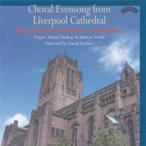
The Choir of Liverpool Cathedral.
Director: David Poulter.
Organists: Daniel Bishop and Martyn Noble.
PRIORY PRCD 1068
There is a strongly elegiac feel to this evensong; the tone is set by the opening voluntaries (Nimrod and Thalben-Ball’s Elegy) and continued by Elgar’s We will remember them as the introit. There are no fewer than three other anthems (Greene, Parry and Rutter), Psalms 23 and 121 by Walford Davies, and the Westminster Service of Howells. The work is evenly divided between the boys and the girls, and honours are about even also, with the girls (perhaps unusually) producing a less mature sound than the boys. The singing is absolutely first-rate, with an immeasurably thrilling performance of the Westminster Service with robust and confident singing backed by the mighty Willis organ. Lucky Liverpudlian Anglicans to have such fine singing in their cathedral – and lucky Romans too, for the ‘other lot’ up Hope Street aren’t bad either! Strongly recommended.
Timothy Storey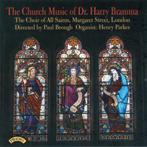
Alleluya, this is the day; The souls of the righteous; O salutaris hostia (1999); Tantum ergo sacramentum (1999); Benedicite, omnia opera; O salutaris hostia (2003); Tantum ergo sacramentum (2005); It is high time to awake out of sleep; People, look east; God is light; I will go unto the altar of God; I will receive the cup of salvation; Be filled with the Spirit; The kontakion of the departed; Late have I loved thee.
The Choir of All Saint’s, Margaret Street, London.
Director: Paul Brough.
Organist: Henry Parkes.
PRIORY PRCD 1060
The sizeable crowd that gathered at Margaret Street on Harry’s 75th birthday, 11 November 2011, for the launch of this recording was testimony to the great affection and esteem in which he is held; and the choir of the church where he spent the latter half of his working life has done him proud. The performances are quite stunning, and one would be hard put to find a better mixed-voice church choir anywhere; nor must one neglect to mention the accompaniments so ably played by Henry Parkes on the vintage Harrison organ whose restoration Harry lovingly supervised. Much of the music is quite small scale, often a response to a commission or a liturgical need, and it is finely crafted in a warm late-Romantic idiom with hints of modalism, well suited to the forces for which it is designed. By far the most substantial work is a setting of the Benedicite (O all ye works of the Lord, bless ye the Lord) specially composed for this recording, and here we find a much more adventurous and demanding idiom which one would like to see employed in the composition of a mass or a setting of the evening canticles. Make sure you buy a copy of this CD; you will, I am sure, enjoy its many delights, and you will be helping the good causes of All Saints’ Church and its music.
Timothy Storey
Missa de Beata Maria Virgine, Missa
Surge Propera
Westminster Cathedral Choir.
Director: Martin Baker.
HYPERION CDA67891
This CD may be a little late for last year’s Victoria quatercentenary, but it is no less welcome. The choir is on absolutely top form, with admirable balance and intonation and a gloriously clear and uninhibited tone. If one were to be hypercritical, one could wish for a few moments of repose, for the unrelieved robustness might become a little wearing for some listeners. The first of the two major works on this disc, De Beata Virgine, is a paraphrase mass based on the
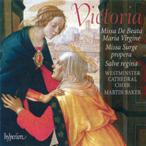
plainsong Mass IX proper to feasts of Our Lady; the other is an example of the charming custom of those days when a compliment would be paid to a fellow composer by basing a ‘parody mass’ on one of his motets. The motet is Surge propera (Rise up, my love, my fair one): the fellow composer is Palestrina; and from it Victoria constructs a characteristically colourful and impressive setting of the mass. Wonderful music, exceptionally well sung.
Timothy Storey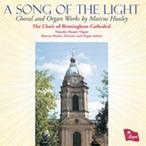
by Marcus Huxley.
The Choir of Birmingham Cathedral.
Director: Marcus Huxley.
Organist: Timothy Harper.
REGENT REGCD361





This is a CD of great charm and more than usual interest, which I have no hesitation in recommending; it offers the listener a rather special insight into a cathedral organist’s response to the liturgical and musical demands of the foundation he serves, and reveals both the breadth of the cathedral’s musical programme and the capability of its musicians. The boy and girl choristers and the lay clerks are heard separately and together, though we do not hear much of the boys on their own, a trend I have observed elsewhere. The centrepiece and highlight is The Passion of our Lordaccording to Luke, a modern-language setting first sung on Palm Sunday 2007, in which the narrative is offset by hymns including the familiar My song is love unknown; some verses are sung with organ, a brave (and successful) test of the choir’s intonation in the lengthy unaccompanied passages that precede them. Other works include carols and anthems and a number of service settings, including a complete set for the office of Evening Prayer in Common Worship. Two choral-preludes (played by Mr Huxley himself) for organ show another facet of the composer’s skill.
Timothy Storey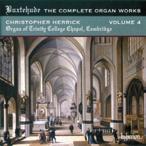
Christopher Herrick plays the organ of Trinity College Cambridge
Praeambulum in A minor; CP Ich ruf zu dir, Herr Jesu Christ; Praeludium in G minor; Canzonetta in C; Toccata in F; CP Christ unser Herr zum Jordan kam; Fuga in B flat major; CP Nun lob mein Seel den Herren; Canzona in G minor; Toccata in G; CP Gott der Vater wohn uns bei; Canzonetta in A minor; Passacaglia in D minor; Chorale Fantasia Wie schön leuchtet der Morgenstern; CP Nun komm, der heiden Heiland; CP Der Tag, der ist so freudenreich; CP In dulci iubilo; Praeludium in E minor.
HYPERION
Christopher Herrick’s journey through the organ music of Buxtehude reaches Vol 4, and is recorded on the Metzler instrument in Trinity College Cambridge. It should be said at the outset that music and organ are perfectly matched. Listened to in one sitting, the disc presents a most attractive and varied programme, a mix of large-scale pieces and shorter, mostly choralebased pieces, but it is also most satisfying to dip in and out of.
Herrick has the happy knack of getting to the heart of each piece with deft articulation and a keen ear for colour. The Trinity College Metzler can seldom have been heard on disc with such a wide variety of registrations, all of them noted in the CD booklet; this also contains an authoritative essay by Relf Clark on the music. Anyone familiar with Herrrick’s long-running association with Hyperion won’t need telling by me that this CD should be on their shelves. When you listen to Buxtehude’s invention and daring, the fact that many made pilgrimages to Lübeck to hear him causes no surprise. Herrick, by his timing and articulation, allows us to marvel afresh at Buxtehude’s fertile mind.
Warmly recommended.
Roger JuddGeorge McPhee plays French organ music from Paisley Abbey
Gigout Grand Choeur Dialogué; Franck Choral No 2; Langlais Hymne d’action de graces Te Deum; Vierne Berceuse; Madrigal; Two movements from Symphony No 3; Duruflé Méditation; Messiaen Dieu parmi nous; Dupré Three movements from Le Tombeau de Titelouze; Alain Variations sur Lucis Creator.
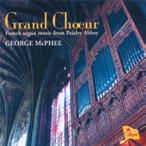
REGENT REGCD371 TT 64:02
This CD offers a double celebration, both for the instrument in Paisley Abbey and for its director of music. The organ has a number of Cavaillé-Coll ranks at its heart; it is thought these date from 1874 when the distinguished French builder built an organ for the Abbey, which then was only the nave, the rest of the building being a ruin as a result of the tower collapsing. Gradually, during the nineteenth and twentieth centuries the ruined parts were rebuilt, and the organ expanded accordingly. The latest organ restoration was carried out by Harrison & Harrison in 2009.
George McPhee celebrates his Golden Jubilee as director of music in 2013, a most remarkable landmark in Scottish music-making. This CD presents both player and organ in the best possible light. McPhee’s programme goes hand-in-glove with the instrument of course, and takes us on a journey from Gigout, through Franck, Vierne, Dupré, Langlais, Alain and Duruflé to Messiaen. All clearly played with affection, and technical assurance, and aided by Gary Cole of Regent Records, who has once again produced a fine recording.
Highlights, for this reviewer especially, are Franck’s Second Choral which is given a nicely characterised performance; the two movements from Vierne’s Third Symphony with a beautiful sounding Adagio lead into an exciting performance of the Final. Mischievously, mention should also be made of the opening track – the tuning of the organ on the final chord of the Gigout Grand Choeur Dialogué reminds us (in the nicest way!) that this instrument has French roots.

Fine music-making here –warmly recommended.
Margaret Phillips plays Bach on the organs of St Jacobikirche, Sangerhausen and Petrikirche, Freiberg.
REGENT 2 CDS REGCD308 TT 145:57


 Roger Judd
Roger Judd
individual voices of these two organs. Regent’s production is a model of how these things should be done.
Roger JuddAndrew Kirk plays the Harrison & Harrison organ of St Mary Redcliffe, Bristol
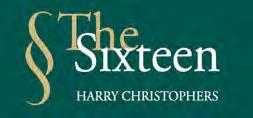
Mozart Fantasia in F minor; Sibelius Finlandia; Festing Largo, Allegro, Aria and Two Variations; Mushel Toccata; Guilmant March on a theme of Handel; Whitlock Fanfare; Wesley Air & Gavotte; Elgar Imperial March; Hollins A Song of Sunshine; Cocker Tuba Tune; Reger Introduction & Passacaglia
REGENT REGCD285 TT 73:18
This CD is a celebration of the rejuvenated organ of St Mary Redcliffe, Bristol. Recently gloriously restored by the original builder, Harrison & Harrison of Durham, the instrument is put through its paces by the resident organist of ten years, Andrew Kirk. The CD was recorded by Gary Cole of Regent Records, who must be running one of the busiest recording businesses in the UK! The production costs of the disc were underwritten by the Friends of the Music at St Mary Redcliffe.
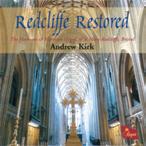
Kirk’s programme is immensely wide-ranging, but I can’t help feeling that a recital of pieces with a coherent theme running through them would have had greater musical interest. As it is, I can only think that the CD is issued for lovers of the Redcliffe sound rather than for any higher motive.
Gary Cole has worked his usual magic, and captured this powerful instrument well. I wish that I could enthuse about the playing, which at best can be described as ‘safe’. As an example, take poor old Hollins – his Song of Sunshine is described as ‘a jolly piece’ – not on this showing it isn’t! I wish I could be more enthusiastic, but this disc is really only for someone who simply must have the newly restored Redcliffe organ on CD at all costs.
Roger JuddThe latest volume of Margaret Phillips’s Bach pilgrimage features two organs that were built during the composer’s lifetime, the one in Sangerhausen by Hildebrandt in 1728, while the Freiberg was built by the great Silbermann in 1735. We know that Bach was well acquainted with the two builders, and it is tempting to imagine that he might have known and played these two instruments. Each CD is designed to present a complete programme, and it must be said at the outset that listening to each disc straight through is a delight.
CD 1, recorded on the Hildebrandt instrument at Sangerhausen, contains the Prelude and Fugue in G major (BWV 541), the Partita on O Gott, du frommer Gott, one of the Vivaldi concerto arrangements (C major, BWV 459), the ‘lesser’ Prelude and Fugue in A minor, a trio movement in G, a Fugue in C minor, and a number of chorale preludes from the ‘Kirnberger’ collection.
CD 2, played on the Silbermann in Freiberg, contains two of Bach’s greatest pieces, which open and close the disc: the C minor Prelude and Fugue (BWV 546) and the Passacaglia, together with a number of separate Preludes and Fugues and chorale preludes. Several of the pieces on each CD are of doubtful authenticity.
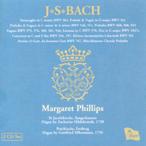
Throughout the CDs Margaret Phillips’s love of both the music and the instruments she’s playing shines out. The large-scale pieces receive performances of great authority, aided in good measure by the glorious sound of the instruments –choruses of wondrous clarity, breadth and brilliance. One of the bonuses of listening to a programme of predominantly smaller-scale works is that we get to hear many of the
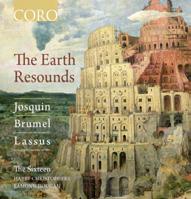

Allegro Music ................................................................27
Cambridge Summer Music Festival ............................15
Canterbury Cathedral Choir ........................................67
Christ Church Cathedral School ................................55
Campaign for the Traditional Cathedral Choir ........11
CORO CD Offer ..........................................................65
Dean Close Preparatory School....................................31
Edington Festival ..........................................................15
George Sixsmith Organs ..............................................67
Harrison & Harrison ....................................................61
Herbert Howells Trust ..................................................56
Hereford –Three Choirs Festival ................................57
IAO ................................................................................66

John Sanders ................................................................10
Makin Organs ................................................................2
Musica Deo Sacra ........................................................47
Norman Allen Group Travel –Choirs ........................11
Norman Allen Group Travel –Pilgrimage ..................35
Oxford University Press ..................................................5
Regent Records ............................................................67
Royal School of Church Music ....................................61

Salisbury Cathedral Voice Trials ..................................47
Southern Cathedrals Festival (Salisbury) ....................55
St Davids Cathedral Festival ........................................57
St Paul’s Cathedral School Foundation......................48
St Paul’s Organ Recitals ..............................................35

Viscount Classical Organs ..............................................4

Westminster Abbey Choir ............................................10
Westminster Abbey Summer Organ Series ................15
Westminster Cathedral Grand Organ Festival ............61
Introducing the first three releases in a major new series from Regent, featuring well-loved items and less familiar works, with many first recordings.
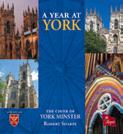
The Choir of York Minster directed by Robert Sharpe, David Pipe organ
‘One of the most satisfying compilations of liturgical choral music to come my way in a very long time.’ Choir & Organ *****
Music by Naylor, Comeau, Joubert, Carter, Shephard, Moore, Stanford, Bairstow, Jackson, Clucas, Philips, Tallis, Stainer, Haynes, Taverner, Skempton, Dering, and Bullock
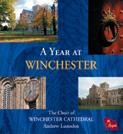
The Choir of Winchester Cathedral directed by Andrew Lumsden, Simon Bell organ, Richard McVeigh synthesizer
‘Undoubtedly one of the finest ensembles of its kind in the world.’ Classic FM Magazine
‘This is one of the premier English cathedral choirs’ American Record Guide

Music by Wood, Tavener, Dove, Byrd, Purcell, Bruckner, Sweeney, Stanford, Gowers, Elgar, Sheppard, and Rutter
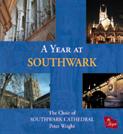
The Choir of Southwark Cathedral directed by Peter Wright, Stephen Disley organ
Music by Weelkes, Moore, Handel, Byrd, Mendelssohn, Stainer, Vaughan Williams, Lotti, MacMillan, Weakley, Stanford, Rose, Cox, Ireland and Brahms
Organ Builders
We provide all types of new instruments
New Organs
Restoration
Rebuilding
Tuning
Maintenance
We can give unbiased advice for all your requirements
Hillside Organ Works
Carrhill Road, Mossley, Lancashire OL5 0SE Tel: 01457 833 009
Fax: 01457 835 439
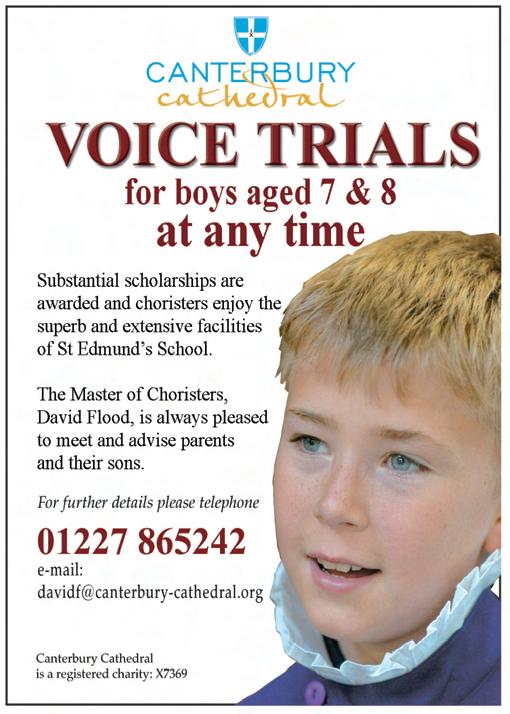
REGCD376





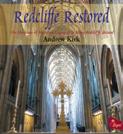
Andrew Kirk plays the Harrison & Harrison Organ of St Mary Redcliffe, Bristol
Restored in 2010, the organ in St Mary Redcliffe is regarded as one of the finest English Romantic organs ever made, and its original builder, Arthur Harrison, regarded it as his greatest masterpiece. Andrew Kirk here presents a splendidly varied programme including works by Handel, Mozart, Wesley, Reger, Elgar, Whitlock, and Sibelius.
The final release in this monumental and definitive series
ORGAN WORKS VOL. VIII
Margaret Phillips plays the organ of the Grote Kerk (Jacobijnerkerk), Leeuwarden (Christian Müller 1727)

Preludes & Fugues in D, D minor (Fiddle), A minor BWV 532, 539, 543; Prelude in A minor BWV 569, Fugue in G minor BWV 578, Fantasia in C minor BWV 562; Fantasia et Imitatio in B minor BWV 563, Fantasia in G BWV 57, Trio Sonata No 4 in E minor BWV 528, Trios in D minor & C minor BWV 583, 585; Neumeister Chorales
REGCD328
2 CD set at a special price
‘These are organ recordings par excellence... Some of the finest performances of Bach Chorale preludes on disc.’ International Record Review (on Vols I & II)
‘All played with infectious conviction,compelling and exciting, with many moments of great beauty as well as verve and virtuosity.’ Organists’ Review (on Vol. VI)
